F ish F armer
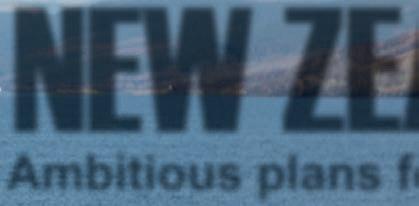

COD FARMING

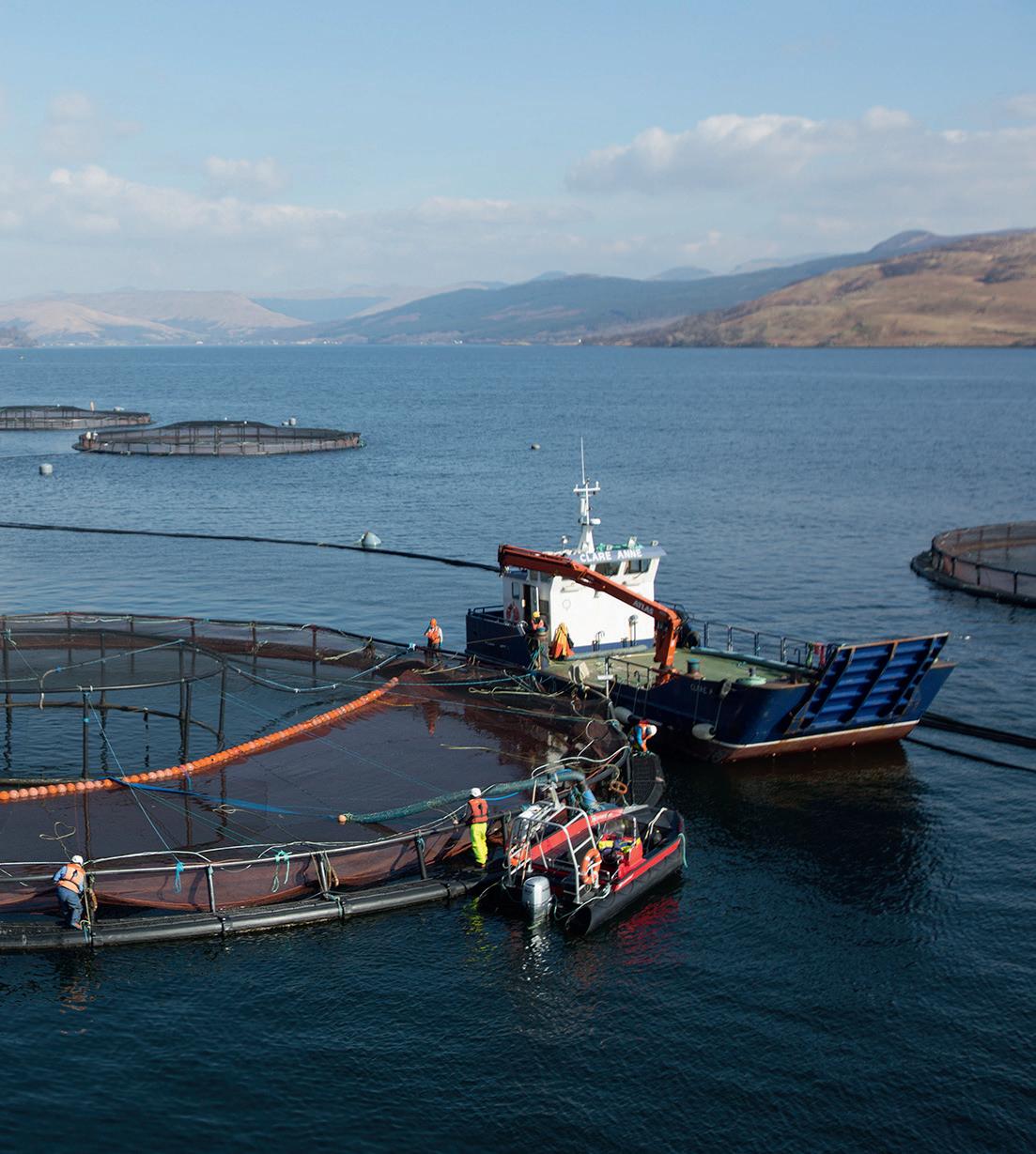




Barcelona
Expo Global breaks records Seawork 2024 What to expect in Southampton
Seafood
remarkable turnaround NEW ZEALAND Ambitious plans for aquaculture MAY 2024
A
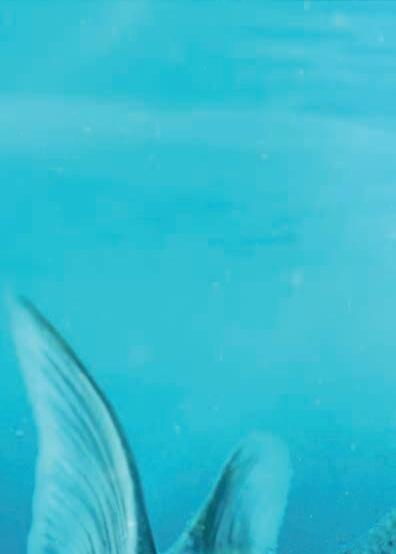






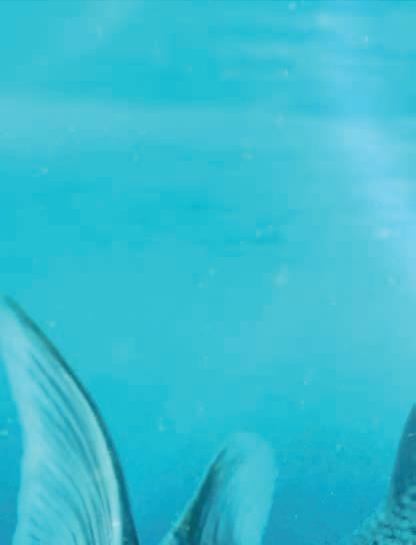















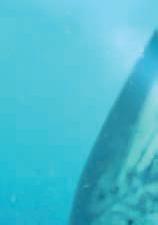



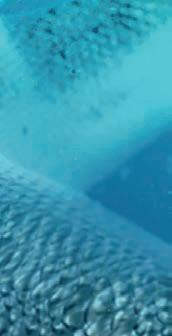




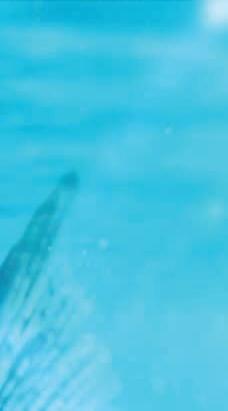




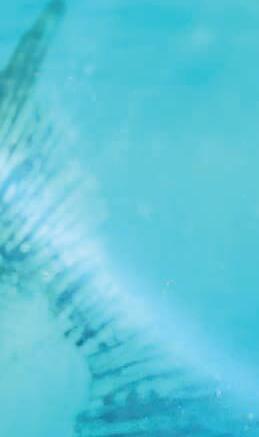


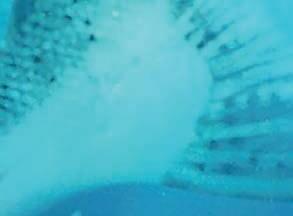
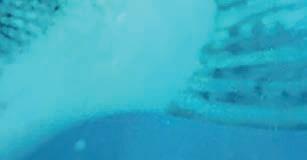
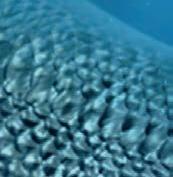
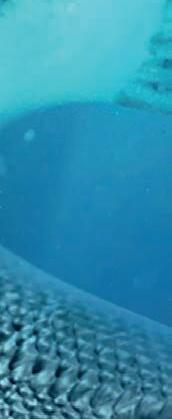








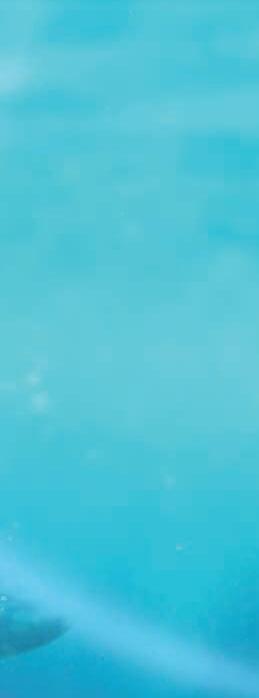

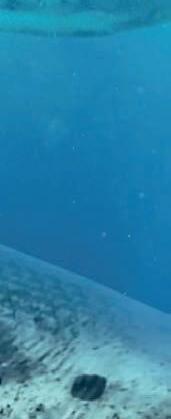
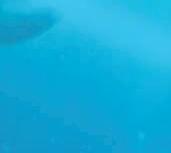

















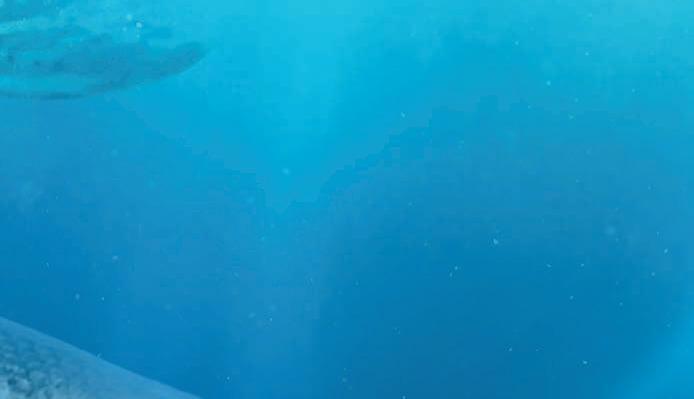
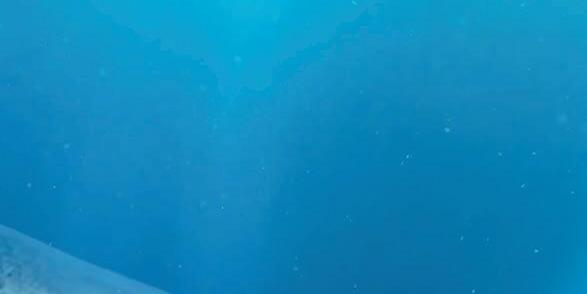
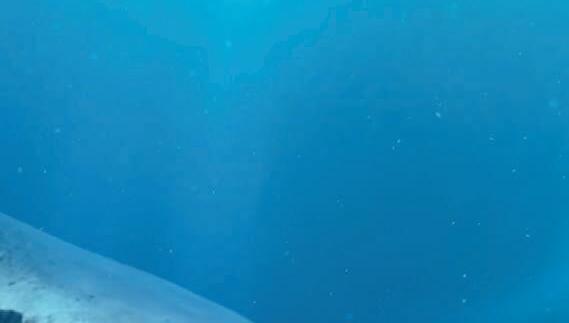















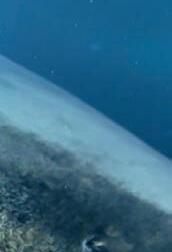




SmartFlow connects all Vaki Smart Pumps, Graders and Counters for full overview and control of the fish handling system.
To find out how SmartFlow can revolutionise your business, contact your MSD Animal Health account manager.



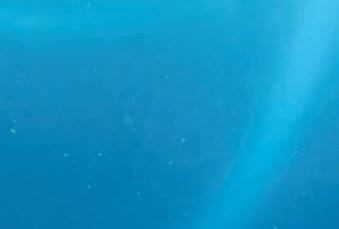


















SMARTFLOW HIGH LEVEL EFFICIENCY & ACCURACY
MSD Animal Health UK Ltd. Registered office Walton Manor, Walton, Milton Keynes MK7 7AJ, UK. Registered in England & Wales no. 946942. Copyright © 2023 Merck & Co., Inc., Rahway, NJ, USA and its affiliates. All rights reserved. AHI-AQP-220800006 LEARN MORE













AEditor’s welcome
ll too often it’s easy to focus on obstacles and setbacks. After all, it’s the negative events that very often make the news. So it’s good that this month we are looking at positive plans for growth in the aquaculture sector.
Our feature on New Zealand highlights the enormous potential of that nation as an aquaculture producer. Already strong in salmon and greenshell mussels – which have been adroitly marketed as a health supplement for people and their pets, as well as a tasty food in their own right – New Zealand is now looking to go much further. The government and the industry are not only eyeing the possibilities created by open ocean farming, but also new species, and seaweed.
Meanwhile the Norwegian cod farming sector, after many false starts over the years, appears to be in a position, at last, in which it could credibly start to make up for the restricted supply of cod in an era of tighter fishing quotas and sanctions against Russia.
The growth theme also applies to the seafood industry’s biggest trade show, Seafood Expo Global/Seafood Processing Global. As we report, the 2024 edition of SEG/SPG broke records for the number of companies, regions and nations represented and for the number of visitors.
The commercial marine industry is now looking forward to Seawork in Southampton next month, and you can read a preview of that event in this issue.
Also in May’s Fish Farmer, Aquaculture Stewardship Council Chief Executive Chris Ninnes addresses the issues raised by recent reports on human rights abuses in parts of the seafood sector, and what the ASC – as one of the leading certification bodies – aims to do about it.
The University of Stirling’s Lynne Falconer reports on a seminar on the impact of climate change and what the aquaculture sector can do to be ready, while Vince McDonagh finds out what the annual report from SalMar, the world’s second biggest salmon farmer, tells us about the group and the industry.
I hope you enjoy this issue.
Best wishes Robert Outram
Robert Outram
Serving worldwide aquaculture since 1977
Meet the team
Editorial advisory board: Steve Bracken, Hervé Migaud, Jim Treasurer, Chris Mitchell and Jason Cleaversmith
Editor: Robert Outram
Designer: Andrew Balahura
Commercial Manager: Janice Johnston
ohnston fishfarmermaga ine com
ce Administrator: Fiona Robertson fro ertson fishfarmermaga ine com
Publisher: lister enne
@fishfarmermagazine
www.fishfarmermagazine.com
Fish Farmer Volume 47, number 05
Contact us
Tel: +44(0)131 551 1000
Fax: +44(0)131 551 7901
Email: e itor fishfarmermaga ine com
ead o ce: Special lica ons e es ar 496 Ferry Road, Edinburgh EH5 2DL
Subscriptions
Subscrip�ons address: Fish Farmer maga ine s scrip ons arners ro p lica ons plc he al ngs
est Street o rne
Lincolnshire PE10 9PH
Tel: +44(0)177 839 2014
K subscrip�ons: £75 a year
subscrip�ons: £95 a year including postage all air mail
Printed in Great Britain for the proprietors Wyvex Media Ltd by Thomson Colour Printers Ltd, Glasgow ISSN 0262-9615
@fishfarmermag
Cover: Workboat and salmon pens
Photo: SAIC
WELCOME www.fishfarmermagazine.com 3
the May issue...
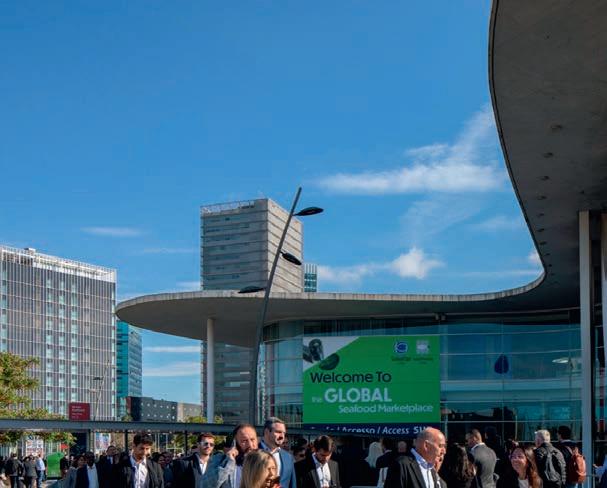

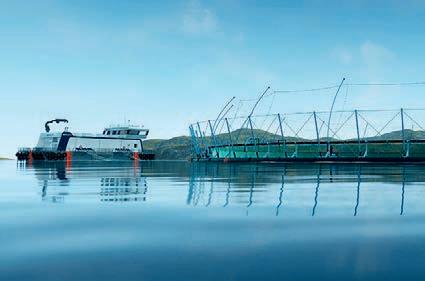
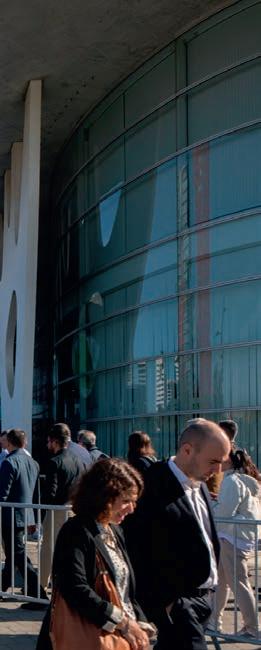
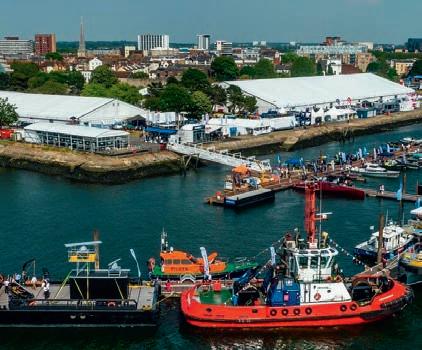
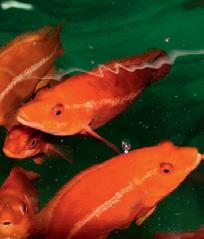
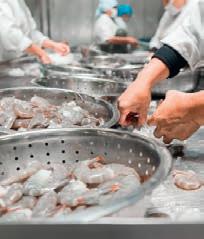
In
www.fishfarmermagazine.com CONTENTS 4 34 56 News 6-21 THE LATEST INDUSTRY NEWS Processing news 22-23 PROCESSING UPDATE Comment 24-25 COUNTER ARGUMENT Martin Jaffa Salmon Scotland 26-27 HITTING THE RESET BUTTON Tavish Scott Shellfish 28-29 BARCELONA REPORT Nicki Holmyard New Zealand 30-33 GEARING FOR GROWTH Sandy Neil Seafood Expo Global 34-36 BREAKING RECORDS Opinion 37 THE VIEW FROM SAIC Heather Jones SalMar 38-39 PASSING THE TEST Vince McDonagh Fish health & welfare 40-41 HEALTH ROUND-UP Climate change 42-43 PREPARING THE INDUSTRY Lynne Falconer Opinion 44-47 PROTECTING HUMAN RIGHTS Chris Ninnes Shrimp 48-49 THAI UNION GOES GREEN Cod 50-51 BIG PLANS Cleaner fish 52-54 WRASSE WELFARE Seawork preview 56-58 FOCUS ON SOUTHAMPTON 30 52 Green Sea Service AS 61 SAFE, EFFECTIVE DELOUSING CLIENT CONTENT AQUACULTURE TECHNOLOGIES AND SOLUTIONS BY your specialist for highly corrosion-resistant pumps made from technically high-performance plastic. speck-pumps.com/aquaculture What’s new 60 PRODUCTS AND SERVICES Aqua Source Directory 62-63 FIND EVERYTHING YOU NEED Industry diary 65 WHAT’S ON Opinion 66 PETA’S PRINCIPLES Nick Joy 44
DON’T GET CAUGHT WITH A FAILED PUMP ON THE JOB.

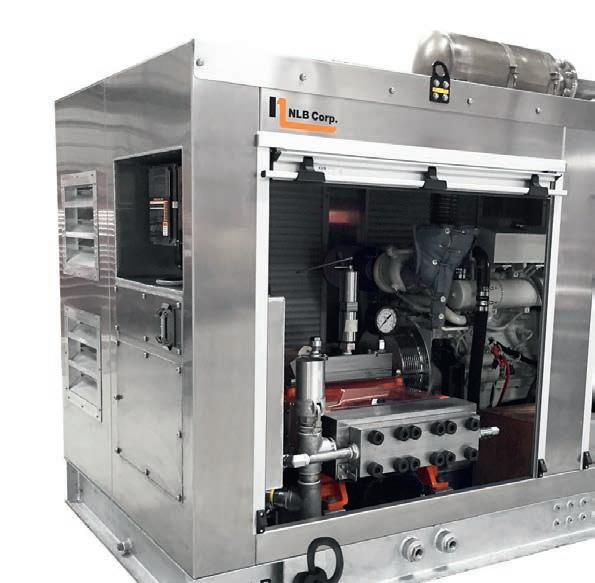



Bring confidence to your net cleaning job, with the most reliable pump on the market.
NLB’s high-pressure water jet pumps are proven reliable for offshore and onshore net cleaning. Engineered specifically for the aquaculture market, they withstand the harsh conditions of open seas, foul weather, and salt corrosion, all while delivering the same performance and durability NLB has been recognized for since 1971. Our units also offer a compatible interface with the industry’s leading head cleaning systems.
NLB will go the extra mile to make the switch easy for you. Let’s discuss your options at AquacultureUK!
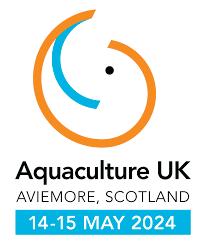
NLBCORP.COM +44 7391 745 119 © Copyright 2024 NLB Corp. | PSaleAqua_24_001_v1 SEE THIS UNIT IN PERSON BOOTHS C18 AND OS30 This unit will be on display at our booth at the Aquaculture UK show in Scotland this May. Be sure to stop by!
United Kingdom news
Label Rouge changes create more opportunity for Scotland's salmon
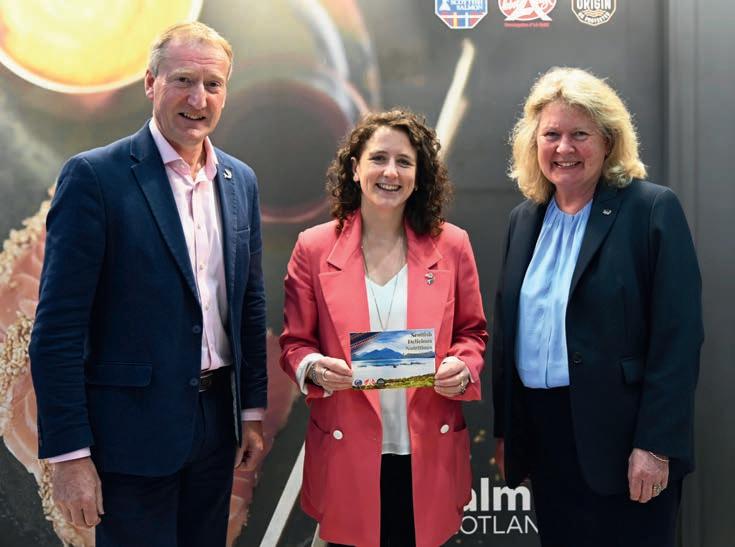
CHANGES to France’s prestigious “Label Rouge” quality mark have been welcomed by Scottish salmon farmers.
Industry body Salmon Scotland said the amended rules will help its plans to increase the sales of premium Scottish salmon in France and other European markets.
The French quality mark, which comes with a stringent set of standards, has been updated to allow farmers to implement modern solutions to improve salmon health and welfare while maintaining the taste and quality the fish is known for.
Changes include the ability to export larger fish of between six and eight kilograms. The new standard also allows for alternative ingredients, including insects and algal oils, to be used in addition to marine ingredients, to develop protein-rich feed that provides a nutritionally complete and sustainable diet.
Label Rouge Scottish salmon receive a diet rich in marine ingredients. A new requirement is for at least 10% of the esh of the salmon to contain Omega-3 oils (EPA and DHA), which carry nutritional benefits including reducing the risk of a heart attack or stroke, as well as supporting brain development and cognitive function.
The announcement was welcomed by Rural Affairs Secretary Mairi Gougeon, who hailed the efforts to boost export opportunities.
She said: “I am delighted by this news – it will enable us to export more of our internationally renowned Label
Rouge salmon, which has established itself as a world-leading example of premium quality Scottish produce over the last 30 years.
“We are committed to encouraging investment in research, development and innovation in Scotland’s aquaculture sector and we will continue to work closely with the Scottish salmon industry to further improve export opportunities and see even more consumers enjoying Label Rouge salmon as a result.”
Key endorsement for Scottish salmon
France is the top international destination for Scottish salmon, with sales of £272m in 2023 – nearly half (47%) of the industry’s export total.
Around one-third of the salmon exports to France come under the Label Rouge quality mark, which is the official recognition by the French authorities of the superior quality of a food or farmed product.
Scottish salmon was the first nonFrench product to be awarded the accolade just over 30 years ago.
There is a goal to increase Label Rouge from around 12% to 15% of Scottish salmon’s global export volumes by 2026. The quality mark is now also recognised by chefs and consumers in Germany, Spain and Italy.
The process of agreeing changes to the “Cahier des Charge” specifications set by French authorities has taken five years. Salmon Scotland said the update will increase survival rates of the
salmon by enabling larger, stronger fish to go to sea and potentially spend less time in the marine environment before reaching harvest weight.
The changes were announced by Scottish Quality Salmon and Salmon Scotland at the world’s largest seafood trade event in Barcelona, Seafood Expo Global, where representatives from more than 160 countries are in attendance.
Tavish Scott, Chief Executive of Salmon Scotland, said: “Label Rouge Scottish salmon is a key foundation of the success of our sector –championing the quality and taste of the very best, tastiest salmon.
“Operating as sustainably as possible is a top priority for all salmon farmers and these changes help us to provide the same great texture and tasting salmon, with a low carbon footprint.
“The premium on Label Rouge means higher revenues which support the Scottish economy, fund public services, help rural communities thrive, and sustain jobs across the Highlands and islands of Scotland.”
Su Cox, Chair of Scottish Quality Salmon, which sets the quality and promotes Label Rouge Scottish Salmon, said: “These practical updates to the Cahier des Charge will safeguard our internationally recognised quality brand.
“Interest and appreciation for the quality associated with our salmon has grown significantly across European markets such as Germany, Spain, and Italy, as well as across Asia and North America.
“We will continue to work closely with leading chefs, and with top ‘poissoneries’ (fish shops), recipes and chef guides, to make sure more people can enjoy Label Rouge Scottish salmon.”

6 UNITED KINGDOM NEWS
www.fishfarmermagazine.com
Photo: Salmon Scotland
Above: Tavish Scott, Mairi Gougeon and Su Cox. Below: Label Rouge Scottish salmon
NMS looks to Shetland as a potential farm site
REPRESENTATIVES from an ase fish farmer orwegian o ntain a mon were in het an in ri to meet with oca eo e an e ain wh the com an sees the is an s as a ossi e ocation for a new in of sa mon farm. is a rea anning to i a owthro gh sa mon farm on the is an of tsira off orwa . t wi in o e ri ing t nne s thro gh the roc s to ta e a antage of nat ra ti a ows.
he site wo ho se to arge fish tan s which co o er time ro ce to tonnes of sa mon er ann m. f this goes ahea the com an sai it wo in est more than mi ion etween the start of constr ction en isage for with f ro ction .
he com an is a so oo ing to get ermission to e e o a simi ar ro ction site in cot an either on ewis in the estern s es or on the so th coast of het an . he ro ose het an site is at ora ess near iggie an o osite the is an of o sa .
hief ec ti e r je men to het an ews that the techno og en isage ha man a antages o er the
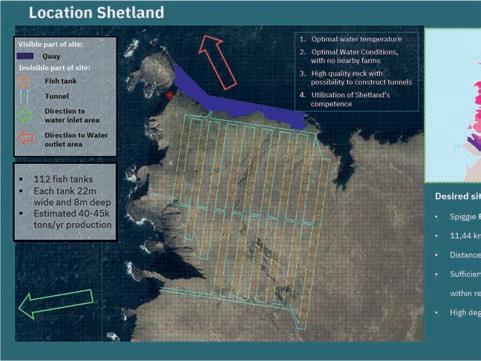
Above: The proposed Shetland site

resent mo e of sa mon farming inc ing rotection from sea ice an other hazar s re ention of esca es s ge fi tration an o tima water a it . he com an is in estigating the two cottish sites rior to ma ing a ecision.
Loch Duart says new feed has improved fish health and cut carbon emissions

INDEPENDENT salmon farmer Loch Duart says its switch a year ago to BioMar’s Blue Impact feed has reduced its carbon footprint, improved health for the stock and reduced natural impurities in its fish.
The results of the analysis were announced at Seafood Expo Global in Barcelona, the world’s biggest seafood trade show.
Loch Duart, which is celebrating its 25th anniversary this year, started using Blue Impact feed last year and is now harvesting the first fish to be fed on the new feed.
The company said a study of the outcomes shows that the new feed means its salmon have maintained high Omega-3 levels, achieved a smaller carbon footprint and cut the foraged fish dependency ratio (FFDR). Triple cleaning the fish oils in the feed also mean there are fewer natural contaminants for consumers.
Chris Orr, Sales Director of Loch Duart, said: “Not all salmon are farmed equally and at Loch Duart, right from the very start 25 years ago, we’ve been committed to raising the standards of our industry by pioneering fish welfare and low-impact farming methods.
Loch Duart Salmon’s bespoke Blue Impact diet, produced in partnership with our feed partners at BioMar, is a gamechanger, which prioritises low-impact feed ingredients and has circular and restorative thinking at its heart.
The new feed is now 56.5% more carbonfriendly than standard farmed salmon diets and, with a new foraged fish dependency ratio of just 0.33, Loch Duart now has a net positive marine output.
“So what does this mean for chefs, restaurants and foodies? Well, our salmon isn’t just kinder on the planet, it’s healthier
for customers too. The fish oil within the new feed is triple-cleaned, dramatically reducing dioxins, resulting in our feed having 67% fewer contaminants than standard farmed salmon diets. We are immensely proud to have taken this huge, positive step forward in our 25th anniversary year.”
Robert Wilson, Business Unit Director at BioMar UK, commented: “Our Blue Impact diets were introduced to drive real improvements in key sustainability areas where aquaculture can make a significant environmental difference, including reducing the CO2 footprint, dependency on wild stocks and increasing the use of circular ingredients.
“Loch Duart embraced the principle from day one, switching their entire production to the new diet. We believe our Blue Impact diets are setting a new benchmark in sustainable feeds while maintaining the high quality standards that Loch Duart Salmon is known for.”
Chef Thomas Leatherbarrow, who was at the announcement of the new feed results, said: “I’ve been cooking with Loch Duart salmon for years and the flavour profile is just unlike anything else; it’s a much healthier product to buy because its diet and bespoke feed mean it really is unrivalled tasting salmon.”
Loch Duart continues to use a higher ratio of marine ingredients than many other salmon farmers, but as the new feed includes trimmings from MSC-approved or Marine Trust fisheries, Foraged Fish Dependency Ratio (FFDR) dropped from 0.44 to 0.33 which the company says is best in class for a premium salmon producer with industryleading levels of Omega-3.
www.fishfarmermagazine.com 7
Above: (From left): Robert Wilson; Thomas Leatherbarrow; and Chris Orr
New research centre focuses on sustainability NEWS IN BRIEF
Loch Long's Hawthorn in marathon effort

LOCH Long Salmon’s Managing Director Stewart Hawthorn has run the 2024 Boston Marathon, raising funds for an organisation that aims to preserve traditional Gaelic culture. Hawthorn raised over £4,500 for the Gaelic Books Council by completing the route in three hours, 23 minutes and 22 seconds. Hawthorn, 57, said he had been inspired by his wife, Kerry, who established a weekly gathering for Gaelic speakers and learners in Stirling.
Researchers seek seafood sector insights
RESEARCHERS from the James Hutton Institute in Aberdeen have put a call out to Scotland’s seafood sector to help understand why the industry could be missing out on netting the full potential of its fish by getting more value from byproducts.The project will run until October 2024, when there will be an event bringing in stakeholders from across the fish and seafood
supply chain, including survey participants, to share the results. Those completing the survey, which is open until the end of June, will be entered into a prize draw to win one of a number of £50 gift cards to spend in a store of their choice.They will also be able to access the results of the survey. To take part, go online to: bit.ly/huttonsurvey24

DNV takes ownership of Ocean Ecology
UK-based consultancy Ocean Ecology is now wholly owned by assurance and risk management provider DNV, following a chain of corporate deals. The move confirms DNV’s control of the K firm, following DNV’s acquisition of Åkerblå, the previous majority shareholder of Ocean Ecology. Established in 2013, Ocean Ecology is a leading UK provider of marine environmental
consultancy, technical and advisory services to businesses operating in the blue economy.





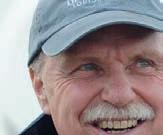
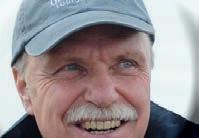


A NEW research centre that aims to help the seafood industry become more sustainable has been launched in Shetland.
The Centre for Sustainable Seafood will be based at the UHI (University of the Highlands and Islands) Shetland Scalloway Campus. UHI Shetland says its aim is to become an international leader in innovation and sustainability.
Professor Ray Hilborn, of the School of Aquatic and Fisheries ciences at the ni ersit of ashington officia o ene the entre. ote for his e ertise in n erstan ing g o a fish stocks, in 2016 he received the International Fisheries Science Prize.
John Goodlad, Chair of the new centre’s stakeholder group, said at the a nch or too ong the fishing an fish farming in str has been subject to unwarranted, misinformed and misguided attacks… all the seafood industry has been able to do is to react –after the event.Today that will change – the seafood industry will start to take ownership of the sustainability narrative.”
UHI Shetland said the Centre for Sustainable Seafood will draw on strong relationships and collaboration with a range of key stakeholders who work in the marine environment and their communities. Utilising the knowledge and expertise of these partners to co-create research, staff will gather data and inform policy that is grounded in real-world knowledge and experience. The centre will also work with industry and stakeholders to develop new educational courses and tools to encourage a wider interest in the seafood sector and address gaps in skills and knowledge.
UHI Shetland Principal and CEO Professor Jane Lewis said: “The Centre for Sustainable Seafood will be a unique centre that will provide credible, robust and targeted science, education and training to meet the needs of a sustainable seafood sector.”
Tavish Scott, Chief Executive of Salmon Scotland, commented: “Food security, growing the economy and sustainable sources of protein with low carbon impacts have never been more im ortant. hat is wh this initiati e is so significant. staina e Seafood is the blue economy, and salmon from Shetland and Scotland is both the UK’s no 1 food export and the most popular fish with omestic cons mers.
“The new centre needs to articulate why sustainable seafood is so important using facts, evidence and data.The sooner the centre is up and running the better.”
Mike Cohen from the National Federation of Fishermen’s Organisations said: “The NFFO is delighted to support the opening of the Centre for Sustainable Seafood.
“UHI’s well-deserved reputation for intellectual independence and academic rigour will be a welcome addition the often-clouded fie of seafoo s staina i it . re too there co e nowhere better for this endeavour than Shetland.”
www.fishfarmermagazine.com 8 UNITED KINGDOM NEWS
Above: Ocean Ecology survey equipment
Above: A selection of Scottish seafood
Above: UHI Scalloway campus
Right: Professor Ray Hilborn
Left: Stewart Hawthorn at the Boston Marathon
Mowi Scotland recovery gathers pace
MOWI Scotland is bouncing back from the tro es which ha e hit financia performance recently.
es ts for the first arter of this ear show the Scotland division produced an o erationa or o erationa rofit of €31.1m (£26.8m) up from €26.6m (£23m) 12 months earlier. This produced an operational EBIT per kilo of €2.19 (£1.89).
The harvest volume also increased from a year ago by just over 2,800 tonnes to 14,205 tonnes.
In its Q1 update, the company said: “The biological situation for Mowi Scotland improved in the first arter an there was a positive development in o erationa s s the first arter of . rthermore volumes and prices also increased from the comparable arter ast ear .
The report states: “The overall price achieved was 6% above the reference price in the arter below).
“Quality was good, with improved superior share versus
Q1 2023 and increased weights towards the en of the arter.
“Contribution from contracts, including contribution from Consumer Products, was positive relative to the reference rice in the first arter negati e in the com ara e arter . The contract share was 73% (Q1 2023: 66%).
“The harvest volume increased to 14,205 tonnes gutted weight (11,373 tonnes) on improved production and more iomass a ai a e for har esting.
Mowi said the cost of feed for Scotland
ha increase e to re io s in ation and combined with challenging biology in Q4 2023 which led to high cost on inventory.
Other cost items were relatively sta e from the com ara e arter. Production, mortality, feed conversion rate and superior share improved from the com ara e arter.
It continued: “Sea lice along with bacterial and viral diseases reduced in the arter an were ower than in Q1 2023, however AGD (amoebic gill disease) and gill conditions are still considered relatively prevalent. he first atch of ost smo t is now under production in Loch Etive and will be stocked to marine sites ater this ear. Meanwhile, construction of the new broodstock facility at Ardessie is now underway and is expected to be completed in 2025.

Both the post smolt project and the broodstock facility are important steps to further improve its biological and financia erformance owi added.
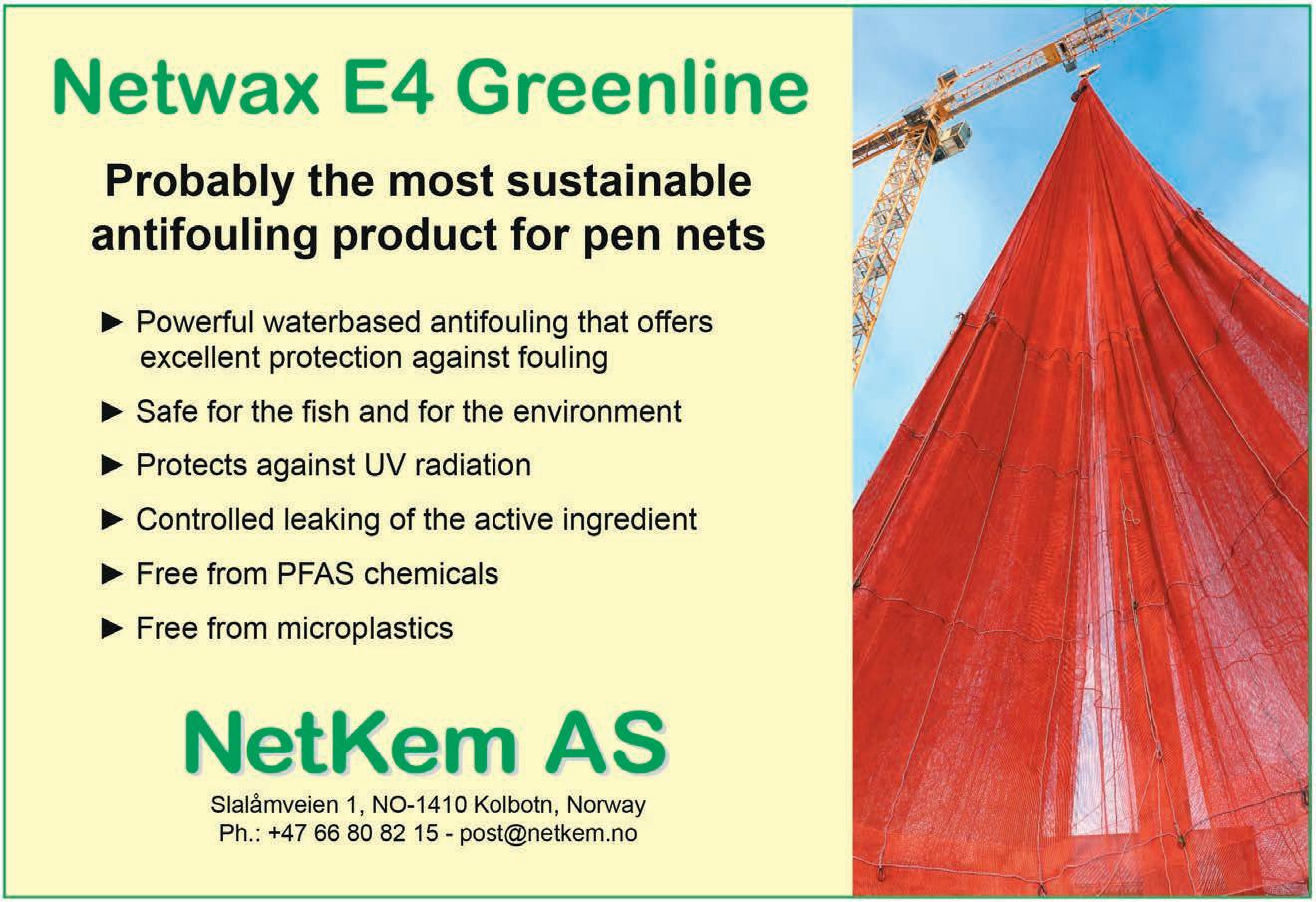
www.fishfarmermagazine.com 9
Campaigners challenge ‘protected’ rule change for Scottish salmon, claiming ‘greenwashing’
ENVIRONMENTAL charity WildFish has formally appealed against a change in the rules on what can be called “Scottish salmon”.
Last month the UK Government approved a request to amend the “Protected Geographical Indication” (PGI) for “Scottish farmed salmon” to “Scottish salmon”.
The PGI rules set out strict criteria for regional food products, specifying not only where they must be from but also how they must be produced. In the case of Scottish salmon, this sets out approved production methods and quality controls, covering a range of issues from feed to fish welfare.
Trade body Salmon Scotland put forward the requested amendment, arguing that unscrupulous traders could pass off an inferior product as “Scottish salmon”. The revised PGI also defines the geographical designation as “the coastal region of mainland Scotland, Western Isles, Orkney, and Shetland Isles”.
Announcing the decision on 4 April, the government said any appeal against the changes would need to be submitted by 30 April.
WildFish (formerly Salmon and Trout Conservation) supports sports fishing but is against fish farming, and the organisation has appealed against the Secretary of State’s decision.
The organisation argues that the change is likely to mislead consumers and does not meet the legal obligations of assimilated EU Regulation 1151/2012 on quality schemes for agricultural products and foodstuffs.
‘Greenwashing’ accusations Rachel Mulrenan, Scotland Director for WildFish, said: “This is a continuation of an attempt to greenwash the reputation of Scottish farmed salmon in the eyes of consumers. With rising numbers of dead
fish on the farms, toxic chemicals polluting Scottish sea lochs, and concerns about fish welfare, it’s perhaps no surprise that this application has been made to change the name and drop the word ‘farmed’. But let’s be clear – this is farmed salmon raised in Scotland, it is not Scottish salmon.”
WildFish, together with a number of other organisations and chefs opposed to farmed salmon, had previously lodged objections but the government said “no admissible reasoned statement of opposition” had been received. Chef Tim Maddams, formerly of the River Cottage restaurant in Winchester, said: “It’s tiring and frustrating to have not managed to halt this small advance in the evergrowing marketing power of salmon farmed in Scotland but it’s totemic of a broader issue - the continued greenwashing and subtle ‘not quite sleight of hand’ of large-scale agribusiness in general. If we can’t stop the greenwashing, where will it end?”
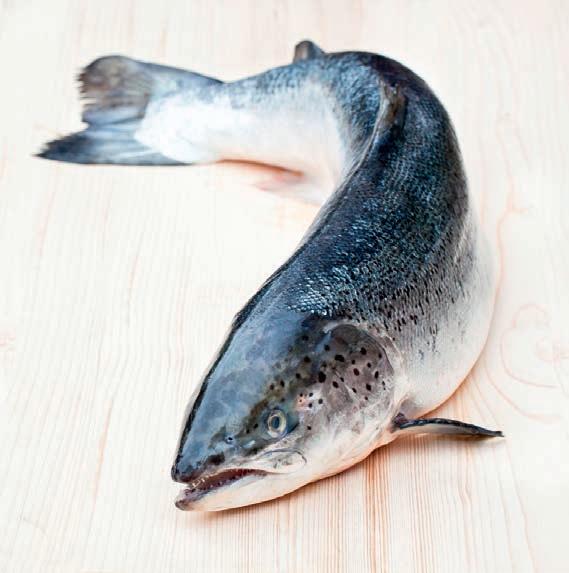
Salmon Scotland argues that the rules on packaging make it very clear to consumers which seafood products are farmed and which are wild-caught, and the change to the PGI will not affect this.
As wild Atlantic salmon is an endangered species, it has been argued that, effectively, all salmon legally sold for consumption in the UK must be farmed.
ASC Farm Standard consultation reaches final round
THE Aquaculture Stewardship Council (ASC) is launching the last round of stakeholder consultation to he fina ise the content of
its new Farm Standard. Stakeholders are encouraged to take part before the consultation closes on Monday 20 May.

The new standard tightens up requirements across a range of areas from greenhouse gas emissions and human rights issues to fish we fare.
Chris Ninnes, ASC CEO, commented: “This new Standard will draw together years of experience, research and input from a range of ASC stakeholders spanning many backgrounds. It is a milestone development not on for certification but also for responsibly produced farmed seafood worldwide. We are proud to be setting the standard for seafood.”
The new Farm Standard will align all of ASC’s s ecies s ecific stan ar s
into a single global, robust standard - bringing greater consistency to the ASC programme and supporting the highest assurance throughout the supply chain. It also addresses all relevant environmental and human rights impacts of aquaculture, regardless of production system or location of the farm.
It includes enhancements to existing requirements along with new requirements in key areas to address environmental and social impacts of aquaculture. The Standard also enables ASC to act on market demand for new species and add new production systems to the rogramme more efficient .
www.fishfarmermagazine.com 10 UNITED KINGDOM NEWS
Above: Scottish salmon
Royal College honour for Dr Iain Berrill
DR Iain Berrill, Head of Technical at industry body Salmon Scotland, is one of three leading professionals to be made an Honorary Associate of the Royal College of Veterinary Surgeons in this year’s RCVS Awards.
r erri a fish io ogist an Head of Technical at Salmon Scotland, was nominated for wor ing c ose with fish ets to im ro e the hea th an we fare of fish in the cottish aquaculture industry.

His nominator, Ronnie Soutar MRCVS, Head of Veterinary er ices at cottish ea arms sai ain is a so the go to erson for ets and others outwith the sector wishing to access information on fish hea th and welfare or seeking a conduit to the agreed opinion of Scottish aquaculture’s ets. e has for e am e ro i e et re ate information to the cottish o ernment s arme ish ea th ramewor to the s wor ing group on sustainable aquaculture and to the VMD [Veterinary Medicines Directorate] in relation to the use and a ai a i it of me icines for farme fish.
Dr Iain Berrill
“Without Iain’s work, and the way in which he does it, the work of Scotland’s sa mon ets wo n o te ha e been harder. He has dealt incredibly competently with many issues which wo ha e i erte s from the er important focus on the daily care of farme fish.
r erri sai am h m e that the ets within the sector ha e nominate me for this award. I will continue to s ort them to a ance the hea th an we fare of the fish in o r care.
Dr Berrill holds a PhD in salmon e e o ment from the ni ersit of
tir ing an c in a ie fish io og from the ni ersit of Plymouth and a BSc in marine io og from wansea ni ersit . Prior to joining Salmon Scotland in 2010, he was a post-doctoral research officer at angor ni ersit an the ni ersit of Stirling.
wo other ets were a so name as onorar ssociates horse health specialist James errie the farrier for the ni ersit of asgow s choo of Veterinary Medicine; and Professor Diana Williams, who was until recently Professor of Infection Biology and Microbiomes at the ni ersit of i er oo s nstit tion of Infection, Veterinary and Ecological Studies.
Also in the Awards, Professor Stuart ei rinci a of the o a Veterinary College (RVC) and a PastPresident and council member of the recei e the een s e a and awards were also announced in the Compassion, Impact and Inspiration categories, as well as the Veterinary Nursing Golden Jubilee Award.

www.fishfarmermagazine.com 11
Above:
European news
Salmon Evolution heads into profit

LAND-based salmon farmer Salmon Evolution has reported its first operational profit, in what the company has called a “significant milestone”.
The Norway-based producer reported operating revenues of NOK 100.3m ( 7.37m) in the first quarter of 2024 and a group EBITDA of NOK 24.1m ( 1.77m), calculated on a back to farm basis and adjusting for transport costs.
By comparison, in 1 last year Salmon Evolution recorded an EBITDA loss of NOK 22.4m ( 1. 5m).
CEO Trond H kon Schaug-Pettersen said: “In Salmon Evolution we have a vision to grow salmon on land with excellent biology in a highly profitable way.
“The strong results in the first quarter are a testament to this and
truly demonstrate that Salmon Evolution has established a unique, efficient and profitable growth platform. We are only at the start of our journey.”
At the end of the quarter, the company had a record high standing biomass of almost 2,700 tonnes LW, with stable growth. Biomass was up 8 from 4 2023. This was despite poor smolt quality which led to reduced stocking. The company has secured external sources to ensure a supply of good quality smolt.
Mortality has been low, with the batches set for harvest in 2 suffering accumulated mortality to date of a very limited 2. -3.7 .


2 harvest volumes are expected in the range of 1, 00-1,800 tonnes HO weight.

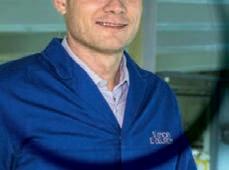
Salmon Evolution operates a hybrid owthrough plant at Indre Har y, on the Norwegian coast.
The company reported a financial loss of NOK 1.2m ( 882,000), compared with a loss of NOK 32.4m ( 2.38m) in the same quarter last year. 1 harvest volumes were 01 tonnes HO (head on gutted), with average weight of 4. kg LW (live weight). The fish had a superior share of and achieved strong price realisation, at around NOK 108 kg ( 7. 3).
As well as continuing to grow production at the current facility, the company said its priorities remain developing Indre Har y Phase 2 described as “an improved copy of Phase 1” and developing its overseas projects.
Salmon Evolution is in the process of securing a site in North America and the company said: “We are in advanced negotiations on a high-potential site which ticks ‘all the boxes’ on si e, topography and water parameters.”
Meanwhile the company also said it was “defining the road ahead in Korea” for its joint venture there, with a focus on cost optimisation and capital discipline. Design work has been completed, and permitting is on track, the company reports, promising further clarification during 2.
Row over fjord salmon licences erupts in Iceland
A POLITICAL row has broken out in Iceland over the granting of new fjord farming licences to the country’s salmon companies.
The government has been accused of giving away the country’s national resources to commercial businesses, many of which are foreign owned.
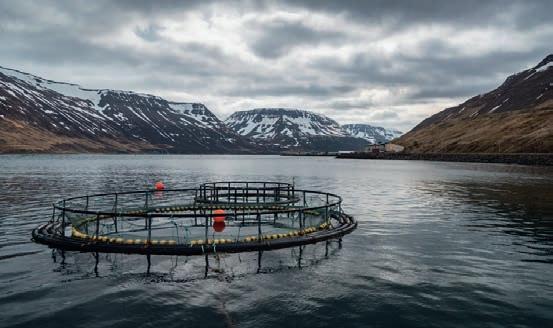
The proposals are contained in a parliamentary bill and, if approved, would allow fish farming businesses to farm in the fjords for an indefinite period.
But they have been met with strong opposition both inside and outside parliament especially from MPs and groups hostile to open pen farming. Critics claim the government
should not give the farming companies indefinite access to the fjords, some of which are areas of outstanding natural beauty. The government has strongly defended its position.
Open pen farming in Iceland has developed into a major controversy following escapes and other serious incidents last year. Other critics says
the proposed legislation is far too vague.
Salmon farming has expanded rapidly in Iceland over the last decade and is now running at more than 50,000 tonnes a year with further growth on the cards.
Open pen farming has also brought employment and new prosperity to once depressed for fishing areas and is popular among the populations in those districts.
The final decision will probably fall to a committee in the Althingi, Iceland’s parliament.
To defuse the situation, one of the suggestion is to time limit the licences, with a period of 16 years being proposed. However, they could be renewed when that period expires.
www.fishfarmermagazine.com 12 EUROPEAN NEWS
Above: Salmon Evolution plant. Right: Trond H kon Schaug-Pettersen
Norwegian government appoints Fisheries and Oceans Minister Arctic Fish escape investigation reopened after appeal
NORWAY has a new Minister of Fisheries and Oceans – just six months after the appointment of Cecilie Myrseth in the role.






Myrseth moves up to trade and industry as part of a number of new senior appointments which the Labour-Centre Party coalition government hopes will help restore its popularity. he on too on the fisheries jo ast October after the popular Bjørnar Skjæran was unceremoniously sacked in a major ca inet resh f e.
Myrseth is replaced by 50-year-old Marianne Sivertsen Næss, a Labour stalwart, but also a o itician who comes from a fishing an aquaculture area . Although not from a seafood background, it is thought she knows the industry and its problems quite well. Married with four children, Næss is from the Hammerfest area an a ifie as a ect rer at the ni ersit of s o an the ni ersit of roms .
She taught in Hammerfest for six years up to 2005 before joining the health service. In 2011 she returned to teaching as head of Hammerfest upper secondary school.
Næss also became involved in politics and was deputy mayor and mayor of Hammerfest for a total of 11 years. She was elected to the Storting in 2021 when she was given a junior energy and environment role.
Both sides of the seafood industry have said they look forward to working with the new minister, but at the moment her policy priorities are not widely known. It is expected that the en ironment an farme fish we fare wi feat re rominent .



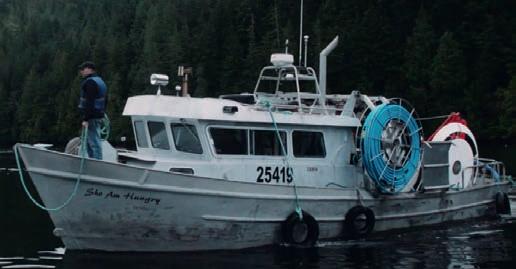
THE Icelandic salmon farmer Arctic Fish is likely to face an investigation into its operations in the Westfjords after all.
A decision by the police to drop an inquiry into the accidental release of salmon last year has now been overturned by the Office of Public Prosecutions.
The Mowi-owned company experienced the accidental release of more than 3,000 salmon in the Isafjord area in August last year.
The incident led to protests from anti-salmon farm campaigners, sports fishing groups and a si eable section of the public.
Arctic Fish apologised for the incident and instituted a large-scale escaped fish recovery plan.
The police launched an official investigation at the request of the veterinary agency but withdrew it shortly before Christmas on the grounds that the escape was probably accidental.
But now the Icelandic Federation of Fishing Associations has
appealed that decision and an official inquiry looks set to go ahead.
Arctic Fish was acquired by Mowi from SalMar in January 2023 in a deal worth a total of around £150m.
Meanwhile, Arctic Fish has just published its 2024 first quarter results which show a made an EBIT or operational profit of 10m (£8.5m) on a harvest of 2,500 tonnes gutted weight.

Inviting Pre-Auction Offers On All Assets As a Bundle!
ASSET HIGHLIGHTS
Ocean Vessels:
“Sho Am Hungry” Live Aboard Ocean Vessel, 41’ 13’ “Tesla Integrator” Super Skiff Ocean Vessel, 37’ 13’ System Components Ready Spares Inventory Integrated Computerized Controls Technologies Brunswick Jetters, LTD Intellectual Property
ONLINE BIDDING STARTING: JUNE 4 - 7:00am PDT ONLINE BIDDING ENDING: JUNE 5 - 10:00am PDT
ASSET LOCATIONS
2530 Jenkinson Road, Powell River, BC, V8A 0N2 1374 Island Hwy, Campbell River, BC, V9W 8C9
Preview by Appointment Only
CONTACT
Nick Dove 858-847-0659 ndove@hginc.com Grayson Dove 650-465-4729 gdove@hginc.com
www.hgpauc�on.com
www.fishfarmermagazine.com 13
Above: Arctic Fish farm
Featuring Vessels
Intangible Property From An Innovative & Patented Aquaculture Net Washing Company!
Above: Marianne Sivertsen Næss
&
ONLINE AUCTION
NEWS IN BRIEF
Billund appints new CEO
A AC LT RE technology group Billund has a new roup CEO in Denmark. The company has appointed Kristoffer Lund, formerly the roup Technical Director of estas Aircoil, as part of a major restructuring exercise. Christian S rensen, the company’s founder and former CEO, will be staying on in an advisory role. He said: “This new structure is a very important step towards securing the management team our company needs to meet its future development needs,
focusing heavily on structure, technology development and a strong control over project implementation.”
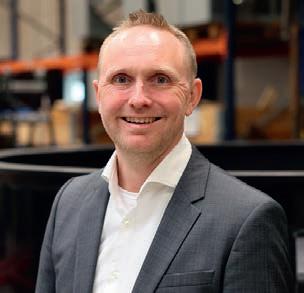
Krill harvester sees revenue growth
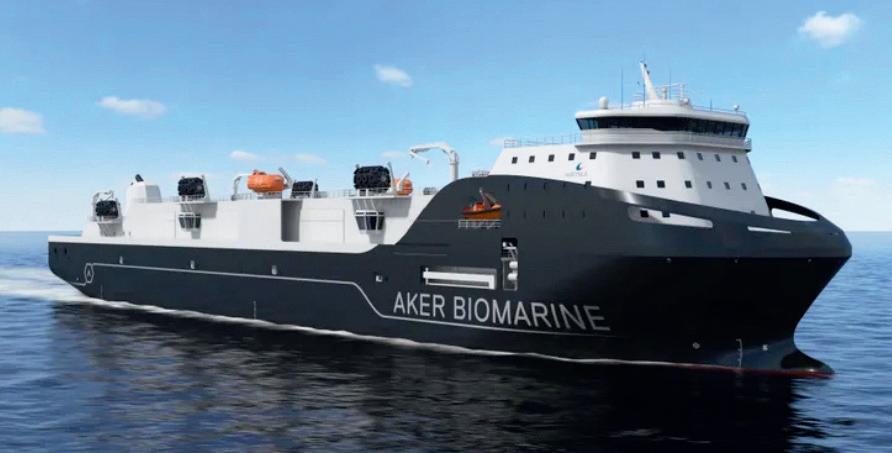
KRILL harvesting company Aker BioMarine has said earnings and growth for the first quarter of 2024 were significantly up, year-on-year. Operating profits before depreciation and amortisation (EBITDA) came to S 15.2m ( 12.1m) against S m a year ago. 1 operating income rose from 8.1m ( 53m) to 78.3m ( 2.5m) , a rise of 13 . The ordinary operating loss was reduced to minus 5. m ( 4.47m) compared to a loss of .4m ( 7.5m) in 1 2023.
Troubled Gigante names new chief executive
NORWE IAN land-based salmon farmer igante Salmon has a new Chief Executive, after acting CEO Kjell Lorentsen was confirmed in the role. His predecessor, Helge Albertsen, left after igante Salmon experienced significant mortality with its second smolt batch and saw construction costs for the
completion of its R d y plant spiralling. The company also announced the appointment of Liv Monica Stubholt as Chairman of the Board. igante has also secured a commitment of NOK 120 million (almost m) in funding from Sparebank 1 Nord Norge, which is supported by Export Finance Norway.

Big jump in Bakkafrost Q1 operating profit

BAKKAFROST has announced an increased 2024 first quarter operational profit or EBIT of 710m Danish kroner (£81.7m). The company said biological performance in Scotland is continuing to improve.



and benefit from a salmon market marked with low availability superior quality and large fish.

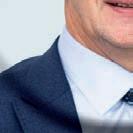
In fact, the progress in Scotland meant that Bakkafrost was able to harvest superior quality large fish.
The group EBIT of DKK 710m ( 81.8m) compared with an EBIT of DKK 5 5m ( 5m) in 1 last year.
Revenue in the Faroe Islands increased by just over DKK 250m ( 28.7m) to DKK 1,5 4m ( 183m) and resulted in an operational EBIT of DKK 71m ( 77m) against an EBIT of DKK 410m (£47m) in Q1 2023.
In Scotland the 1 revenue was DKK 612m (£70m) down from DKK 708m (£81.4m) 12 months earlier. The operational EBIT or profit was DKK 3 m (almost 4.5m) well down on the 1 2023 figure of DKK 155m ( 17.8m) last year.
CEO Regin Jacobsen said the company was satisfied with the results, especially in the Faroe Islands: “ ood biological performance in the Faroe Islands and improved biology in Scotland has enabled us to harvest large fish of superior quality



“In Scotland the biology has been good at most sites, except for one site with fish previously weakened by a jellyfish encounter.”
CEO Jacobsen continued: “In our freshwater operation, performance and smolt quality is good in the Faroe Islands.
“At Applecross in Scotland, there have been some start-up issues in this quarter in parts of the facility, that has not yet been finally commissioned by Bakkafrost.
“This impacts the ramp-up pace of the overall smolt release this year and the average weights which are is now expected to reach 200g in 4.
“As we continue to follow our de-risking strategy in Scotland, we plan to harvest around three quarters of the 2024 volume in H1 (2024 first half).”
In an upbeat note he added: “The outlook for the salmon market is tight and supportive for continued strong salmon prices in 2, especially large salmon of superior quality, which both the Faroe Islands and Scotland are able to provide.”
The board has proposed a dividend of DKK 8.70 (equivalent to just over 1).
www.fishfarmermagazine.com 14 EUROPEAN NEWS
Above: Bakkafrost farm, otuvik Below: Regin Jacobsen
Above: Kjell Lorentsen
Above: Aker BioMarine support vessel
Above: Kristoffer Lund
New centre to focus on restorative aquaculture
AQUACULTURE that helps to restore and renew the marine environment will be the focus of a new Mediterranean Restorative Aquaculture Centre, set to open in Spain later this year.
The new centre was announced at Seafood Expo Global in Barcelona, in April. It will be located at La Rapita, Spain.The initiative is the result of the collaboration between the General Fisheries Commission for the Mediterranean (GFCM) of the Food and Agriculture Organization of the United Nations (FAO) and the Generalitat de Catalunya, Departament d’Acció Climàtica, Alimentació i Agenda Rural (DACC), with the support and infrastructures provided by the Institute of Agrifood Research and Technology (IRTA). Combining traditional knowledge with advanced technologies, the Mediterranean Restorative Aquaculture Centre aims to reshape the aquaculture sector, thus ensuring the long-term viability of aquatic ecosystems and the communities relying on them. It will provide stateof-the-art facilities and expertise

Lerøy to develop salmon-based iron supplements
THE Lerøy Seafood company is working on a project that could develop salmon blood into an important health supplement, it has been disclosed.
The Norwegian research organisation, SINTEF, says the aquaculture industry has a residual raw material utilisation rate of approximately 94%, but at the moment the only remaining part that is not used is the blood.
Above: How the Mediterranean Restorative Aquaculture Centre will look :
for knowledge exchange, research and development of sustainable aquaculture practices.
Specifically, the Mediterranean Restorative Aquaculture Centre aims to enable innovation and capacity building in the region regarding the farming of species such as macroalgae, sea urchins, bivalves and holothurians, as well as integrated multi-trophic aquaculture systems and adaptation to climate change. The initiative is intended to facilitate sustainable aquaculture development among producers and interested companies by fostering the exchange of technical guidance, expertise and experiences among stakeholders in the Mediterranean region.
Mowi raises millions in green bonds issue
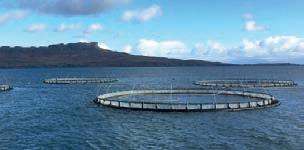
SALMON giant Mowi has successfully raised around £255m (€298m/NOK 3.5bn) in green bonds.
Mowi said green bond finance will be used for sustainable and environmentally friendly projects as defined by Mowi’s Green and Sustainability-Linked Financing Framework.
It added: “The entire issue amount and coupons will be swapped into floating EUR. The transaction was well oversubscribed.”
Danske Bank (Green Bond Advisor), DNB Markets, Nordea and SEB (as Joint Global Coordinators) acted together with ABN AMRO, Crédit Agricole Corporate and Investment Bank and Rabobank as Joint Lead Managers on the transaction.
Mowi is ranked as the most sustainable listed animal protein producer in the world by the Coller FAIRR protein producer index.
Its annual production this year is likely to be some 500,000 tonnes from seven countries.
Mowi said it has an ambitious sustainability strategy which is centred on its guiding principles “Planet and People” and underpins commitments across its social and environmental performance.
It says: “Plastic pollution has become a global problem. Huge amounts of plastic waste are released into the oceans every year, resulting in the occurrence of micro- and nanoplastics particles in the oceans.
“Appropriate waste management systems are part of the solution, but, ultimately, it will be reducing our production and consumption of plastic products that can ensure the health of the ocean.”
Transforming the blood into a resource is something the industry has been working on for over 20 years.
Lerøy has been collaborating with several R&D communities for several years to explore opportunities and how to exploit them.
“After working hard for several years to develop this unique product, we are proud to see the results. This really underlines Lerøy’s reputation for innovation and sustainability,” said Mats Trones, who heads Lerøy’s “100% Fish” department.
The product, which has been given the name SalmoFer®, is not j st the wor s first iron ingre ient from sa mon t a so the first of its in .
“To our knowledge, this is the only commercially available iron ingredient from marine raw materials,” Trones explained. What is unique about SalmoFer® is that it makes use of the protein haemoglobin in the salmon blood. This is naturally rich in heme iron, which is a natural source of iron.
“Heme iron is a fantastic source of iron. Our bodies absorb it more efficient an easi than non heme iron he sai .
In practice, this means consumers avoid the unwanted side effects such as an upset stomach, constipation and stomach pain, which many people experience when taking iron supplements. In addition, its absorption is not affected by drinking coffee, tea or wine, or by consuming dairy products. er s goa is to create the wor s most efficient an sustainable value chain for seafood. As a sign of its dedication to this, the company is committed to meeting the Paris Agreement goal of reducing emissions by 46% by 2030. er is tting a significant amo nt of effort into measuring and reducing the greenhouse gas emissions throughout its value chain,” says Anne Hilde Midttveit, Head of ESG & Quality at Lerøy.
One of the things the company is doing to reach its sustainability goals is making use of a higher proportion of its raw materials.
“One of our strategic priorities is to make better use of o r own raw materia s increasing the a e of o r products,” says Lerøy’s CEO Henning Beltestad.

15
Above: Iron supplements
Mowi loses first round in tax case

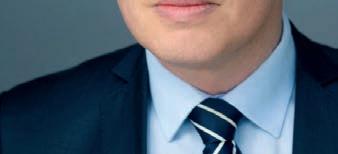

MOWI has lost the first round of a court battle against Norway’s “salmon tax”.
A court in Hordaland, Norway, rejected the company’s lawsuit against the tax, also known as the ground rent or resource rent tax. The company said it will study the decision before deciding its next step.
Mowi was given a month in which to lodge any appeal, but the news is clearly a big blow for the world’s largest salmon farmer, which has consistently branded the tax as unfair. CEO Ivan Vindheim has been arguably the industry’s strongest voice against the tax, telling the court it was discriminatory and contrary to EEA rules.
Government lawyers said that Mowi should still be able to file another lawsuit at a later date, when it receives more concrete tax proposals.
Mowi had told the court that “as the largest player in the industry, [we] are strongly affected by the distorting effects of competition”.
Mowi particularly objects to the different rules applying to large and small producers.
According to the business news site E24, the Government Advocate replied that “… the basic deduction is not a ‘differential treatment’, but a threshold, which is objectively and legitimately justified - and benefits all players (including the big ones)”.
E24 said the district court concludes that “the plaintiffs do not have a particular need for legal clarification today”.
Vindheim posted a message on LinkedIn from the Seafood Expo Global in Barcelona, saying: “Everyone is asking about the Norwegian resource rent tax which is so devastating for the industry and the market. Hopefully the Norwegian politicians are able to see sense here eventually.”
Just where Mowi goes from here remains to be seen. But it may have to wait in the hope of a change of government, following the general election next year, before it gets its way. The Conservative opposition have pledged to scrap the tax.
Flesh-eating cod bug found off Norway
A NEW parasite which turns fish esh into a slimy jelly has been found in cod off the Norwegian coast.
So far it does not appear to have affected the country’s cod farmers but the Institute of Marine Research and the industry are keeping a watch on the situation.
The parasite is known as Kudoa thyrsites. It is normally found in more southerly waters around Africa and South America, but it has now appeared around the coast of Helgeland.
Kudoa is a type of jellyfish, which attacks the cod through the skin and then gets into the muscles. After the fish dies, the parasite’s en ymes reduce the esh to a liquefied mass.
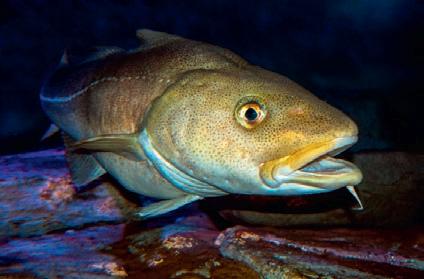
The parasite is not infectious for humans.
The discovery was first unveiled by the Norwegian seafood news site Fiskeribladet but the national broadcaster NRK has now taken it to a wider public audience.
Norwegian Institute of Marine Research scientist Arne Levsen told NRK: “ ou can literally scrape off the meat with a spoon. The entire muscle structure dissolves. So there are very strong en ymes that are in ux.”
It was discovered off Norway quite by chance around the Helgeland coast in Nordland, normally a strongly cold water area.
Cod farms should be able to provide much greater protection, but the industry is closely monitoring developments at sea.
The parasite was discovered by chance in three out of 1 coastal cod, following a fishing boat trip off Helgeland. Closer examination under the microscope revealed Kudoa spores.
The discovery has surprised Institute researchers, who are now carrying out further research. Climate change, which brought serious jellyfish attacks last year, is one theory being looked at.
Escaped Lerøy salmon may spread diseases, experts fear
SOME of the fish that escaped from a Ler y Seafood facility in Norway could be carrying serious diseases, it is being reported.
Some 14,000 salmon with an average weight of just over seven kilos got out of a Ler y Midt facility in the Hitra municipality.
It was subsequently disclosed in the Norwegian press that bacterial kidney disease (BKD) and the pancreatic disease (PD) have been detected at the site.
Biologists have said that because the salmon are so large, virtually at slaughter weight, many of them will end up in local rivers. They maintain there is a high risk of wild fish becoming infected. If BKD spreads, this could pose a threat to wild salmon.
Ler y Midt said it has an emergency plan, which it has been able to put into action. This included putting out recapture nets and more of these will be deployed.
The company added: “This should not happen. We have
a vision of ero escapes and take this very seriously.
“Ler y has its own environmental and safety group which has now started work to determine the cause of the escape.
“Our priority now is to limit the extent of the damage and learn from the incident to avoid future escapes.”
“We know that the salmon is close to the red list and that BKD can cause mortality to fry, so this is serious,”
said Professor Are Nylund, Professor of Fish Health at the niversity of Bergen, to the Norwegian news site Dagbladet, through its B rsen channel.
He added: “All cases of escaped salmon are serious, but it is especially serious when it is infected with a disease that can lead to infection of fry.”
The site was closed by the Norwegian Food Safety Authority to allow further tests to be carried out.
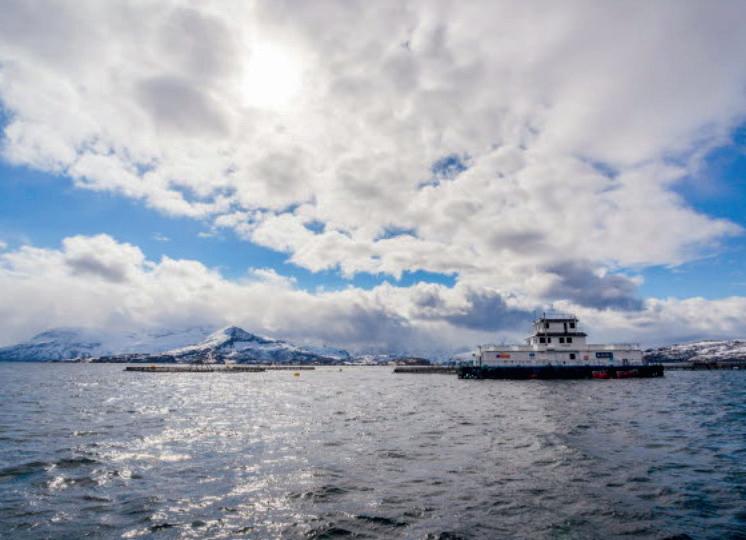
www.fishfarmermagazine.com 16 EUROPEAN NEWS
Above: Ler y site and vessel
Left: Atlantic cod
Above: Ivan indheim
AKVA order book strong despite Land Based disappointment

AKVA Group, one of the world’s leading aquaculture technology and service businesses, has seen a 10% reduction in first quarter revenues, with slow progress in its land based sector.
The EBITDA was up, however, and the company is reporting a strong order book.
AKVA said there was acceptable activity level in sea based farming with improved profitability, but activity in land based operations was still slow. The group did not expect to sign any significant new contracts in this area during the first half of this year.
The group, which has offices in 11 countries, including Inverness, Scotland, delivered 2024 Q1 revenues of NOK 784m (£56.8m) against NOK 874m (£63m) a year ago.
EBITDA (earnings before interest, depreciation and amortisation) increased from NOK 59m (£4.2m) last year to NOK 67m (almost £4.9m) .
AKVA said the total order intake between January and March was NOK 917m (£66.5m), supported by strong order intake of NOK 800m (£58m) in Sea Based Technology.
A notable win for the group, worth NOK 160m (£11.8m) was the award of a contract for three new barges.
Netting solutions since 1778
• Fish
Cage Nets – Nylon & HDPE
• Predator Solutions
• Net Service Plant
• Antifoulant
• Net interface system
• Net recycling routes
• Supplier of LIFT-UP
Revenue for Land Based Technology was NOK 101m (£7.45m), down from NOK 192m (£14.2m) in Q1 2023.
The group order backlog at the end of the quarter was NOK 2,599m (£187m).
Group EBIT, or operational profit, was NOK 20m (£1.45m) up from NOK 11m (£780,000).
The company added: “The outlook for the post smolt market in Norway is still challenging due to the resource tax but is expected to normalise during the second half of 2024. Profitability improved, compared to last year, but is still below expectations.
“The profit margin in the land based business is influenced by the low activity level and to some extent closing of old contracts. The profitability in sea based is acceptable, supported by a healthy product mix.”
Sea Based revenues were slightly down during the period at NOK 646m (£47m).
The group order intake in Q1 2024 was NOK 800m (£58m) compared to NOK 613m (£44m) in Q1 2023.
AKVA said salmon prices are expected to remain strong driven by reduced supply.
AKVA is aiming for a revenue of around NOK 3.6bn (£265m) and an EBIT of 4-5% in 2024.


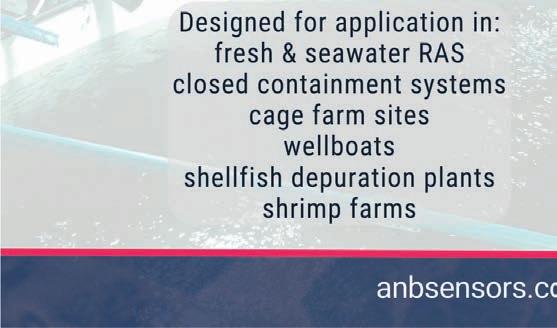
www.fishfarmermagazine.com 17
Above: AKVA Group at Aqua Nor
W & J Knox Ltd.indd 1
AquaBounty remortgages farm sites
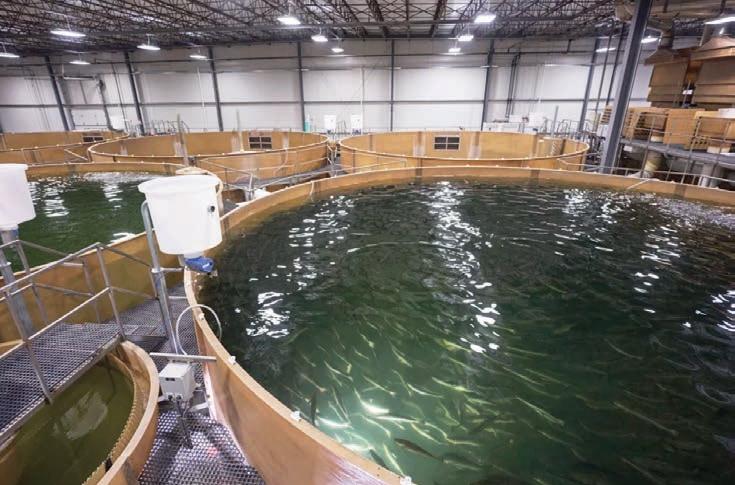
US land-based salmon farmer AquaBounty Technologies is using its farm sites as collateral to raise up to $10m (£8m) to boost its working capital and clear an existing debt.
AquaBounty has developed a strain of genetically modified salmon that combines Atlantic salmon with genes from two other species. The company has a RAS (recirculating aquaculture
system) plant in Albany, Indiana, and is building a bigger farm in Pioneer, Ohio, for which construction costs have soared past initial estimates.
The company is borrowing the cash in two equal tranches from JMB Capital Partners. Part of this – just over $2,800 (£2,240) – will be used to buy out a loan agreement with First Farmers Bank & Trust, which holds the existing mortgage on AquaBounty’s Albany site. The latest transaction sees that mortgage transfer to JMB.
AquaBounty’s financial difficulties have been well documented. In February it announced it was putting its Indiana site on the market in an effort to raise funds and strengthen its balance sheet and last month it reported a year-onyear revenue increase for Q1, but with significantly increased losses.
Work on the Ohio site, which is planned to have an annual production capacity of 100,000 tonnes, was paused last year in the face of rising costs.
Canada facing ‘alarming’ drop in salmon output
CANADA is facing an alarming decline in salmon farming production, the industry’s main body has warned.
The Canadian Aquaculture Industry Alliance (CAIA) says the decline is the equivalent of 390 million meals.
The Alliance is now urging the federal government in Ottawa to start making “science-based, common-sense decisions” about ocean-based aquaculture to enable salmon farmers to regain lost production and provide affordable meals to Canadian families.
It says farm-raised salmon production in Canada fell from a peak of 148,000 metric tonnes in 2016 to 90,000 metric tonnes in 2023, the lowest figure since the year 2000.
“Farm-raised salmon is the most popular seafood choice of Canadians,” CAIA maintains.
“This reduction from the peak in 2016 adds up to the equivalent of eliminating more than 390 million salmon meals in total, and when considering Canadian-raised salmon that is not exported, removing 192 million salmon meals from the dining tables of Canadian households.”
Tim Kennedy, the CAIA president and CEO, said: “Canadians have said again and again that they want access to more Canadian-produced food. In the case of Canadian-raised salmon, they’re being denied and are seeing less and less.”
He continued: “Canada’s modern ocean salmon farming is among the most sustainable in the world with all farms being certified to international third-party standards and operating under modern regulations to protect the environment.
“The farm closures in BC since 2020 have not been based on science and have not put Canadian consumers’ best interests and health first.
“The peer-reviewed science consistently shows salmon farms have a less-than-minimal impact on wild salmon and salmon is one of the healthiest products for consumers.”
Kennedy added: “For a country with so much potential,
the overall reduction of Canadian-raised salmon is staggering,”
“We are ocean farming less than 1% of the viable area along our coastlines and producing less and less of an important domestic food supply when the market demand is remaining steady.”
The CAIA says that for many years Canada has been the fourth largest salmon producer in the world behind Norway, Chile and Scotland.
But it now risks being overtaken by the likes of Australia and the Faroe Islands which produced 77,600 tonnes and 89,100 tonnes respectively.
Meanwhile, the BC Salmon Farmers Association is asking its supporters to write to British Columbia Premier David Eby to make the case for aquaculture, suggesting a pro forma letter which includes the plea: “The potential for salmon farming to increase its contribution to rural coastal communities and mainland BC is great. However, the sector requires business certainty and support from the government to achieve this.”







WORLD NEWS World news www.fishfarmermagazine.com 18
Right: David Eby
Above: AquaBounty’s RAS farm, Albany, Indiana
Cermaq finance chief moves to Atlantic Sapphire
THE Florida land-based salmon company Atlantic Sapphire has appointed a new chief financial officer.
The new CFO is Gunnar Aasbo-Skinderhaug who is moving from Cermaq. Atlantic Sapphire said the appointment will strengthen its leadership team, bringing operational and financial experience from the salmon farming industry to secure its path toward profitability.
With this appointment, taking effect from 1 July, Atlantic Sapphire said it further aims to enhance its capabilities and ensure readiness for the upcoming phase two expansion project.
The current CFO Karl Øystein Øyehaug has decided to resign from his position.
Gunnar Aasbo-Skinderhaug has more than 15 years’ experience in seafood and salmon farming and joins Atlantic Sapphire from the position as Director of Cermaq Norway Salmon. He has also had multiple executive roles in Norway and worked on operational improvements in the Norwegian and Chilean operations of Cermaq.


Aasbo-Skinderhaug has also had more than 10 years’ experience as CFO, including with previously Oslo Stock Exchangelisted Aker Seafoods, and several years of experience with land-based farming.
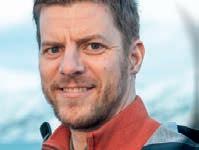

He said: “I am proud to get this opportunity in Atlantic Sapphire. The demand for salmon is strong while the industry’s supply cannot keep up. The future of salmon farming includes significant production volumes from landbased farms, and Atlantic Sapphire has long experience and a unique position to serve the greatest salmon market in the world with premium salmon.”
Mair named as Sanford CEO
NEW Zealand seafood group Sanford has appointed David Mair as its CEO, with immediate effect. Mair was previously CEO of New Zealand-based engineering firm Skellerup Holdings, a post he stepped down from earlier this year. He replaces Sanford director Craig Ellison, who has been in the acting CEO role since August 2023 and will remain on the Sanford board as a non-independent director.



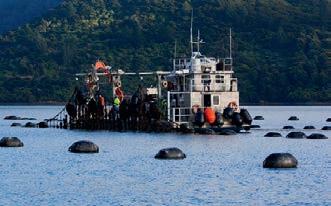

The company’s Chairman, Sir Rob McLeod, said: “The Board would like to thank Craig for his excellent service during this interim period as acting CEO.”
McLeod added: “We are very fortunate to have David as CEO and I am confident that he will deliver exceptional results.”
David Mair was named Deloitte Top 200 CEO of the Year for 2021 in New Zealand and in 2022 he was awarded the prestigious Johnson Partners Leadership Award from the Institute of




Finance Professionals (INFINZ).
Mair said: “It is a privilege to have this opportunity to lead Sanford, an iconic NZ business. I appreciate the support of the Board and look forward to working with the people I have already met and meeting those I haven’t. I am excited about seeing Sanford reach its potential as a sustainable highquality seafood supplier, rewarding both shareholders and staff.”
Sanford is New Zealand’s biggest seafood company. It operates a fishing eet of 13 deepwater and inshore vessels and farms greenshell mussels and king salmon.
THE WORLD OF AQUACULTURE

profiO2 Ceramic
One of the most efficient oxygen vents
The frame is made of seawater-resistant aluminum and the ceramic was specially developed for ultra-fine bubble formation of 100 - 400 microns. This special, extremely fine bubble formation enables efficient oxygen entry into the water.
profiO2 OxyTube
One of the most efficient oxygen vents
Approximately 1,000 holes (0.6 mm) per meter, manufactured using a special manufacturing process, guarantee an extremely fine distribution of oxygen. The perforated pores open at an operating pressure of approx. 0.15 bar. Available by the meter, roll length 35 meters. .. made by professionals for professionals!











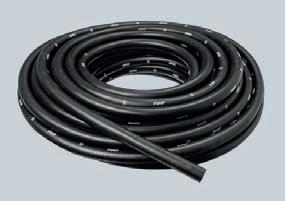

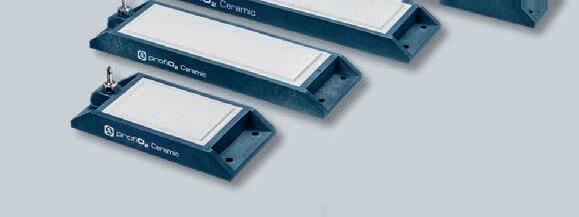

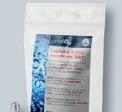








www.fishfarmermagazine.com 19
Above: Gunnar AasboSkinderhaug
www.fiap.com
Above: Sanford mussel farm, New Zealand Left: David Mair
…scrumptious! #1850 #1851 #1852 #1853 #1856#1856-1 #1856-2
Cermaq announces big investment in Chile
CERMAQ has announced that it is planning to invest around 80m in a new RAS fish farm in southern Chile.

Called Nueva PCC, Mitsubishiowned Cermaq said it will be one of its most important projects in the region. It will have a production capacity of 14 million smolts per year. Cermaq Chile said the second stage of the PCC (post-larval capture and cultivation) farm will be called Canal de Chacao Fish Farm. This project, which includes cutting-edge technology in all its production phases, will allow the complete fish cycle to be carried out in fresh water, producing

smolts from eye eggs, with a minimum average weight of 150 grams.

Pedro Courard, eneral Manager of Cermaq Chile, said he was happy to be able to get started.
He said: “Nueva PCC is one of Cermaq’s most important projects not only locally, but also from a global point of view, and is in line with our business strategy in Agua Dulce, where our objective is to improve the quality of our processes, delivering a smolt that maximises performance in the watering phase.”
Cermaq says the investment will be the company’s largest and will incorporate technologies that will fully automate the process,
always ensuring the highest environmental standards.
Among its main characteristics are the use of fresh, brackish and sea water, which generates a better adaptation of the fish for their next phase, and it has 11 epidemiological units which increases biosafety in the production processes.
lvaro Poblete, Production Manager of Cermaq Chile, explained: “It will also incorporate
sustainable waste management through the treatment of sludge with high technology, in order to reduce final disposal, transforming it into a by-product for the generation of fertilisers for agriculture. Likewise, in line with our sustainability strategy, the geographical location is also strategic since it allows direct loading to wellboats, reducing truck movements and optimising time and resources.”

US seafood industry calls for aquaculture funding

US lobby group Stronger America Through Seafood (SATS) is officially requesting that funding for offshore aquaculture be approved by Congress.
SATS has submitted a letter to the Chair of the Senate Subcommittee on Commerce, Justice, Science and Related Agencies, calling for support
of US $25m (£19.9m) for the National Marine Fisheries Service’s (NMFS) Office of Aquaculture and S 14.08m ( 11.2m) for Ocean and Atmospheric Research (OAR) for the Sea rant Aquaculture Research programme.
If approved, the funding for the organisations, which are both part of the S National Oceanic and Atmospheric Administration (NOAA), would be included in the fiscal year 2025 Commerce, Justice and Science (CJS) Appropriations Act.
SATS has also requested that the explanatory statement for the funding package sets out the reason for the programme, including a statement that: “As the fastest growing food production sector in the world, responsible aquaculture development presents opportunities for meaningful economic growth in coastal
Global Seafood Alliance appoints CEO
THE lobal Seafood Alliance ( SA) has named Mike Kocsis (pictured) as its new Chief Executive Officer, after a year-long search. He succeeds Wally Stevens, the former CEO who returned to head the organisation on an interim basis in March last year when the then Chief Executive, Brian Perkins, left the organisation abruptly.
The SA is a S-based international, non-profit trade association dedicated to advancing responsible seafood practices through education, advocacy and third-party assurances.
Kocsis has extensive seafood industry experience spanning two decades. He joined the SA in April 2022 as Chief Systems Officer to oversee certification operations and information technology and was most recently promoted to Chief Strategy Officer in August 2023.
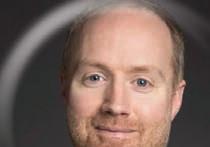
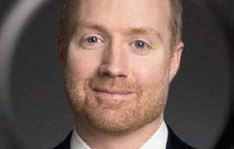
Kocsis joined the seafood industry after completing studies in supply chain management and international business. He holds a Bachelor of Science degree in logistics and international business from Penn State niversity and an MBA from Duke niversity’s Fuqua School of Business.
communities and among their supply chain partners, while ensuring that Americans have access to responsibly farmed local seafood.”
The lobby group added: “Today, the US lags far behind the rest of the world in farmed seafood production, resulting in the US importing up to 85% of its seafood.The single biggest reason is the lack of a clear regulatory pathway for permitting new projects, particularly offshore. This challenging reality has forced many American businesses to invest in other countries.”
The SATS letter concludes: “By prioritising domestic aquaculture, you will support the growth of an American seafood community that is resilient to economic and climate changes and is part of a holistic approach to a greater sustainable food strategy.”
Kocsis said: “I’m excited to continue advancing responsible seafood practices globally with our partners. SA is proud to engage with many of the world’s leading aquaculture and wild-caught seafood producers, retailers, foodservice operators and N Os, and I look forward to closer collaboration as we advance our shared vision.This work isn’t possible without the incredible team at SA.Their commitment to our mission and dedication to continuous improvement inspires me daily. It’s an honour to serve this team and lead SA into the future.”
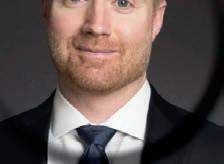
Kocsis’ career includes leadership roles at leading seafood brands like High Liner Foods, King Prince Seafood and orton’s Seafood. In 201 , while serving as P of aquaculture procurement at High Liner Foods, he was recognised on IntraFish’s 40 nder 40 list.
Wally Stevens will assist in Kocsis’ transition into the CEO role and remain a member of the SA board of directors and SA executive committee. Stevens has been involved with the lobal Seafood Alliance for 17 years, joining the lobal Aquaculture Alliance as executive director in 2007.
www.fishfarmermagazine.com 20 WORLD NEWS
Above: Pedro Courard Right: Cermaq’s Nueva PCC
Above: US Capitol building, Washington DC
Nordic Aqua Partners completes first commercial harvest in China
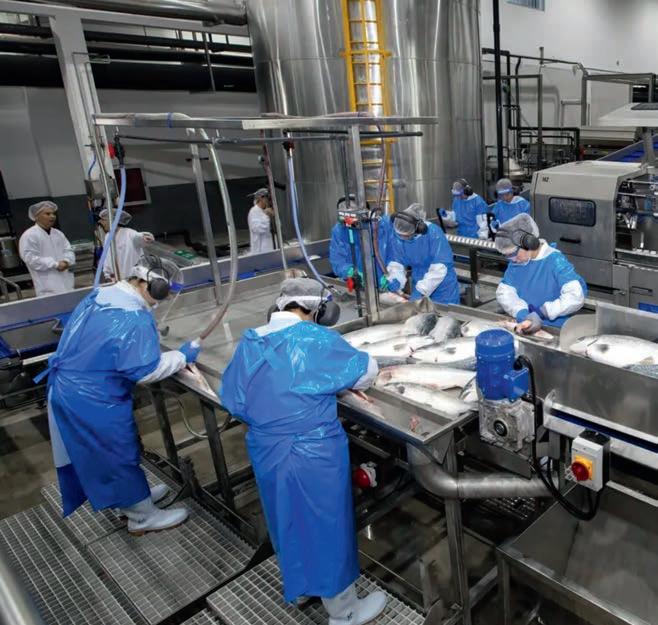
NORDIC Aqua Partners has announced the successful completion of its first commercial harvest of Atlantic salmon produced at its facility in Gaotang, eastern China.
The company described the achievement as a major operational milestone for Nordic Aqua, and added that it would now be introducing the Nordic PureAtlantic brand of salmon to the growing Chinese market.
Chief Executive Officer Ragnar Joensen said: “Our first harvest confirms the high-quality of our farmed Atlantic salmon, achieving an average weight of approximately 5.7 kilograms LW, with mortality rates of below two per cent, no signs of maturation issues and a superior rate of 99%.
Nova Scotia PM speaks out against Cooke fish farm plan
NOVA Scotia Prime Minister Tim Houston (pictured) has come out firmly against Cooke Seafoods’ plan to expand its Liverpool Bay salmon facility.



In February he had already expressed his reservations and he has now said he will directly oppose it.
The decision, however, will be taken by the independent regulator, the Agricultural Review Board (ARB), probably by the end of May.
The company behind the project is the Cooke subsidiary Kelly Cove Salmon which wants to open two new farms, adding more than 1,200,000 salmon in the bay and increasing the stock by at least a third.
The plan has for some time provoked strong opposition from residents living in the Liverpool Bay area.
Houston said many people were worried about the scheme and he

“These excellent biological results underscore Nordic Aqua’s capability to maintaining superior fish health and welfare standards, which translates into premium product quality for the highly attractive Chinese consumer market.”
The company said harvest during the first three weeks will amount to 10, 20 and 30 tons respectively, before gradually increasing and stabilising in the 70-80 ton per week range.
Stage 1 is the first step in an overall plan towards 20,000 tons. Construction for an additional 4,000-ton Stage 2 capacity was initiated in the third quarter 2023, and the preparations for the Stage 3 expansion to 20,000 tons are well underway.
The expansion plan is supported by a strong demand for high-quality, sustainably farmed Atlantic salmon in the Chinese market.
Andreas Thorud, Nordic Aqua’s Managing Director, said: “Nordic Aqua’s strategic positioning within the local market significantly reduces logistics costs and enhances freshness, providing a strong competitive edge.
“The market dynamics are favourable, with the Chinese salmon market showing robust growth and high-price resilience. “
He added: “As the first land-based operation of its scale in China, Nordic Aqua Partners enjoy the first-mover advantage in a market with over 100 million potential consumers reachable within a fivehour distribution radius.”
respected those concerns. “While I think there’s incredible opportunities for aquaculture in this province, it’s my personal opinion that Liverpool Bay is not an appropriate place for that,” he told the broadcaster CBC News.
“The independent board will make their decision. But, for me, I just think when you look at it that some are appropriate, some aren’t, and I just think that would lean more on the ‘not appropriate’.”
Cooke spokesperson Claire Ryan told CBC the company has been working with provincial and federal regulators for several years to prepare its application.
She said: “We appreciate that the premier respects the independent Nova Scotia Aquaculture Review Board process that was established by the provincial government, and we look forward to bringing this application forward to the ARB.”



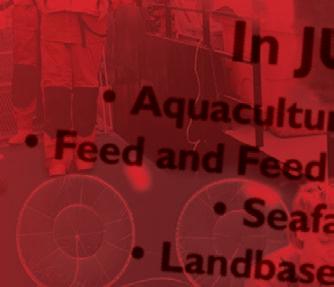

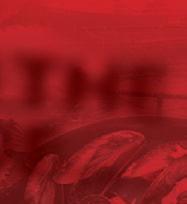

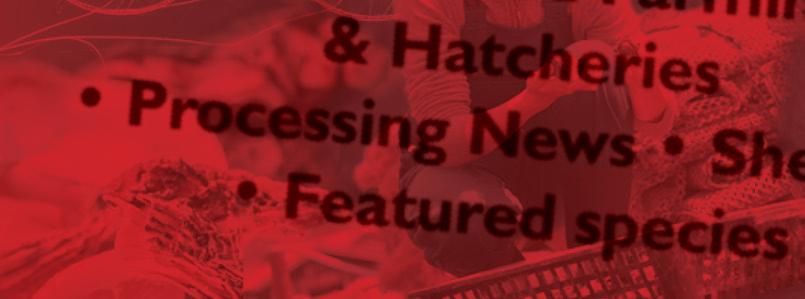
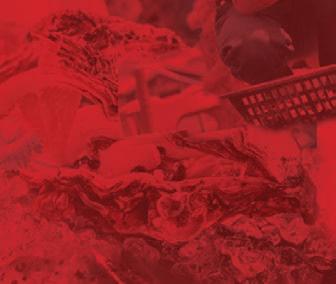
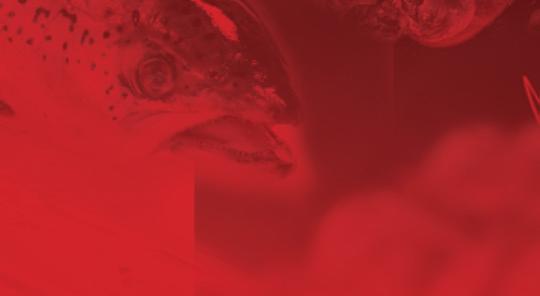

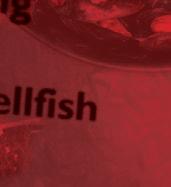



www.fishfarmermagazine.com 21
Above: Nordic Aqua Partners’ first harvest
COMING IN THE NEXT ISSUE... Fish Farmer In JUNE: • Aquaculture UK Review • Feed and Feed Systems Feature • Seafarming • Landbased Farming & Hatcheries • Processing News • Shellfish • Featured species For more information on opportunities for advertising with editorial content around these subjects please contact: Janice Johnston 0044 (0) 131 551 7925 jjohnston@fishfarmermagazine.com Copy deadline - Friday 31 May
BAADER wins contract for Grieg’s new airport seafood centre Processing news
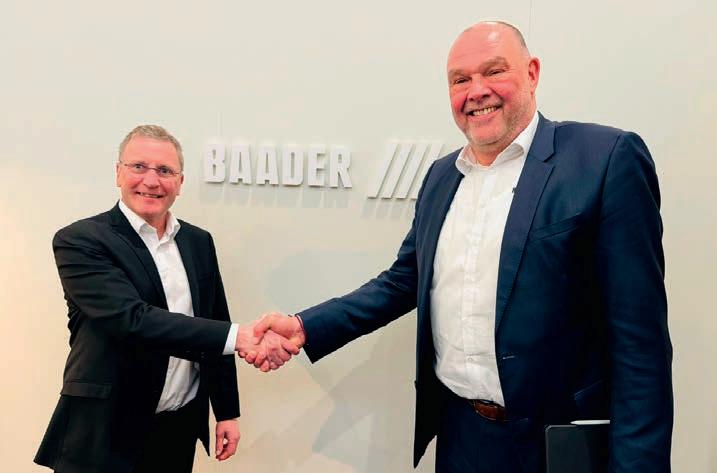
SEAFOOD processing specialist BAADER has won a major contract to fit Grieg’s new seafood centre with a state-ofthe-art filleting system.
The deal was announced at the trade show Seafood Expo Global/Seafood Processing Global in Barcelona.
BAADER will supply processing equipment for Grieg’s new plant at Gardermoen Airport near Oslo, due to be completed in the summer of 2025.
The BAADER delivery encompasses a complete processing line, from raw material reception to finished product packaging, featuring the BA581 Pro for maximum yield and the BA1860 for
precise sorting.
Modulf Barstad of BAADER Norway said: “Being selected to supply equipment for such a benchmark project fills us with pride. The plant is destined to set a new standard for the salmon industry.”
He added: “Our partnership with Grieg Seafood has been intensive and constructive. We’ve leveraged our collective expertise and insights throughout every phase.”
From the ground up Business Development Director at Grieg Seafood, Piotr C. Wingaard also
Dutch seafood firms join forces
TWO leading names in European seafood will be working more closely together, following the announcement that Zalmhuys group has taken a strategic minority stake in Anova Seafood.
Both companies are based in the Netherlands. Zalmhuys group is a market leader in fresh, frozen and smoked salmon, and Anova Seafood is a prominent player in the international distribution and processing of fresh and chilled seafood. The Zalmhuys group said this acquisition signifies an important step forward in strengthening its position in the sourcing, processing and sales of seafood products. Anova’s range of products includes, primarily, whitefish such as cod/saithe, Lake Victoria perch, pangasius and catfish.
Harm ten Napel, CEO of the Zalmhuys group, said: “Adding Anova’s experience and product portfolio to our current business sees a lot of potential and will further strengthen our position in the seafood industry. It will greatly contribute to the philosophy ‘all your seafood in one place’. With Koen Verburg and Erwin Spook, who have been leading Anova Seafood since 2019, we bring experienced seafood professionals into our group. We are confident
commented : “Our factory is one of few salmon processing plants in Norway which have been built from the ground up. Therefore, it will be a state-of-theart facility, something which we are very proud of”.
The factory will be equipped with a fully automatic freezer for by-products and finished goods, guaranteeing 100% utilisation and top quality of all parts of the fish.
BAADER will deliver both mechanical components and software for the entire order from Grieg Seafood.
Grieg Seafood said it is charting a new course with a NOK 130m (£9.48m) investment in its Gardermoen facility, aiming to move closer to consumers by extending their value chain.
This shift includes a transition from solely supplying raw materials to also delivering 25% of their products as finished goods, alongside a heightened emphasis on environmental, social, and governance (ESG) principles.
The strategy, according to Wingaard, involves reducing the company’s climate impact by substituting airfreighted whole fish with locally processed fillets.
in the growth potential that comes from combining our strengths and look forward to a prosperous future together.” “The plant is destined to set a new standard ”
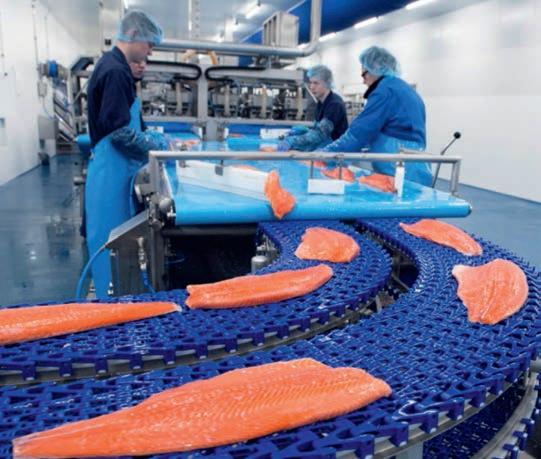
PROCESSING NEWS www.fishfarmermagazine.com 22
Above: Grieg Managing Director Andreas Kvame (left) with Robert Focke, CEO, Fish, with BAADER
Above: Zalmhuys filleting line
Ace Aquatec and start-up work together to cut waste
AQUACULTURE technology specialist Ace Aquatec is working with start-up Tiny Fish to help the Scottish salmon sector find a premium market for fish once seen as too small to use for anything but feed or fertiliser.
Salmon raised at farms in Scotland achieve a monthly survival rate ranging from 97-99% throughout their life cycle, with these fish losses being traditionally repurposed into compost or bioenergy.
However, during the salmon’s freshwater phase (the first year after hatching), a selection of small salmon may be humanely removed from the population to allow for the best salmon to be raised at sea to a market size of about five kilograms. This selection of fresh fish in the hatchery phase provides an opportunity to market them as premium foods.
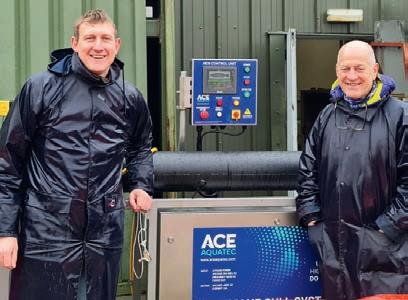
Tiny Fish harvest, collect, freeze, package and store the small salmon for value-added distribution channels to restaurants, hotels, takeaways, zoos, aquariums and pet food suppliers across the UK, “making every fish count”. To facilitate a humane, safe, and efficient process to prepare small salmon for these unique markets, the salmon farming sector has employed Ace Aquatec’s Humane Culling System (A-HCS®), a smaller
and more portable version of the company’s award-winning Humane Stunner Universal (A-HSU®).
Amongst the partnership’s freshwater clients are seafood giant Mowi and Landcatch. Mowi has already seen positive outcomes for sustainability when some of their smallest fry and parr (salmon which are not yet at smolt stage) have been utilised for human consumption and for pet food producers like Golden Acre Pet Foods.
The partnership has been shortlisted for the “Collaboration” category at the Aquaculture Awards 2024, on 15 May.
Tara McGregor-Woodhams, Chief Sales and Marketing Officer at Ace Aquatec, commented: “The goal of this partnership of making every fish count is closely aligned with our own commitment to sustainability at Ace Aquatec. This collaboration has created a real opportunity for Scottish producers to show the global aquaculture sector that putting welfare and zero food waste at the heart of processing is easy to achieve and the right thing to do.”
Teresa Garzon, pioneer of Tiny Fish, said: “This initiative is an opportunity to demonstrate the commitment of the Scottish aquaculture industry in driving sustainability across the harvesting process.”
Asda recalls wrongly labelled king prawn product
THE Asda supermarket group has pulled cul�vated fresh king prawn product from its shelves over mislabelling; a mistake which could make them unsafe.
Asda warned the public not to eat the product. It is labelled “Asda Succulent Cooked and Peeled King Prawns 210 grams”. These are fresh, rather
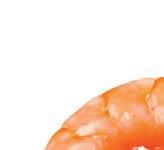


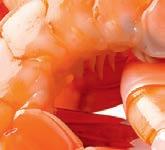

than frozen, and should be returned to the store for a refund.
Point-of-sale no�ces will be displayed in Asda stores with more informa�on about the warning and what customers should do if they have bought the product.


EU salmon processors increase prod-fish pressure


Asda added: “The product has been incorrectly coded with the use by date 21 December. The correct use by date is the 21 April. The product should not be consumed past this date.
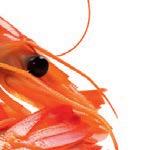

“If you have purchased Asda Succulent Cooked & Peeled King Prawns with use by date of 21 December, batch number L66000 please bring it back to your nearest store where you will be given a full refund. You do not need your receipt.”
Lerøy facing new listeria discovery claims
THE Lerøy Seafood Company has been hit by claims of a new discovery of the listeria bacterium at one of its Norwegian sites, according to Norway’s national broadcaster NRK.
NRK said the discovery is at a Lerøy Midt slaughterhouse in Trondelag county.
The Norwegian Food Safety Authority told Lerøy that it must inform customers of the discovery.
Two years ago several people in Sweden were taken ill with
listeria complications resulting in seven deaths.
The Swedish Food Safety Authority said salmon was the likely source but Lerøy has challenged claims that it came from its sites.

Lerøy’s Head of Quality, AnneHilde Midttveit, told NRK that the type of listeria found at the site was common in the local environment and the industry in general.
She said it has not been
determined where the outbreak originated, adding that food safety was of the highest priority at the company which had implemented all the recommendations from the Food Safety Authority.
EUROPEAN Union salmon processors are demanding that Norway calls an end to the ban on exporting “prod” or damaged fish.
The joint call has come from the EU Salmon Processors Union which includes key countries such as Poland, Denmark and the Netherlands.
The Norwegian authorities, and much of its salmon industry, is so far resisting the demands.
The Union has described the situation as “facing a crucial challenge that affects us all”, adding: “It is high time we take collective action”. It claims the Norwegian ban is creating very high prices for superior and ordinary fish.
The statement said: “This export ban favours a couple of domestic Norwegian salmon processors, while leaving thousands of EU salmon buyers with lacking availability and extreme prices for superior and ordinary salmon.”
The Union says this is urgent and important for the future of its member businesses and the “industry in general.”
“Norway categorises salmon as superior, ordinary, and production grade salmon (also known as prod-fish). It allows superior and ordinary fish to be exported but prohibits the sale of prod-fish. Prod-fish must be processed domestically into fillets so that visual deformities can be removed and the quality image of Norwegian salmon is secured.”
It says the use of prod-fish from Norway used to be less than 8% but this share has now risen to more than 40% during certain (mainly winter) times of the year, creating a chaotic situation.
www.fishfarmermagazine.com 23
Above: Damaged fish cannot be sold whole - or exported from Norway
Above from left: Ace Aquatec Head of Sales Ben Perry and Senior Field Services Manager Ian Lawson with the A-HCS®
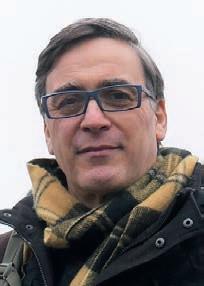



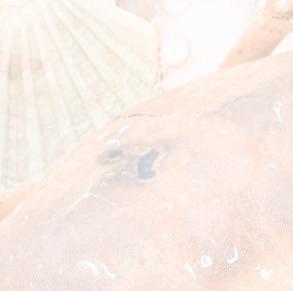
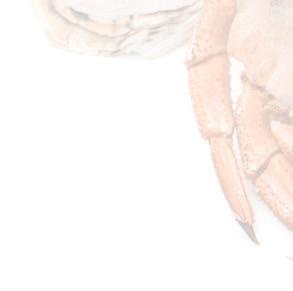

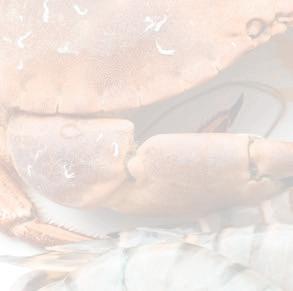

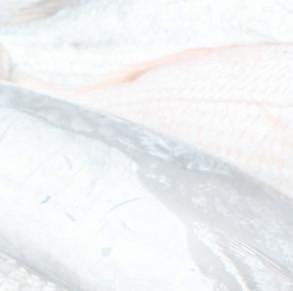




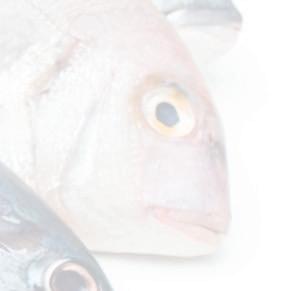
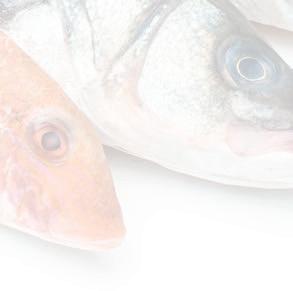



Counter argument


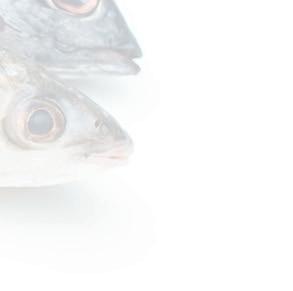

Dr Martin Jaffa asks: Is the consumer’s reluctance to try different fish actually the fault of the industry and retailers?
AN article in the Guardian newspaper looked at why people reject so much of the bountiful catches from the sea in favour of the same few species. The article asks how reliance on just a handful of popular fish species can be changed.
This is a question which I have seen asked repeatedly over many years and I am afraid that the Guardian’s long article does not provide any solution. Instead, it suggests that consumers wanting to move away from the Big Five should engage with their local fishmonger and ask for advice or consult with the Marine Conservation Society’s Good Fish Guide to seek more sustainable choices.
Unfortunately, those who pose these questions have no understanding that the people eating these popular species do not buy their fish from a fishmonger and are not ever likely to. Certainly, they are unlikely to have even heard of the Good Fish Guide, let alone consult it. In addition, the Guardian also wrongly assumes that local fishmongers and the MCS are even aware of the dynamics of the consumer market.
The article theorises as to why consumers in the developed world have become more reliant on a handful of fish and seafood species, but the reasons are simple. For example, the fish and seafood sector has been extremely slow to react, if at all, to gradual changes in consumer behaviour and demand in post WW2 Britain.
By comparison, the Guardian article highlights that the Marine Conservation Society has said that consumer palates have been dulled by the way that the public shop. They suggest that our diets
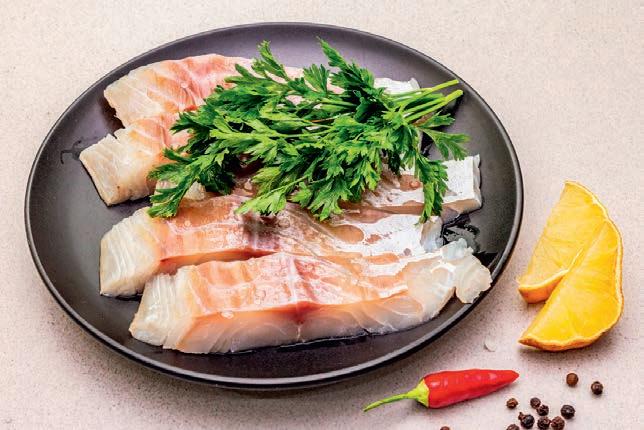
have been homogenised especially around seafood probably due to our over-reliance on supermarkets for our food.
I would suggest that this is an oversimplification on the part of an organisation whose staff are probably too young to recognise the way that the market developed. Undoubtedly, supermarkets have aided the move towards convenience but when it comes to fish, they focused on a traditional fish counter as this was perceived to be part of the theatre of retailing. What it didn’t offer was a modern view of convenience.
(In)convenience stores
Supermarket fish counters came late to the convenience party by starting to offer boneless fillets etc, by which time it was too late. It is likely that a whole generation moved away from inconvenient fish to other more convenient foods and by the time that retailers started to understand what consumers really wanted, fish had already disappeared from many diets. Eventually, supermarkets responded with the development of chilled, prepacked fish and, as such products started to attract consumers, the supermarket fish counter went into decline.
However, the real gamechanger was the arrival of farmed salmon to the supermarket. Its predictable quality, availability and price meant that salmon was ripe for development as a convenience fish that has never really been matched.
Salmon continues to dominate the chilled fish section, together with prawns. The other fish that make up the Big Five tend to be used more in frozen and ambient products than in chilled. What is interesting is that it is the frozen sector that is riper for change than chilled, yet when there was a chance to encourage the use of other species, the sector did not deliver.
Some years ago, one of the NGOs warned that cod stocks were about the collapse and as cod was widely used in frozen breaded and battered products, this caused an issue. In response the frozen food companies changed to an alternative white fish. However, rather than seek locally caught alternatives, imported Alaska pollock became the fish of choice. More recently, as cod stocks have recovered, as well as supplies sourced from Norway and Iceland, cod has been readopted by the frozen food companies as the fish of choice. Yet, consumers appeared happy to buy frozen fish products made from Alaskan pollock, so the change back to cod was not in response to consumer demand.
Interestingly, to maximise the margins there has been a more recent change away from cod. Yet again, however, local alternatives such as whiting or coley have been disregarded in favour of
www.fishfarmermagazine.com 24 COMMENT
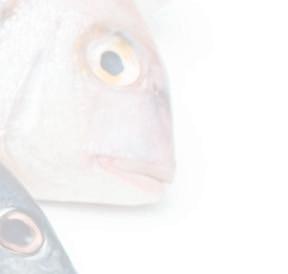


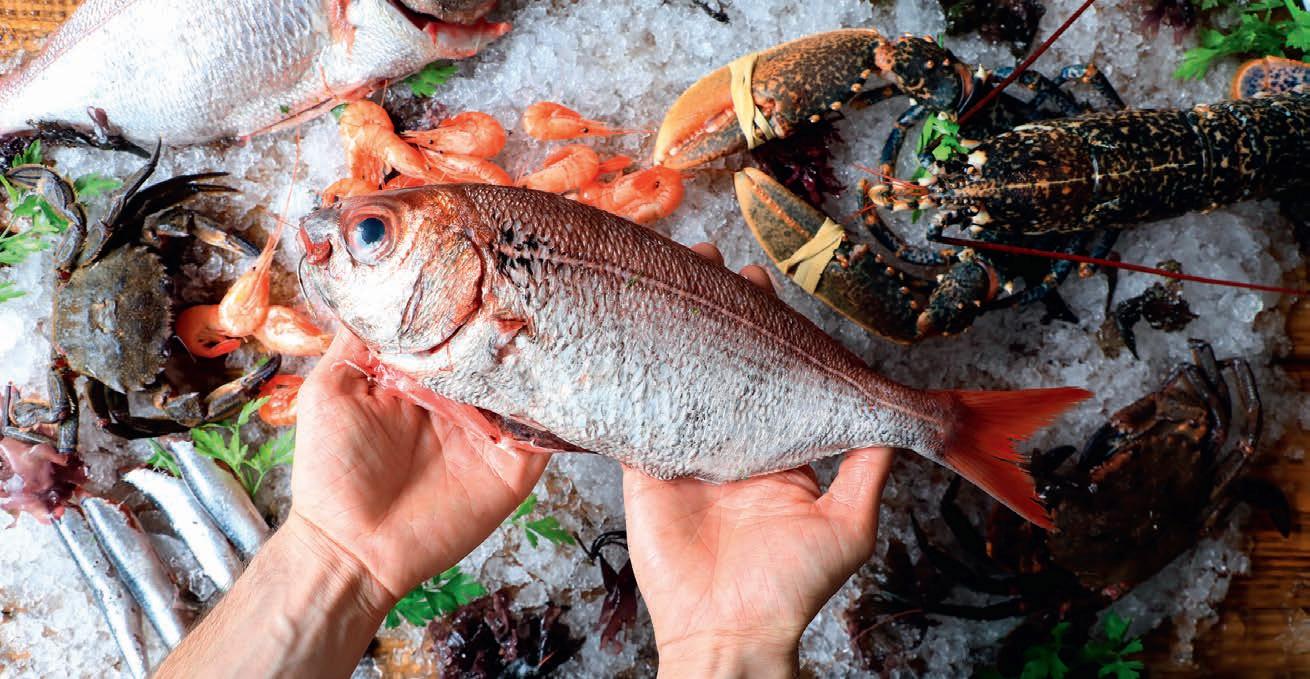
the Guardian, is deter consumers from eating any fish, not convince them to change.
Thinking outside the box
Over many years, I have watched various attempts to persuade consumers to choose alternative species and all have failed. Seafish, the public body supporting the industry and who should be driving change, pulled out of marketing because their fee payers could not see outside their own little markets.
”My own view is that I don’t see a problem with reliance on a few species. If consumers are eating just salmon and cod, then that it is better than not eating any fish at all. I believe that all these articles do, such as the one in
The real gamechanger was the arrival of farmed salmon
I would argue that to get consumers to eat a wider variety of fish needs thinking well outside the box. Unfortunately, the existing industry is not organised to do this. I once proposed that the best way to encourage alternative fish consumption is that the government should source alternative species for their institutions. A funding proposal to the Seafood Innovation Fund to explore this idea was rejected in favour of one that renamed the flatfish megrim as Cornish sole!
Whilst articles about the need to eat alternative species appear regularly in the press, those who advocate such change do nothing to instigate such change. If NGOs like MCS want consumers to change their eating habits, then they should do something about it, not just talk.
Another article in the Guardian included recommendations from the MCS as to alternatives to the Big Five. For farmed salmon, they suggest farmed trout. Other than the fact that trout are not farmed on the same scale as salmon, it is unclear what benefit such a change would bring. Trout are lovely fish to eat and should be eaten in their own right, not as a swop. As an alternative to prawns, the recommendation is to eat mussels. Whilst it is unclear how such a substitution would work in many recipes, mussels too should be eaten in their own right, not as an alternative. The best alternative is for the public to eat what they like. Then they can’t go wrong at all!
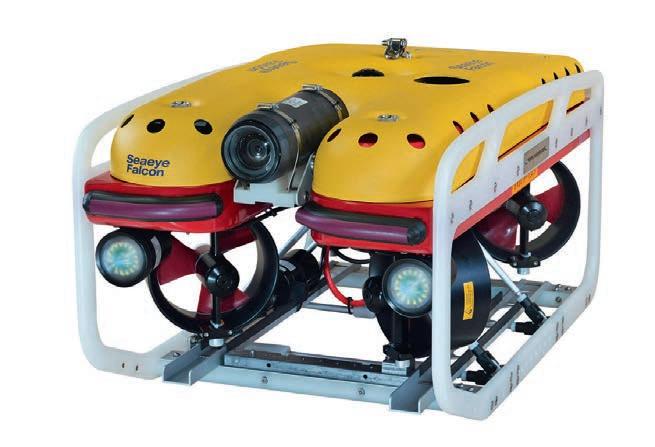 Above: arie es of seafoo
Opposite: olloc ish
Above: arie es of seafoo
Opposite: olloc ish
www.fishfarmermagazine.com 25
another imported fish, Pangasius – farmed Vietnamese catfish. This trend is not consumer driven.
EMPOWERING World leading electric underwater robotics for Aquaculture saabseaeye.com Seaeye Falcon

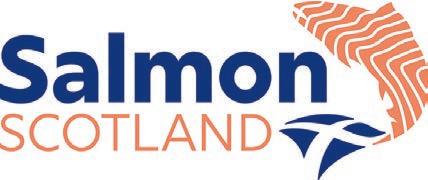
Time to hit the reset button
Salmon Scotland chief executive Tavish Scott argues that the government’s task is to create the conditions for change and growth, not interfere or hold back business
My daughter runs a family farm, and we are in the midst of lambing.
This means an hourly check on pregnant ewes as well as the weather forecast.
Rain and particularly wind can mean cold lambs; sunshine means happy sheep and growing grass.
Watching and feeding animals while attending to problems is a skillset for a shepherd as for a fish farmer – farming and fish farming have many features in common.
As I crossed Bressay Sound to the farm in my role as undershepherd, two Inverlussa vessels were dwarfed by the majesty of a three-masted Polish schooner.
Lerwick is a busy port. The nightly ferry arrives from Aberdeen, and 120 cruise liners moor in the Sound disgorging tens of thousands of visitors between Easter and October.
But the mainstays of economic activity are salmon farming and the wider seafood sectors.
The day-to-day activities of active people in business and local places can often seem remote from those trusted to run the country who appear obsessed by themselves and their future.
I listen to radio news during lambing days, and the soap opera that is UK politics switches from London to Edinburgh and back again.
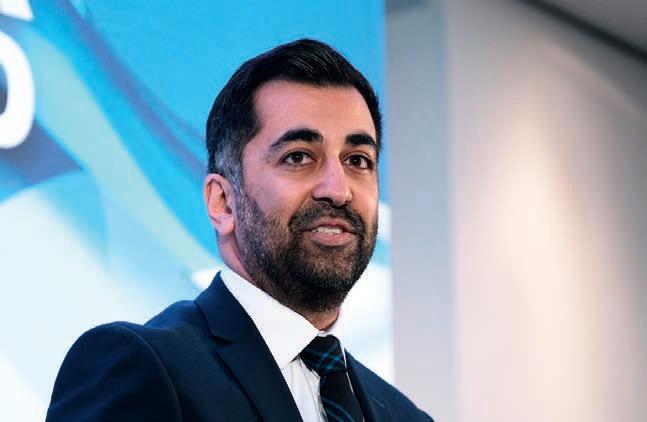


Very little news is about the needs of local communities or business.
The contrast with the scale, professionalism and can-do of last month’s Barcelona’s Seafood Expo Global (SEG24) could not be greater.
The Barcelona event is the definition of commerce – last week sales were made, contracts worked out, and contacts developed.
To her great credit, Scottish Rural Affairs Secretary Mairi Gougeon spoke to numerous seafood people and companies during her day at SEG24.
She found time too for an ad hoc meeting with Margaret Johnson, the Aquaculture Minister of New Brunswick in Canada, which matters as the Scottish-Canadian connections endure.
Scotland’s minister for seafood was pushed politely but firmly on delivery by her government.
Scottish salmon is the UK’s leading food export by volume, and we could be even stronger – the demand for premium fish from Scotland is considerable.
Companies need the business conditions to succeed, which means real progress

Does the removal of the Greens from the Scottish Government mean a change of direction?
SALMON SCOTLAND
www.fishfarmermagazine.com ” 26
Below: Humza Yousaf, outgoing First Minister Opposite from top: Scottish arliament e a ng cham er orna Slater and Patrick Harvie, Colea ers of the Scottish Greens
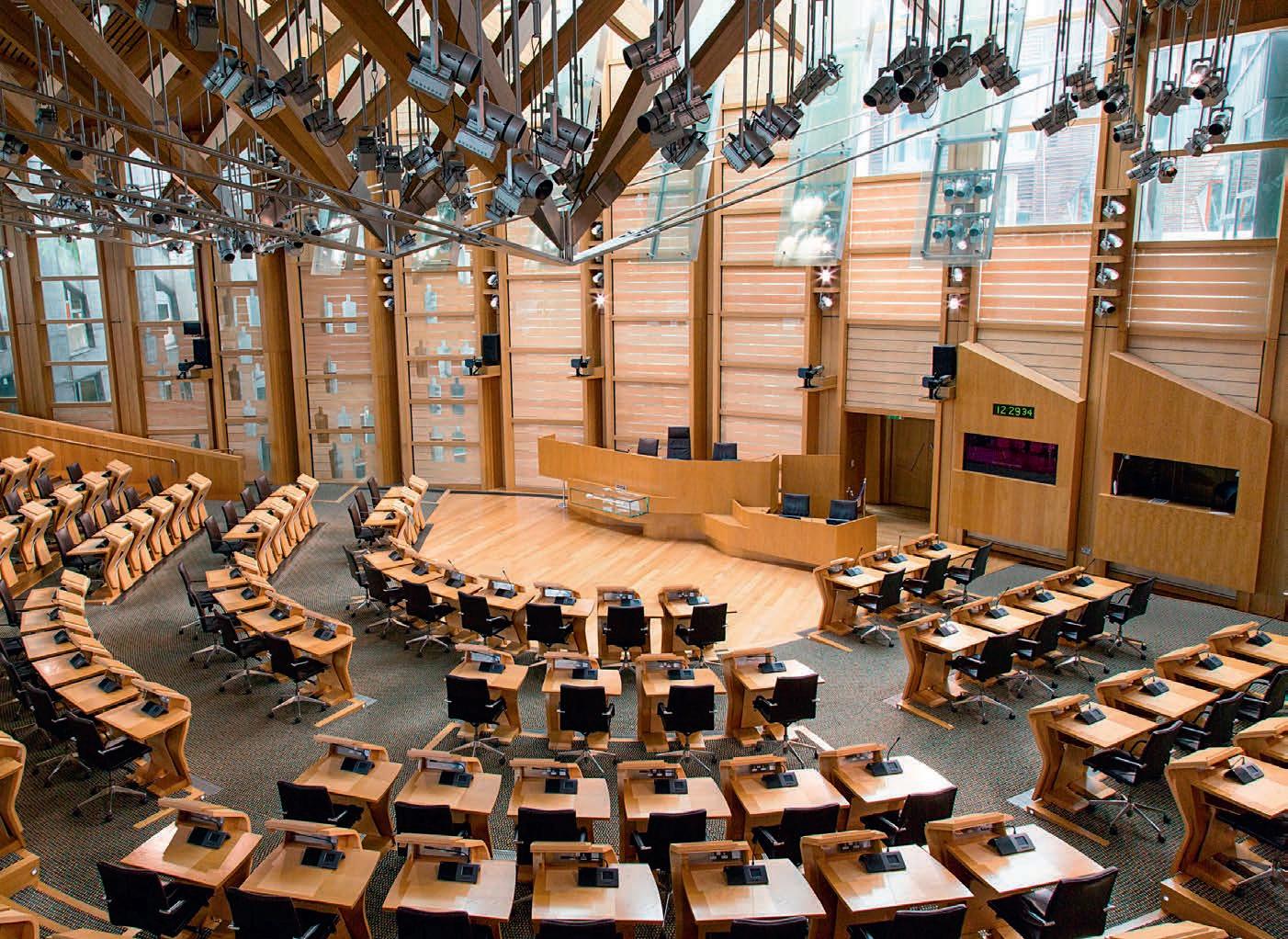
on a consenting system which still involves four different regulators – we do not yet have the “one-stop shop” recommended by Professor Russel Griggs.
Nor do we have clear, accountable leadership in the fish farm consenting process. Regulators miss statutory targets, yet nothing happens.
So does the removal of the Greens from the Scottish Government mean a change of direction?
At the time of writing, Humza Yousaf has announced his resignation, but what happens next is unclear.
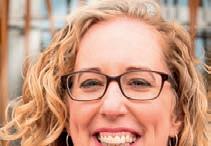
Everyone in Scotland earning more than £27,000 per year pays more to the government than south of the border.

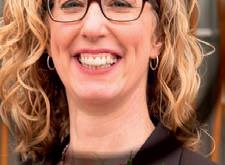
Will there be a full reset of the Scottish Government? Is the end of the Bute House Agreement helpful? Time will tell.
Time for a real-world approach
The occupant of Bute House in Edinburgh’s Charlotte Square until the Holyrood election in May 2026 matters to our sector.
Barring unforeseen events, Scotland will have a minority SNP government for the remainder of this parliament.
This is the legacy of the Scottish Green Party: they are openly anti-economic growth, anti-business, and do not resort to facts, evidence, science or data to inform their position towards many sectors of our economy that employ hundreds of thousands of people.
They are an extreme party on the fringes, and few people running businesses will mourn their departure from government.

What Scottish business does need is a real-world approach to climate change.
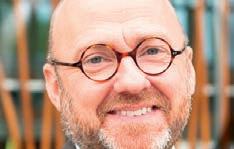

That means no significant new laws unless the SNP has cut a deal with another party, and it means government by ministerial action.
That does not bode well for business. Why? Because action is what we have not seen.
Over the last 12 months with Humza Yousaf as First Minister there has been a focus on what has stopped, rather than new initiatives to boost the economy.
Yousaf rightly ditched HPMAs (Highly Protected Marine Areas) which would have halted all economic activity in coastal waters, shelved the Deposit Return Scheme, and binned a ban on alcohol promotions which had obviously not been discussed with our friends and colleagues in the whisky sector.
Tax is the most significant change made by the now defunct SNP-Green coalition.
A reset of the Edinburgh government could take its many regulators and move them into the world we live in.
Regulators should regulate the future not the past. Climate change is a genuine challenge for government and business, so regulators could be given a mandate to help business achieve net zero in greenhouse gas emissions by a target date.
That date should not be set by political criteria (the idea that Scotland must be faster than London no matter what), but by criteria based on climate science.
The market will provide solutions – just look at marine engines and boat design.
The salmon sector now has many vessels delivering people to sea pens that are electrically powered.
We also have hybrid feed barges and larger vessels; innovation in the marketplace is driving positive change.
Government’s task is to create the conditions for change and growth, not interfere or hold back business.
A reset government in Edinburgh should fully embrace such an approach.
Tavish Scott is Chief Executive of Salmon Scotland.
www.fishfarmermagazine.com
27






The greatest (seafood) show on earth

AVISIT to Seafood Expo Global (SEG) is an overwhelming experience for the senses, with all manner of fish, shellfish, seaweed products and equipment on display, the sound of thousands of exhibitors and visitors discussing business, the aroma of cooking demonstrations and tasting sessions, and an allpervading smell of the sea. Multiply this through five vast halls, and it’s easy to see why it takes three days to do the expo justice.
On the farmed shellfish front, there were mussels, scallops, oysters, clams, sea cucumbers and sea urchins galore, and I even heard about a Norwegian company producing a farmed tunicate burger!
There were oysters aplenty from France, Italy, Ireland, Netherlands, Spain and the UK, and as far afield as Canada, the US and China.
The French Pavilion featured many oyster companies, who exhibited according to their region. Brittany, Normandy and Marennes-Oleron in particular offered a vast choice, and I discovered that there are 12 main growing areas for oysters in Brittany alone. Suppliers of seed oysters were also in evidence.
The oyster choice included native flat oysters (Ostrea edulis) known as huîtres plates, or Belons if they are grown in the Belon river estuary in Brittany. There was a large selection of Pacific oysters (Magallana gigas), including fines de claire, specials de claire and pousse en claire, which are finished in knee-deep rectangular salt ponds knows as Claires, for a minimum of one month. This allows the oysters to fatten and to take on a sweeter flavour from the
They are also a great way to tempt younger consumers into the world of oysters
www.fishfarmermagazine.com SHELLFISH
Nicki Holmyard reports on Seafood Expo Global, with a shellfish industry perspective
”
28
Left: Mairi Gougeon meets the Scottish Shellfish team Opposite from top: Corinne Raguenel; Oyster products; Oysters in basket
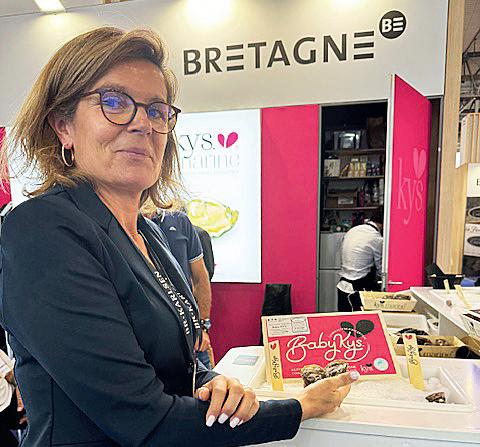


quality and find that this enables us to produce oysters with an exceptional meat content and a sweet taste.”
Raguenel explained that in looking for a point of difference, they have concentrated on growing their “Baby Kys” oysters, which are the perfect cocktail size, have full meats, and are in great demand. They are also a great way to tempt younger consumers into the world of oysters.
Mussels of the world
developed as a luxury product for Aldi, were selected as a finalist in the Best Retail Product category for the 2024 Seafood Excellence Global Awards at SEG.
Shellfish tech



water and phytoplankton in the ponds. Also available were fine de claire verte, which are finished in ponds containing Haslea ostrearia. This diatom produces a water-soluble blue pigment called marennine, which is responsible for turning oyster gills a rich jade colour and also enriches their flavour.
Oysters are ranked according to their size and there were certainly some “whoppers” on display, particularly flat oysters. The size gradings range from 0 – 5 for Pacific oysters and 0 – 6 for flat oysters, and the smaller the number, the larger the oyster. Number 1s for example, weight between 110g and 150g+.
With such an impressive choice, I wondered how customers decide on a particular supplier. Corinne Raguenel, who farms oysters in southern Brittany with business partner Christophe Callewaert and sells under their KYS Marine brand, said that for the French, who are spoiled for choice, it comes down to a matter of shape, size, taste, the personal relationships that sellers develop with buyers, and often a touch of “local is best” prejudice.
“We sell all over the world, from local sales in France, to the Netherlands, Belgium, Switzerland and Italy and increasingly in the Far East,” she said.
“We keep the density low in our hanging bag oyster system in order to prioritise
On the mussel front, the Chilean, Danish, Dutch, French, Irish, Scottish and Spanish pavilions stood out for the ever-growing range of prepared products, displayed alongside fresh blue, Mediterranean and bouchot mussels.
French company Mussella, which started out with the aim of finding a home for undersized bouchot mussels less than 12mm, has grown from strength to strength over the past few years.
Director Axel Brière, who comes from a mussel farming family in Pénestin, first developed a market for frozen, cooked bouchot mussel meats, under the Paysans de la Mer brand, then started selling pasteurised mussel juice collected during the cooking process. He later introduced soupe de moules, and this year, produced a mussel pate, named Patamoule, which instantly found a loyal following.
“We initially produced 1,800 small pots of Patamoule, which we thought would take us a long time to sell, but within a few weeks, we were well on our way to selling out,” he said.
Brière is now branching out and has started producing a pack of mussel meat for Irish organic producer Kush.
The Scottish Shellfish Marketing Group (SSMG), known also as Scottish Shellfish, exhibited on the Scottish stand and displayed its wide range of mussels in sauce packs, which have proved so popular in UK retail outlets. SSMG has also turned its sights on Europe and further afield with the packs, hoping to find new customers for the growing volume of mussels being produced, particularly in Shetland.
Rob Mitchell, Commercial Director with Scottish Shellfish, said: “We have now had a stand at the seafood expo for two years. This year’s first day of the show felt a little quieter, but as it went on, it got busier, and we had a lot of positive conversations with both our existing and potential new customers. Attending also seems like a great way to network with people in the field and learn how other people are getting on. Additionally, I would like to thank Scottish Development and Seafood Scotland for another fantastic pavilion area that we utilised extensively for discussions over some great lunches.”
SSMG’s Specially Selected Scottish Cooked Veuve Monsigny® Mussels,
In the processing hall, I found Bjørn and Alise Aspøy from SmartFarm AS, a Norwegian company specialising in solutions and technology for farming bivalves, sea squirts and seaweed. The company, which started in 1999, has supplied SmartUnits to 17 countries, including Spain, Greece, Italy, Bulgaria, Germany, Denmark, Sweden, Finland, Croatia and Namibia.
The SmartUnits comprise floating pipes that support net structures on which spat is collected and the harvest ongrown, depending on a farmer’s requirements, plus moorings for open water or sheltered sites, and a powered machine to undertake husbandry tasks and harvest the crop.
Bjørn and Alise also farm mussels for sale, and they confided that their latest venture is setting up a greenshell mussel farm in Goa, about 3km off the coast.
Two of the largest companies exhibiting shellfish growing, harvesting and processing machinery were Luciano Cocci from Italy and Murre Techniek from the Netherlands. Both had large stands which displayed their mussel spat collection to fully processed and packaged ranges.
The UK and Scottish stands both featured cookery demonstrations and tasting sessions and reported record numbers of visitors. Mairi Gougeon MSP, Cabinet Secretary for Rural Affairs, Land Reform and Islands in the Scottish Parliament, spent a full day talking with Scottish exhibitors. By contrast, the planned visit of Rt Hon Sir Mark Spencer MP, Minister of State for Food, Farming and Fisheries to the UK Pavilion, failed to take place, to the disappointment but not surprise, of standholders and visitors who had been keen to engage with him.
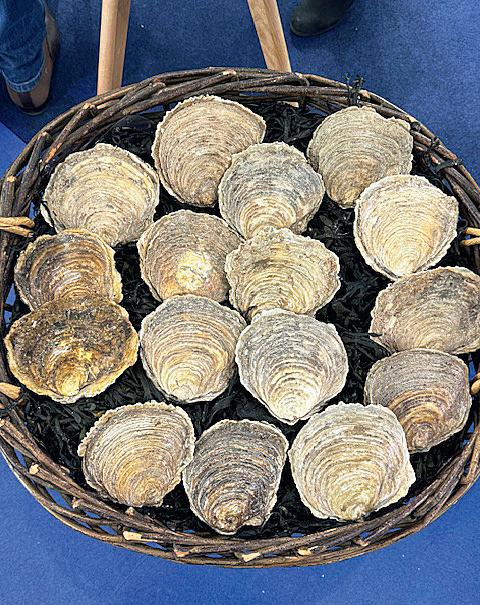


www.fishfarmermagazine.com
29
Gearing for growth

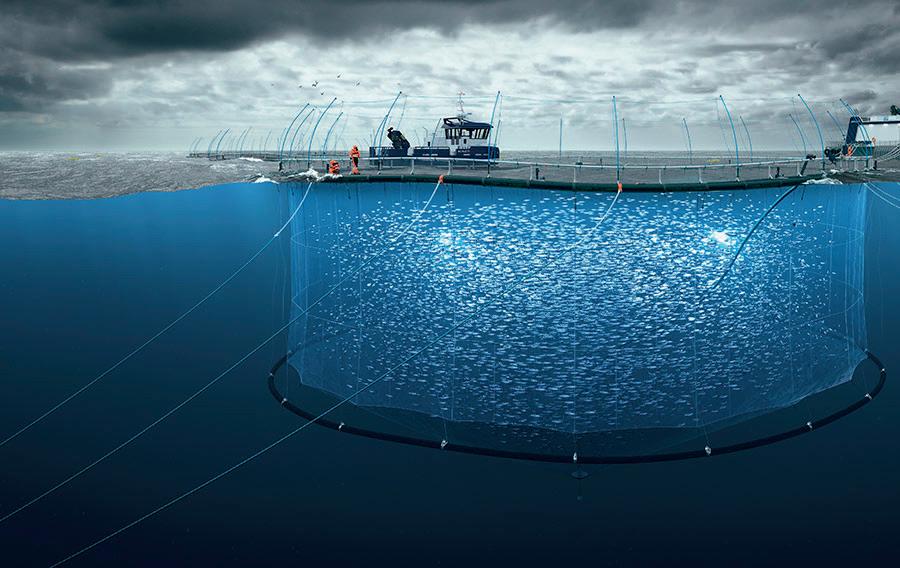





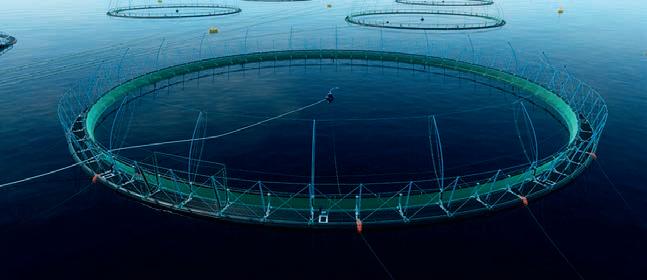
New Zealand has ambitions to grow its aquaculture –especially salmon, oysters and mussels. Greenshell mussels have become the source for world famous nutraceutical products and the salmon sector is beginning to branch out into the open ocean.
New Zealand is a country of only five million people, about the same as the population of Scotland, living on a land mass the size of the whole of the United Kingdom. Its aquaculture industry – mainly farming greenshell mussels, king salmon and Pacific
oysters – employs more than 3,000, people primarily in regional communities from Northland to Stewart Island.
Revenues are circa NZ $750m (£354m) per annum, but in 2019 the New Zealand Government set an ambitious goal to grow aquaculture into a NZ $3bn (£1.4bn) industry by 2035. Their plan is to create more value from existing species, including open ocean salmon farming, but also to farm new species, such as kingfish and seaweeds.
Salmon and glaciers
In the Southern Alps of New Zealand lies Aoraki/Mount Cook National Park, where a prototype for New Zealand’s first sustainable, land-based salmon farm is in development.
Mt Cook Alpine Salmon is a major producer of freshwater king salmon in New Zealand, exporting over 60% of its production to markets around the world. The company employs over 240 people across Christchurch, Timaru, Queenstown and Twizel – where it is the largest employer.
The company runs five salmon farms in glacier-fed hydrocanals that run through the MacKenzie and Waitaki districts. It owns two hatcheries (and has shares in a third), a large primary processing plant in Timaru, and a secondary processing plant in Christchurch. Its $16.7m (£7.9m) land-based salmon farm project, launched in Twizel in 2022, is backed by $6.7m (£3.2m) over six years from the Government’s Sustainable Food and Fibre Futures fund.
Mt Cook Alpine Salmon CEO, David Cole, said the plan is to create a sustainable 1,000 tonne hybrid structure that will use a part flow-through system to emulate the unique conditions of the glacial-fed canals. The facility is designed to optimise energy use through gravity-fed water and integrating renewable and lowenergy solutions.
“This differs from the recirculated water systems used by most overseas land-based farms,” he said. “The design will capture
NEW ZEALAND
www.fishfarmermagazine.com 30
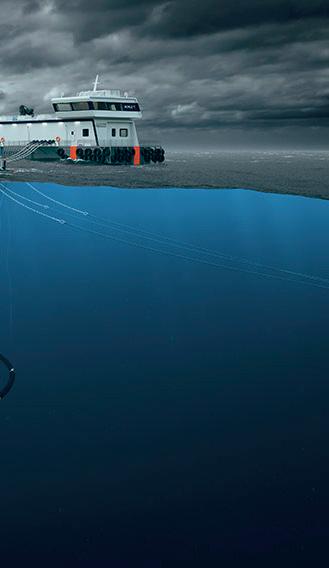
New Zealand’s aquaculture sector aims to grow fourfold by 2035. Sandy Neil finds out how
waste, control the flows better to suit the fish, and provide a stable, ideal growing environment. Being land-based, it has the opportunity to deliver greater automation and monitoring systems in an all-weather working environment.
“The nutrients from the salmon operation will be collected to support an aquaponics crop, taking a circular approach and generating value from a zero-value waste stream. This will link to a wetland area that would further purify the water.”
Going green
Other big ventures are afoot – for example, the Government’s aquaculture strategy aims to boost greenshell mussel earnings to NZ $1 billion per year (£472m).
“Greenshell mussels are unique to Aotearoa [the M ori-language name for New Zealand] – they are only farmed in our waters,” explains Aquaculture New

Zealand, a trade body representing marine farmers. “Aotearoa greenshell mussel powder is a nutraceutical product extracted from the indigenous bivalve mollusc Perna canaliculus
“This natural nutraceutical extract has numerous health benefits including supporting muscle recovery, reduction in inflammation and joint pain, cartilage protection, improved symptoms and functionality from diseases such as rheumatoid arthritis and osteoarthritis. Ongoing research continues to unearth new, exciting and novel benefits.
“Our greenshell mussels are sustainably farmed and a prized taonga [treasure] to M ori [indigenous people of Aotearoa]. M ori have long known the benefits of consuming our mussels (known as k tai or k k tai in te reo M ori), and now the world is learning about these superfoods and the powerful health benefits they can provide.”
In New Zealand’s 2023 general election last October, the centreright National Party defeated the incumbent Labour Party, and entered into a coalition with both the libertarian ACT New Zealand and populist New Zealand First parties. Within recent months, many announcements have been issued by the new Minister for Oceans and Fisheries, the Hon. Shane Jones. In April, the Coalition Government backed a mussel spat project to boost survival rates.
“This project seeks to increase the resilience of our mussels and significantly boost the sector’s productivity,” Jones said.
“The project - enabling cost-effective nursery feeding and culture for New Zealand’s greenshell mussel aquaculture industry - will develop an innovative nursery culture system that will foster spat through their most vulnerable stage.
“The industry largely relies on wild-caught spat, which has extremely low survival rates. Less than 5% of wild-caught spat survives after being transferred to mussel farms, forgoing millions in lost production each year. This project aims to grow spat to a robust size before they are transferred.
“Significant areas of consented mussel farming space are vacant, in part due to the spat supply issue. This project will address those spat supply issues which are severely restricting the productivity and growth of the industry in New Zealand.”
The Coalition Government is co-investing NZ $410,000 (£194,000) over three years in the NZ $1.04m (£490,000) project, which “has the potential to lift the sales revenue of our mussels by tens of millions of dollars per year,” the minister added.
Looking offshore
The further expansion of salmon farms in inshore areas is unlikely in New Zealand. Open ocean aquaculture – the farming of salmon in enclosed fish pens, anchored in place to the seabed, in exposed




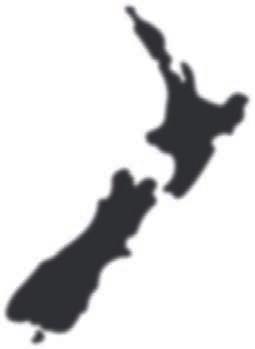
This is when it starts to get exciting from a farming point of view
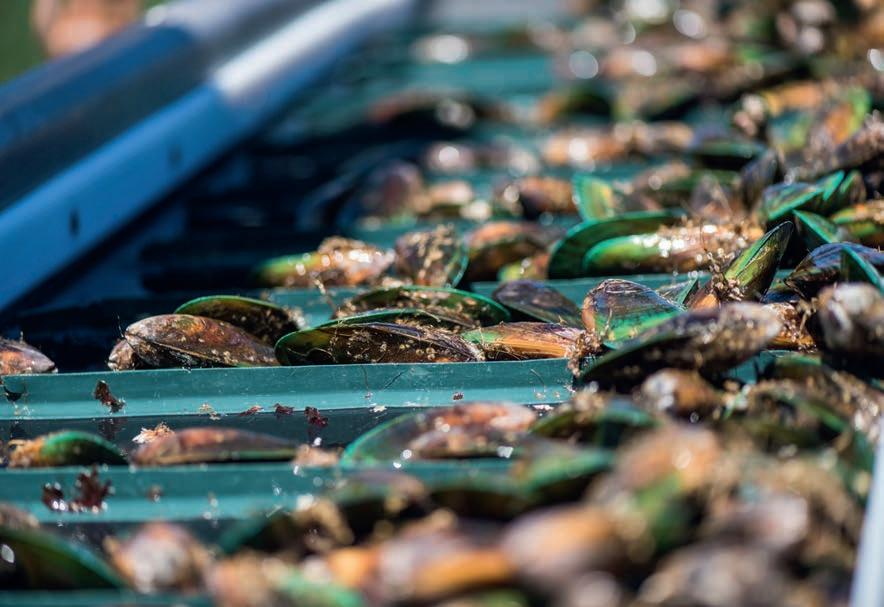




 Opposite: New Zealand king salmon farms
Opposite: New Zealand king salmon farms
www.fishfarmermagazine.com ” 31
Below: Greenshell mussels


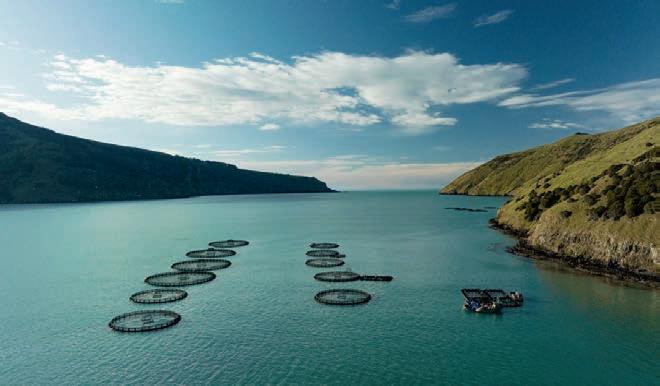



marine environments – is therefore recognised as being critical for the future sustainable growth of the salmon sector. In March, the Coalition Government gave final approval for the country’s first open ocean salmon farm. It marked the end of a near five-year consent process for the project, known as Blue Endeavour.
The firm behind it, the New Zealand King Salmon Company (NZKS), has farmed salmon for more than 35 years in the Marlborough Sounds, and with nursery, hatchery and processing land-based operations in Nelson, T kaka and Canterbury.
“Representing less than 1% of global salmon production, the king salmon species usually sells for significantly more than the price of Atlantic salmon. Atlantic salmon is the predominant salmonoid species sold globally,” it says. “Blue Endeavour will be New Zealand’s first open ocean aquaculture farm. It will also be the world’s first farm of its type for the valuable king salmon (Chinook) fish species.
“The farm will be located 7km off Cape Lambert in the Cook strait. It will comprise two blocks of ten circular pens; the total farm will be less than 12 surface hectares in size. When fully operational, Blue Endeavour will have the capacity to produce 10,000 metric tonnes of Chinook salmon [and] could generate NZD $300m (£142m) in new revenue per annum.”
Grant Lovell, NZKS General Manager of Aquaculture, called the open ocean as “an exciting opportunity and the next logical step for New Zealand’s aquaculture industry”.
“When we look to the open ocean we are looking at the future for salmon farming in New Zealand – in cooler, deeper waters,” he said. “It is a bit of a new frontier for our aquaculture industry – but one that we are entering one step at a time, backed by science and
evidence-based decision-making.
“Putting fish pens out in the open ocean is not for the faint-hearted. We will be working in a dynamic environment, with waves up to 10 metres high – anyone that has caught the Cook Strait ferry knows what we are talking about. We will be trialling technologies and investing in mooring grid infrastructure to ensure we are able to adapt to the Cook Strait conditions.”
Carl Carrington, NZKS Chief Executive Officer, described the next steps as “needing to walk before we can run”.
He says: “From here, we will complete our 18-month programme of rigorous benthic (seabed), seabird and marine mammal monitoring. This will provide a baseline of information, against which we can measure the impacts of a working salmon farm.
“The next step will be a ‘proof-of-concept’ phase, putting in the trial pens from June 2025. This is when it starts to get exciting from a farming point of view – building a smaller-scale pilot farm so that we can trial new infrastructure while monitoring the welfare of our salmon, to ensure they can thrive.
“Aquaculture is a business that rewards patience and caution. We will dip our toes into the open ocean, to carefully realise Blue Endeavour’s potential, while continuing to talk to local communities, Iwi [M ori tribes and nations] and others who also have key interests, rights and values around the ocean.”
The approval of the project producing “kaimoana” (seafood) is “a win for the economy”, the Oceans and Fisheries Minister Shane Jones added. “It’s going to provide more jobs for the Marlborough region and benefit our economy by providing sustainable kaimoana to the world.
“While this is a huge step that will contribute to the government’s goal to grow
”
The aquaculture industry is up to the challenge of climate change
NEW ZEALAND
www.fishfarmermagazine.com 32
This page from the top: Snapper; Akaroa salmon farm Opposite from top: New Zealand aquaculture; Mt Cook Alpine Salmon farm
aquaculture to a multibillion-dollar industry, it’s taken far too long to get to this point.
“The Coalition Government is committed to removing unnecessary barriers to make approval processes for projects such as this quicker and easier and, in doing so, a lot cheaper.
“There are currently too many hurdles causing delays for aquaculture projects, and these delays hurt our economy and the communities that rely on aquaculture.
“New Zealand’s seafood is sought after globally. I’ve long been a proponent of the expansion of our aquaculture industry and I look forward to seeing it contribute to our export-led recovery.”
Progress towards growing aquaculture into a NZ $3bn industry has been “constrained by an expensive, lengthy, and uncertain consenting processes for new farming activities”, argued Aquaculture New Zealand last December. “Uncertainty in time and cost is a barrier for investment and innovation.
“Recognising the importance of investment certainty, the Government has committed to delivering marine farming permits of longer duration. This move will provide aquaculture investors with the necessary confidence to make long-term plans and investments in the sector. Additionally, the Government’s commitment to limiting regulatory barriers will enable the aquaculture sector to reach its production potential.”
Recently the Coalition Government revealed its plans to unlock growth through planning reform. In a speech to the New Zealand Planning Institute in March, Chris Bishop, minister responsible for reforming the Resource Management Act (RMA), began arguing that planning reform in New Zealand is necessary, not just for economic growth but also to achieve the country’s aims with regard to investing in renewable energy.
He said: “So that means we need more roads, more farms, more congestion-busting public transport projects, more aquaculture, more mines, more housing, more transmission lines, more electrification, and so on. We are a pro-development and a progrowth government and we were elected on that mandate.
“That brings me to the RMA (Resource Management Act). There are two broad objectives to our work programme. First, making it easier to get things done by unlocking development capacity for housing and business growth, enabling delivery of high-quality infrastructure for the future, including doubling renewable energy, and enabling primary sector growth and development (including aquaculture, forestry, pastoral, horticulture, and mining).
“The second objective is to safeguard the environment and human health, adapt to the effects of climate change, improve regulatory quality in the resource management system, and uphold Treaty of Waitangi settlements and other related arrangements.”
One part of the coalition’s overhaul of the RMA is the Fast-track Approvals Bill, which it says will cut red tape and give priority for regionally and nationally significant infrastructure and development projects.
M ori aquaculture pioneer Harry Mikaere said the Bill will boost the M ori aquaculture industry. Mr Mikaere, from Pare Hauraki, said that while Iwi have aquaculture space allocated, the current system




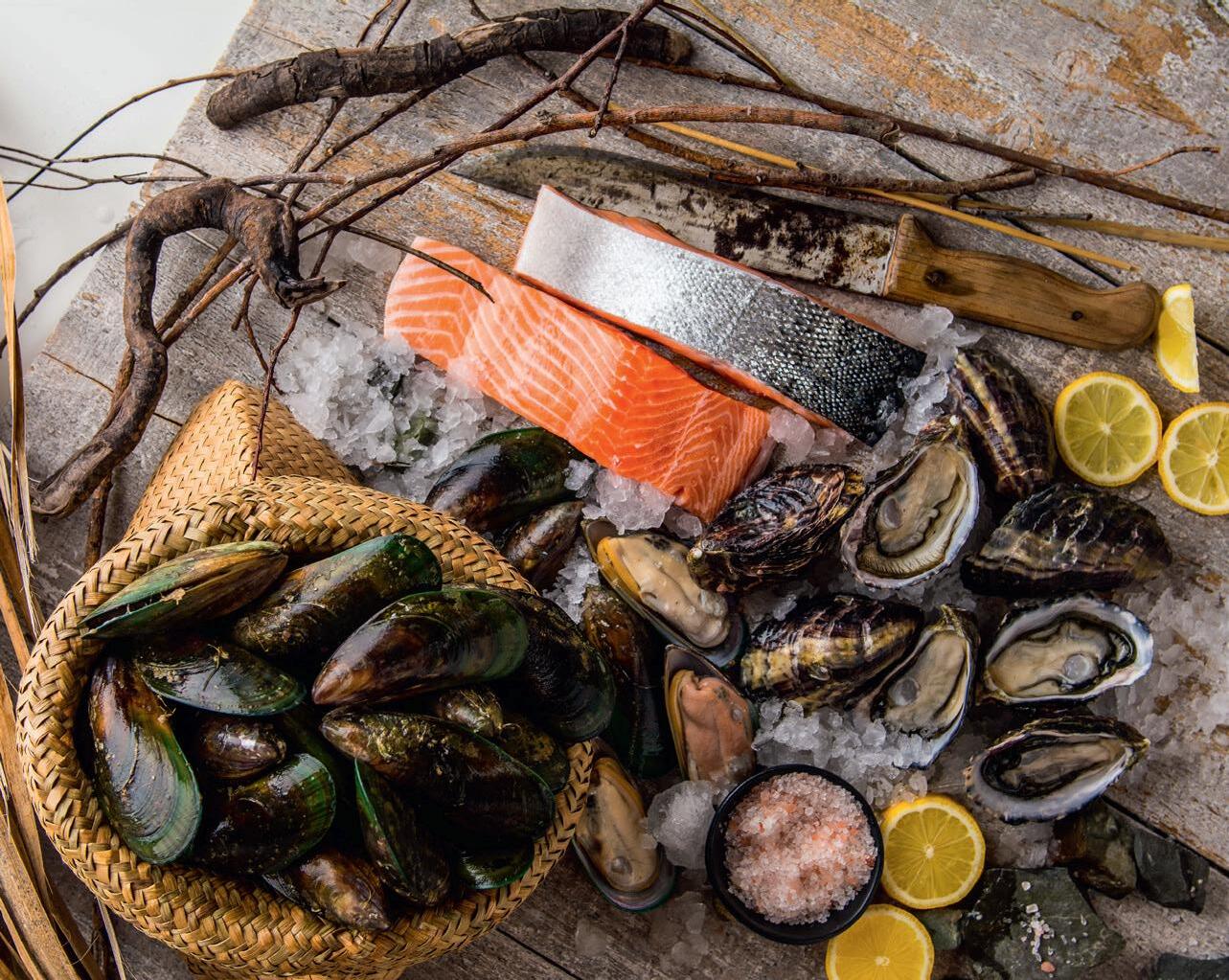


for starting a fish or shellfish farm is slow, inefficient and expensive.
“The industrialisation of this country needs to get to the point where it’s not taking us 10 years to get down the track to a consent process,” he told Auckland’s M ori radio station, Radio Waatea.
Make it snappy
Currently, only one species of finfish is farmed at scale in New Zealand – the king salmon. Breeding native species of fish, such as snapper and trevally, could diversify existing markets and create a new sector for the export market, supporting future growth of the aquaculture sector.
A new project to breed “super” snapper that are more resistant to disease, grow faster, and can thrive in warmer water could help drive more economic growth through aquaculture, the New Zealand Government says.
“Climate change is affecting the condition of our oceans and this project is a practical response by a key industry to that change,” said the Fisheries Minister, Shane Jones, in March. “In the wild, snapper can take many years to grow to catch size. The ability to grow them faster, getting them from farm to plate in a shorter time, could open up a new export market and reduce pressure on wild snapper stock.”
An exemption has been granted to Plant and Food Research (PFR), a crown research institute, that allows it to take the research to the next stage. Under the Fisheries Act, fish caught for research purposes are not able to be used in aquaculture. This exemption means PFR can move its brood snapper stock to a pilot-scale aquaculture farm being developed in Marlborough.
The original parents for the research were wild caught, and those with good aquaculture traits – such as fast growth and calm temperaments – were selected as breeding stock. Over the past eight years, scientists have bred four generations from this original stock, using only natural breeding processes.
“Being able to take our research into the real world is an important step for the commercialisation of science,” said Helen Palmer, General Manager of Science Seafood Technologies at the Plant & Food Research. “By taking the results of our snapper breeding programme to a pilot scale, we can determine whether the traits we have selected for are suitable for farming and whether snapper has the potential to be a viable commercial species for our aquaculture sector.”
Shane Jones described the snapper project and Blue Endeavour as “a win for all New Zealanders”. He added: “The aquaculture industry is up to the challenge of climate change, and keen to grow an aquaculture sector for the future.”

www.fishfarmermagazine.com 33








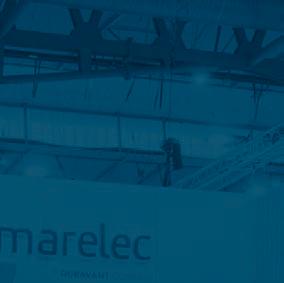





Bigger than ever



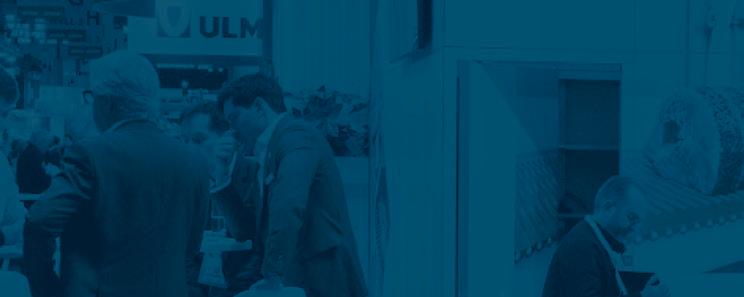




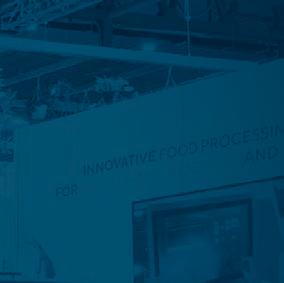

With an extra hall and more than 2,000 organisations represented, the annual seafood trade show at Barcelona remains the industry’s leader







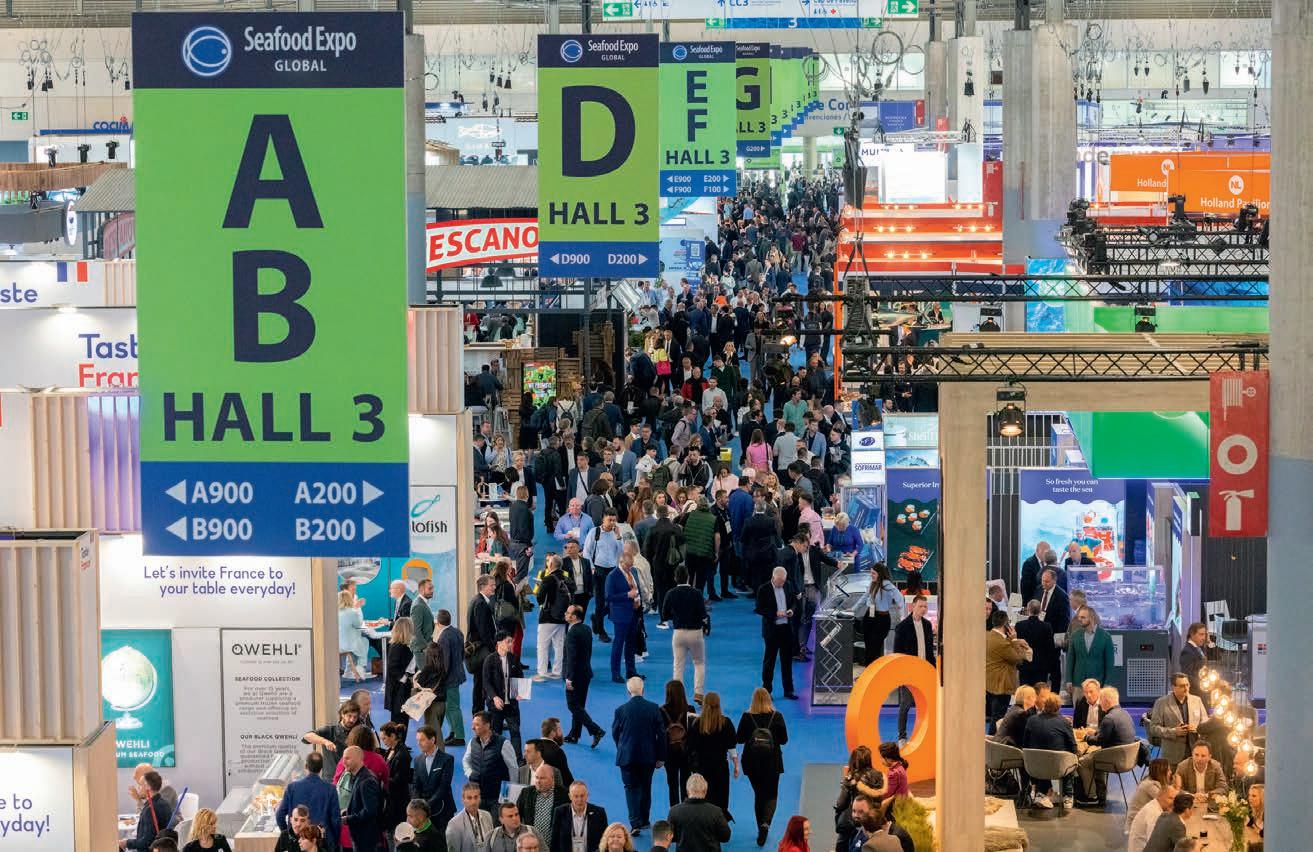


The 2024 edition of Seafood Expo Global/Seafood Processing Global has broken records, with more than 35,000 professionals from the seafood sector attending.
SEG/SPG, held once again in Barcelona, is the world’s biggest trade show in its sector and this year’s event, which took place over 23-25 April, was the largest in its history. As well as record attendance, the 30th show in the series saw 2,244 exhibiting companies from 87 countries around the world.
This time the event took up even more of Barcelona’s Fira Gran Vía venue, with exhibitors occupying Hall 1 for the first time – the extra space was also used to offer a wine bar and food sampling for visitors.
With the expansion, this year’s edition occupied Halls 1, 2, 3, 4, 5 and the Gallery (between pavilions 4 and 5). The economic impact for the city is estimated at more than 156m (£133m).
“The industry relies on this event to achieve its annual business objectives in the global market. Exhibitors and visitors alike use this platform as a place to meet current customers, find new ones, form new relationships and expand their knowledge of the industry,” said Wynter Courmont, Vice President of Seafood at Diversified Communications USA. “It’s been exciting to feel the buzz in the exhibition halls.”
As ever the expo included a packed conference programme with




90 international exports sharing their insights.
Mark Blyth, The William R. Rhodes ’57 Professor of International Economics, The Watson Institute for International and Public Affairs at Brown University, delivered this year’s keynote address “The Outlook for 2025 and Beyond: American Tariffs, European Stagnation, and Asian Resilience,” outlining how international factors and trends could impact the seafood sector
Another headline session, this time on the implications of artificial intelligence, brought together Larsen Mettler, Managing Director, S2G Ventures; Rui Gomes, CEO of Longline Environment; Kira Smiley, Senior Program Manager – Business Development, Tidal @ Alphabet’s X, The Moonshot Factory; Rajamanohar Somasundaram, CEO of Aquaconnect; and Mathew Zimola, CEO of ReelData AI.
Other sessions focused on topics such as sustainability and climate resilience, seafood finance, traceability, packaging and the future of fish consumption.
The Aquaculture Stewardship Council declared this year’s Seafood Expo “a huge success”.
ASC’s panel event, which focused on the importance of responsibly produced aquafeed, drew a crowd of 120 to hear from the experts, including Skretting’s Global Sustainability Manager, Jorge Diaz, Thai Union’s Chief Sustainability Officer, Adam Brennan and New England Seafood’s Head of Sustainability, Ruth Hoban.

SEAFOOD EXPO GLOBAL 2024 www.fishfarmermagazine.com 34
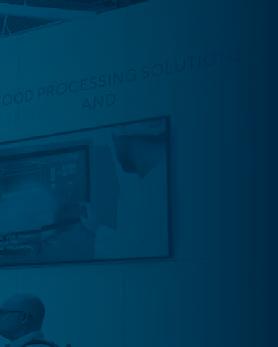

With the theme “Feed Responsibly: Why Responsible Aquaculture Needs Responsible Feed”, key industry players shared how they are adopting the ASC Feed Standard to drive transparency, and social and environmental improvements in feed supply chains.
ASC certified farms have until October 2025 to switch to sourcing compliant feed produced under the ASC Feed Standard. Feed mills that get certified in 2024 will not have to pay licence fees on the volume of compliant feed they produce this calendar year.
Doing deals

The world’s biggest seafood trade show is a natural venue for doing and announcing deals, and this year was no exception.
Five major trade organisations representing European aquaculture, fishing and seafood processing chose the event to unveil a new strategic alliance.
The groups are the European Fish Processors and Traders Association (AIPCECEP, combining two organisations), the European Association of Fish Producer Organisations (EAPO), EU fishing trade group Europeche, and the Federation of European Aquaculture Producers (FEAP).
Their aim is to get Europeans to eat – and produce – more fish. In an announcement at SEG/SPG, they said the alliance is aimed at advancing shared goals and promoting critical industry priorities on a broader stage.
In another announcement we learned that the seafood processing equipment and system for Grieg’s new plant at Gardermoen Airport, near Oslo, will be BAADER. The deal includes design and provision of the entire production line. The new plant is due to be completed in the summer of 2025.
For Scottish fish farmers, the show saw the announcement that France’s prestigious



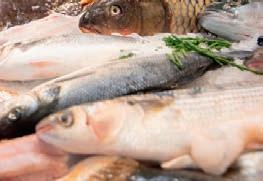




quality market was changing its rules for Atlantic salmon. The changes include permitting the export of larger fish, between six and eight kilos, and allowing a proportion of non-marine ingredients, including insects and algal oils, in feed.
Mairi Gougeon, Scotland’s Minister for Rural Affairs, Land Reform and Islands, was there for the announcement and praised the contribution made to the national economy by Scotland’s aquaculture sector. She also pledged that moves to reform regulation of the industry were still on track.

It was a fantastic opportunity to promote our excellent Scottish salmon
Independent producer Loch Duart also revealed the improved results achieved after switching to BioMar’s Blue Impact feed (see UK News, this issue, for more details of both these announcements).
Gareth Jenkins, Senior Sales Manager at Mowi Scotland, said



 Opposite: he e hi i on halls at ran ia
Opposite: he e hi i on halls at ran ia
www.fishfarmermagazine.com 35
This page from top: The Scottish avilion chef at the Scottish avilion fish isplay from the sho sy sho entrance
”














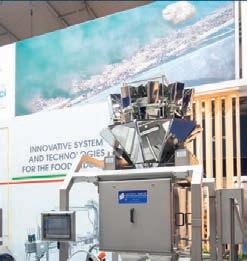




after the show: “Our sales team from Mowi Scotland attended a very successful Seafood Expo in Barcelona, meeting customers and colleagues – some of whom had travelled from all over the world. It was another very busy show for the team. Again, it was a fantastic opportunity to promote our excellent Scottish salmon, as well as gain further understanding and insight from customers and create new connections.”
Seafood Scotland hosted a Scottish Pavilion with 18 fish and shellfish businesses represented. This year the Pavilion also offered a seafood restaurant and bar with a tapas-themed range of Scottish seafood dishes, including tandoori monkfish, haggis croquette and hake risotto.
Marie-Anne Omnes, Head of Trade Marketing, Europe, with Seafood Scotland, said: “The Scottish Pavilion was very popular – maybe next year we might have a bigger stand! The demand is there.”
She added that feedback at the show suggested that sustainability is still very important, especially for European buyers.
Omnes said: “Also, people are increasingly interested in what was previously called ‘waste’ – looking to add value to by-products that would previously just have gone into fertiliser and animal feed.”
Excellence recognised Oysters and seaweed products took the top accolades at the Seafood Excellence Global Awards, held on the first night of the show.
The award for Best Retail Product was presented to Parcs Saint Kerber for its entry, Oysters Trio Saint Kerber, while Algolesko won the grand prize for Best HORECA (hotel/restaurant/catering) Product for its Wakame Pickles.
The competition recognizes the best products exhibited at



Seafood Expo Global, the world’s biggest seafood trade event.

In addition to the grand prizes, the judges also gave four special awards.
Phillips Foods, Inc. of the United States was awarded the Seafood Excellence Global special prize for Convenience for its Signature Lobster Cakes.
Multi X S. A. of Chile was presented the Seafood Excellence Global special award for Retail Packaging for its Latitude 45 Smoked Salmon Candy Bites.
The Seafood Excellence Global award for Innovation was given to Lucky Bag from Vinh Hoan Corporation of Vietnam.
The SalmonChef® line of hot smoked salmon with international flavours from Vega Salmon A/S of Denmark won the Seafood Excellence Global award for Best Seafood Product Line.
A total of 85 entries vied for the coveted awards, with eight entries from the HORECA sector and 32 from retail. After rigorous evaluation, 40 finalists emerged, representing a diverse array of products from 15 countries worldwide.
The next edition of Seafood Expo Global/ Seafood Processing Global will take place in Barcelona from May 6-8, 2025.
• See also Shellfish, page 28, for Nicki Holmyard’s report.




















SEAFOOD EXPO GLOBAL 2024
www.fishfarmermagazine.com 36
Clockwise from top left: Seafood Excellence Global Awards winners; Prizewinners Algolesko; Parcs Saint Kerber; and The SalmonChef; a mouthwatering display of seafood; Seafood Processing Global stands


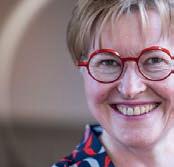



Eyes on the target




Technology and innovation are key for the sector’s future, but we must not lose sight of the ‘why’, as Heather Jones explains
SCOTLAND is a nation of innovators, inventors and entrepreneurs. We have a thriving start-up scene and new ideas are brought to various sectors almost daily as a result of support from a range of organisations, including business support agencies, funding vehicles and innovation centres.
It is seen as a great place to do business and start new ventures, and has a pool of successful innovative start-ups to prove it. A report from YFM Equity Partners, published earlier this year, found that Scotland’s business survival rates were the third highest of all UK nations and regions analysed, with more than two-fifths (41%) of firms still actively trading five years after launching.
Particularly in the aquaculture sector, other countries are beginning to see Scotland as an example of innovation best practice. Programmes such as the Blue Bridge initiative – aimed at Chilean companies looking to expand their operations and bring groundbreaking innovations to the UK – are a fantastic opportunity to transfer knowledge and technology breakthroughs. Trade events including the Seafood Expo Global, Aquaculture UK and Aqua Nor also offer a valuable international stage on which to showcase Scotland’s success.
Since it was formed 10 years ago, SAIC has been at the centre of several key developments, contributing to over 100 different innovation projects, all focused on supporting the sustainable growth of Scotland’s important aquaculture sector. The research it has supported now totals over £70m in overall value and our membership consortium includes over 360 different organisations. We have facilitated collaboration between sector experts and academics – with a particular focus on fish health, and understanding and mitigating environmental impacts – all helping to solve critical challenges and take ideas one stage closer to commercialisation.
Among the ideas supported by SAIC are several examples of technologies, initially developed to support Scottish seafood production, now making waves internationally with the potential to impact other branches of the blue economy, agriculture, life sciences and environmental monitoring. These include the work of OTAQ, with its Live Plankton Analysis System (LPAS), Tritonia Scientific’s 3-D seabed modelling, and many more.
The use of technology across all aspects of aquaculture is fast becoming the norm. However, as the speed of adoption only increases, we cannot afford to lose sight of why we are doing this. Innovation is not an end in itself, nor is technology development.


The ultimate focus must be on rearing fish sustainably. So, how do we best do this? By combining biology and technology, rolling out best practices in farming, optimising fish health and welfare, and reducing the impacts of disease threats.
Tied to this, we have a renewed focus for SAIC, homing in on fish health R&D, that is aligned to the Scottish Government’s 10year Farmed Fish Health Framework. The goal is to build on the innovation achieved over the past decade and sharpen our focus on driving positive health and welfare outcomes for farmed fish.
Technology can offer solutions to biological and environmental challenges faced by the fish themselves and those who farm them. It can be an enabler for increasing capacity, by providing insights that unlock improved ways of farming. However, the needs of our livestock and other marine life must be at the heart of R&D projects designed to work with the grain of fish biology.
All successful R&D adoption requires patience, persistence and practical application. It takes time, especially when the biology and growth cycle of live animals is involved. There are many exciting opportunities to use technology, from robotics to data analytics, to improve the sustainable farming of finfish. SAIC hopes to continue supporting the Scottish industry with applied R&D that complements and enhances our understanding of fish biology and the natural marine ecosystem. Ultimately, we need to understand how technology and biology work together if we are to improve fish health and welfare.
Heather Jones is CEO of the Sustainable Aquaculture Innovation Centre (SAIC)

Innovation is not an end in itself
www.fishfarmermagazine.com 37 COMMENT
”








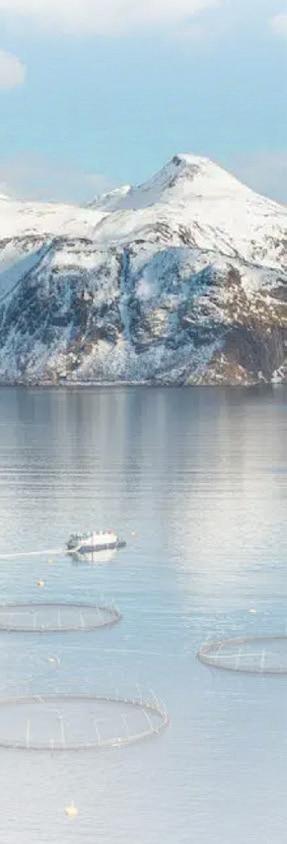






Passing the test

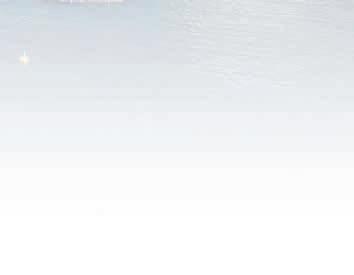






It’s been a challenging year for the world’s second biggest salmon farmer but, the CEO says, it has come through with flying colours. Vince McDonagh reports

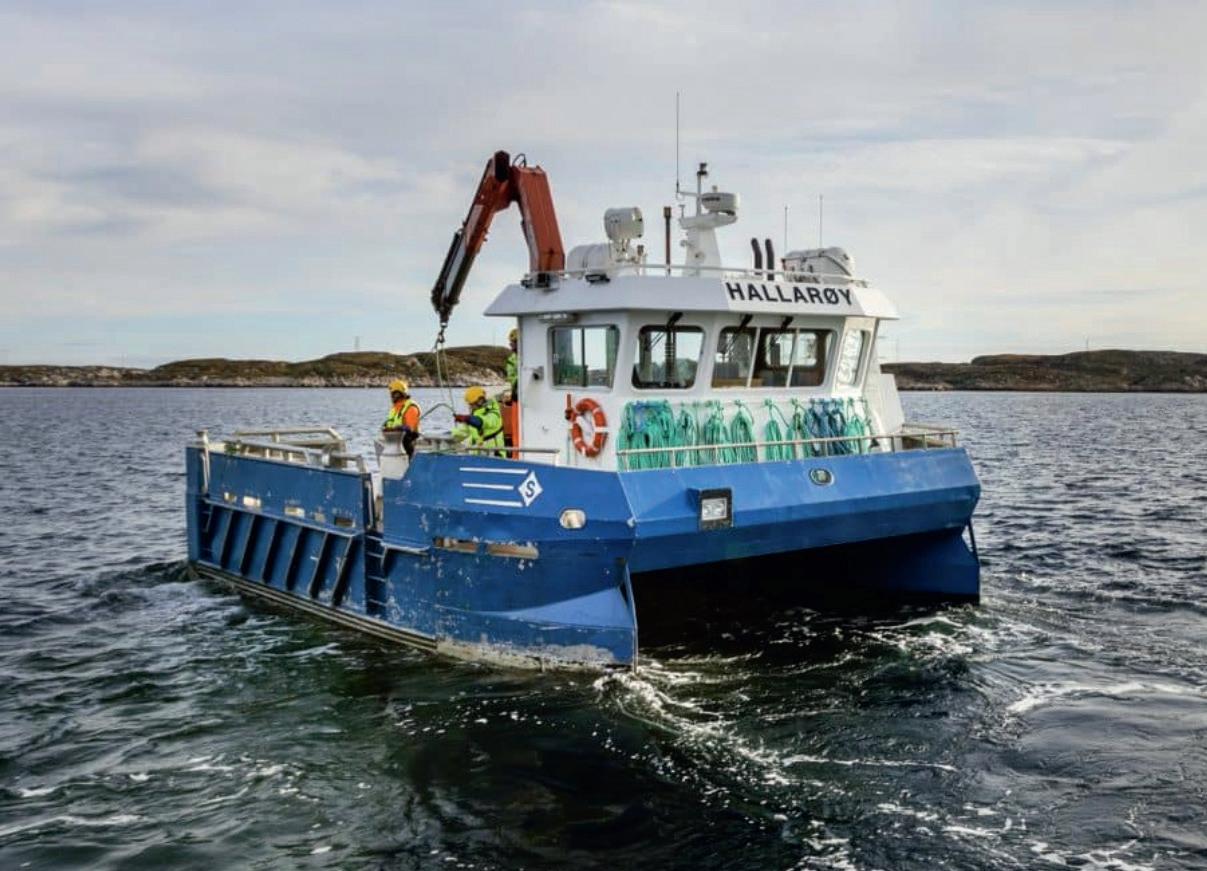
SALMAR is not just one of the world’s largest Atlantic salmon farming companies – it is also arguably the most interesting.
In little more than 30 years, it has grown from a small coastal operation on the island of Frøya in central Norway to become a global giant, second only to Mowi. Pundits are predicting it could overtake Mowi within a decade.
That’s for the future. It is the present that matters now, and 2023 has probably been the group’s most challenging year to date, not only because of jellyfish and other issues, but because of the challenge of sorting out the various NTS group businesses it acquired some months earlier.
They included proud and influential names such as Norway Royal Salmon and SalmoNor. Integrating them into SalMar’s corporate culture was not going to be easy.
SalMar believes that, thanks to what its annual report calls the tireless efforts of its staff, it has passed that test.


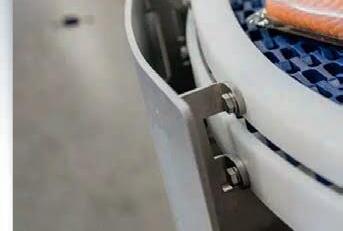


now bode well for the future.
“But we cannot rest content with previous successes,” he said. “The aquaculture industry must address the challenges facing it and pursue improvements in all areas –especially with respect to the environment and fish welfare.
“At the same time, we can be proud that Norwegian aquaculture scores highly in terms of sustainability compared to other food producers worldwide.”

Chief Executive Frode Arntsen said in the company annual report that, even more important than cost synergies, are the additional value creation and increased competitiveness already achieved which
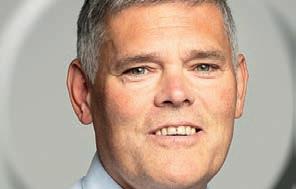
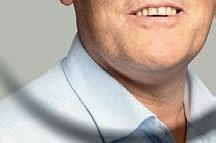

Had it not been for the “pearl norman” jellyfish (also known as “string jellyfish”) scourge, which also affected Scottish and other Norwegian producers, SalMar would have enjoyed a better 2023.
Group turnover was NOK 28.2bn (£2bn) against NOK 20bn (£1.5bn) a year earlier. The operating profit came close



”
We cannot rest content with previous successes






www.fishfarmermagazine.com 38 SALMAR
top: Sal ar fillets Sal ar or oat ish processing ro e rntsen Opposite:
processing
This page from the
SalMar
plant

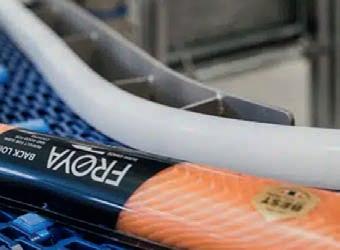
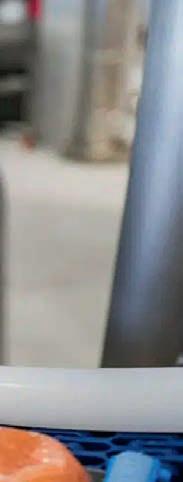

“Our ambition is for this knowledge centre to become a valuable contribution to sustainable growth in the aquaculture industry. It is with great pleasure that SalMar launches this initiative in partnership with Cargill, one of the world’s leading food producers and a global spearhead in the research, development and production of nutritious fish feed and feed ingredients.”
Looking ahead, the SalMar chief said geopolitical challenges presented one of the main uncertainties.
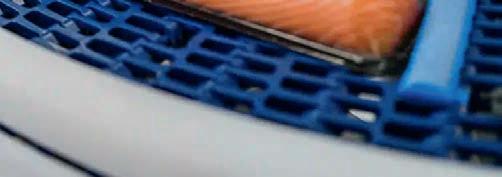


to doubling at NOK 8.5bn (£625m).
It also had the honour of being named one of the world’s most sustainable protein producers by FAIRR in 2023.





But the CEO said he must acknowledge that some aspects are also moving in the wrong direction.
“Wars both inside and outside Europe are continuing to leave their brutal mark on everyday life around the world.
“The solutions to these challenges will lie with the governments of the states concerned and the international community.

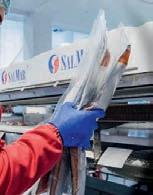
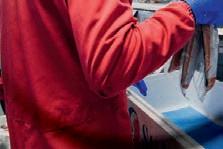
Arntsen said: “Fish mortality is increasing. Fish welfare is more challenging. It is our responsibility to change that. We must realise that there are simply too many gaps in our knowledge. We need to know more about the salmon which is the most important part of our value chain.”
Yet despite the jellyfish problem, SalMar also had significantly lower salmon mortality in 2023 than the industry average.
The CEO went on: “But still, we must adhere to SalMar’s important rule that everything we do today must be done better than yesterday.”
The company says jellyfish are one of several risk factors in fish farming, but they rarely cause significant damage to the fish, as was the case in this instance.
Fortunately, it has contingency plans that account for such events, and the company has, in collaboration with the Norwegian Food Safety Authority, taken measures based on fish health assessments.
The consequence of the jellyfish attack was a significant outtake of fish, reducing SalMar’s estimated volume harvested in Norway in 2024 by 20,000 tonnes, to a total of 237,000 tonnes.
Meanwhile, SalMar is placing great hopes on its Salmon Living Laboratory project with Cargill which it believes will become a major centre for innovation, research and development.
“Our ambition is for this knowledge centre to become a valuable contribution to sustainable growth in the aquaculture industry, “ said Arntsen.

“Let us hope that the peace ambitions that laid the foundations for the UN eventually gain the upper hand.
“The Norwegian aquaculture industry also has a role as a bridge-builder between people and nations.
“This takes place through constructive cooperation with companies and customers worldwide and the industry’s contribution to a sustainable global food supply.”
Scottish Sea Farms may be turning the corner
SCOTTISH Sea Farms, the UK joint venture in which SalMar owns a half share with Lerøy, looks to be emerging from the biological problems that have beset the business over the past year.
Even CEO Arntsen spoke of significant biological challenges at SSF in his annual report.
It generated revenues of NOK 2.56bn (£188m) last year against NOK 3.18 billion (£234m) in 2022 due to lower volumes harvested and it continued to make a loss.
Biological challenges, particularly those linked to gill health, have had a negative impact on the results last year.
It has led to harvesting of fish with a lower average weight, which has affected both cost and price achieved, and lower harvest volume than anticipated going into 2023. The company harvested a total of 24,900 tonnes in 2023, down from 35,900 tonnes in 2022.
But SalMar says that going into 2024 conditions have improved, and it sees a better biological situation for those generations to be harvested over the next seven months.
Offshore plans remain on hold
SALMAR’S most exciting development is the offshore project being developed in partnership with the technology giant Aker ASA. It has the potential to transform the fish farming scene.
This subsidiary already has offshore installations in operation. Ocean Farm 1, the world’s first offshore unit for salmon production, is now in its third production cycle off the coast of Trøndelag, after extensive upgrading.
In addition, SalMar Aker Ocean took over Arctic Offshore Farming outside Tromsø in late 2023. The company and the project originally belonged to NRS but were sold on to SalMar Aker Ocean after the merger with SalMar.
But it is not all plain sailing. The report says there is still considerable uncertainty about the framework conditions for aquaculture in the open ocean, both with respect to areas suitable for farming, permits and the future tax regime.
The new resource rent tax will not currently apply to offshore aquaculture. Still, the industry and investors must take into consideration that it could happen if this category of aquaculture also becomes profitable.
This means that the industry must take unlimited risk in the buildup phase, while the state could introduce additional tax later if this becomes profitable.
SalMar Aker Ocean has now decided that further investment in offshore aquaculture will be put on hold until the Norwegian authorities have clarified the framework conditions.

www.fishfarmermagazine.com 39
Above: Ocean Farm
Warmer waters
Our round-up this month covers thermal stress, a mystery parasite and why your sunscreen might be bad for marine life
Climate change is making our seas warmer. This much is known, but what specific impact does temperature have on fish health?
That was the question a team of researchers at Canada’s Dalhousie University set out to answer, in relation to farmed Atlantic salmon.
Their study involved salmon at a commercial farm site in Nova Scotia. Two types of biologgers were surgically implanted in the fish to explore the effects of the thermal response of Atlantic salmon during a standard production cycle.
The aim was to measure the effective of temperature ranges on fish metabolism – specifically on “aerobic scope” which is defined as the difference between “standard metabolic rate” (the required energy to sustain base level body functions, at rest) and “maximum metabolic rate” referring to the capacity of fish to perform activity above base levels.
The temperature at which aerobic scope
falls to zero is referred to as the “critical temperature” – the point at which the fish’s body starts to make trade-offs between vital functions such as activity, digestion and growth.
In Nova Scotia, farmed fish experience seasonal extremes of temperature, both warm and cold. The biologger tags revealed that these have an effect on heart rate as well as on fish behaviour. The data suggests that the optimum temperature for the salmon was 12.7°C. Thermal stress was apparent both at high temperatures of 19°C and above, and at very low temperatures, below 2°C.
The study notes: “Physiologically, salmon can tolerate these temperature extremes, but energetic trade-offs emerge, causing changes in swimming activity, a reduction in appetite, increased metabolic rates and the synthesis of heat shock proteins.”
It concludes: “The results from this study are a good baseline for how commercial fish respond to the thermally challenging conditions prevalent in this region.
“Future work should consider longterm monitoring of salmon throughout the entire grow-out… biologgers offer a unique ability to monitor fish physiology and behaviour of free-swimming fish as they experience challenging environmental conditions and farm operations.”
Influence of temperature on the behaviour and physiology of Atlantic salmon (Salmo salar) on a commercial farm (J. Korus, R. Filgueira and J. Grant) Aquaculture, August 2024.
Nanoparticle threat
Nanoparticles are increasingly being used for a variety of applications, and particles based on zinc oxide (ZnO-NPs) are among the three most commonly produced kinds. As one of the uses of ZnO-NPs is as an effective sunscreen, as well as in environmental remediation and as a medicine, it’s not surprising that some ends up being washed into the sea. A new study suggests, however, that this could



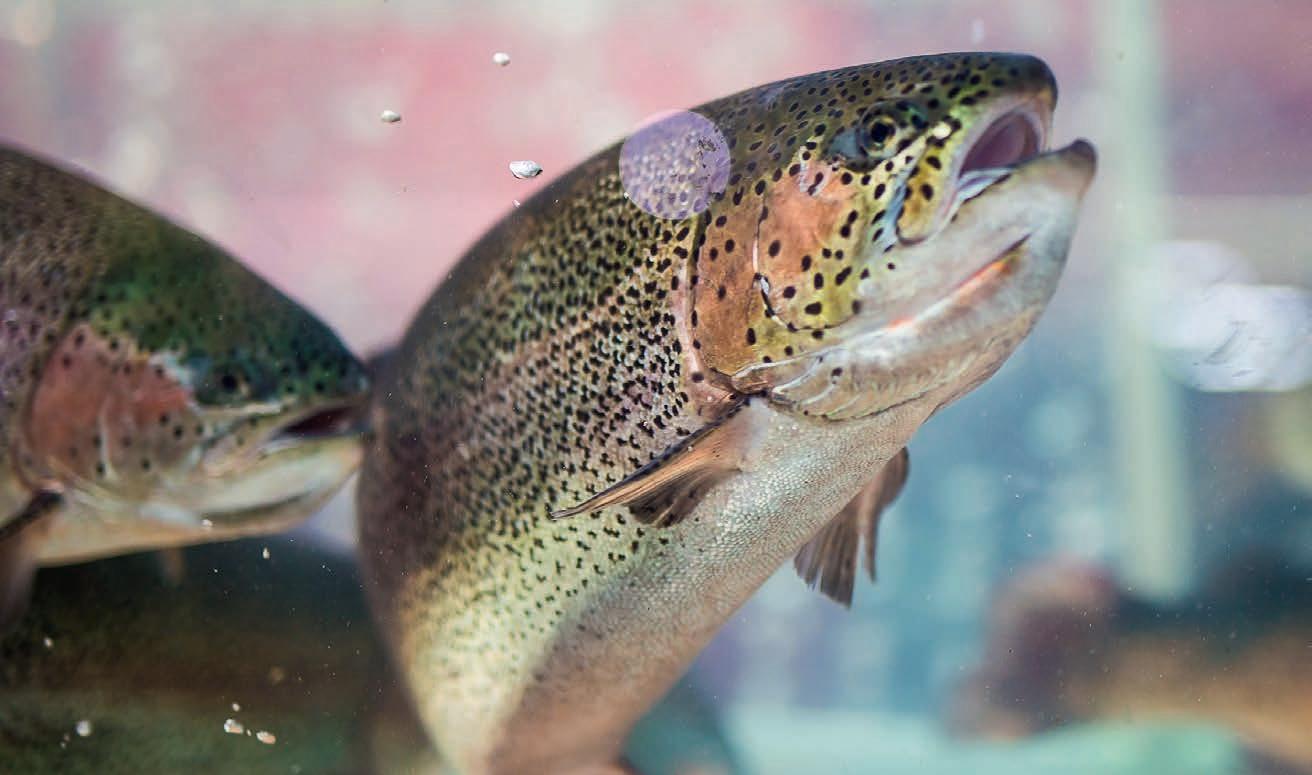
www.fishfarmermagazine.com 40 FISH HEALTH AND WELFARE
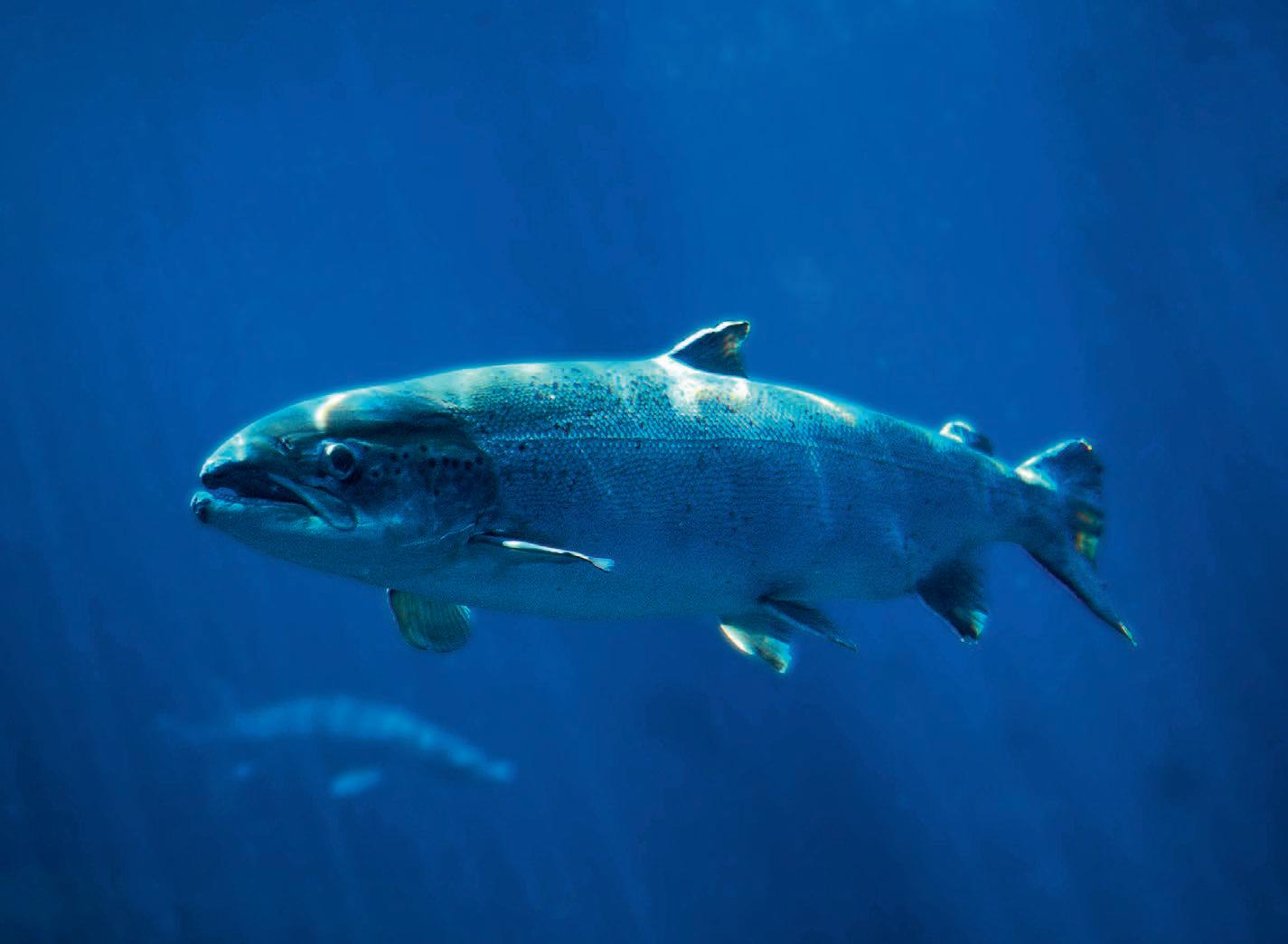


have an adverse effect on marine life.

The review of existing research was carried out jointly by academics at the University of Burdwan, West Bengal, India, and the University of Messina, Italy. They investigated what is known of the effect of zinc oxide nanoparticles on aquatic life.


Opposite: Rainbow trout
Above: tlan c salmon
anopar cles in s nscreen may e to ic for sea life

trophic hierarchy. This accumulation poses a direct threat to human well-being, as consumption of such contaminated fish can lead to adverse health effects attributable to ZnO-NPs.





They concluded that ZnO-NPs are more readily absorbed than are other forms of zinc oxide, by a factor between 15 and 20, and also that they had more of an impact at the cellular level.
ZnO-NPs have been shown to have a toxic effect for finfish –even though they have been used as a dietary supplement for fish feed – and even more so for aquatic invertebrates.
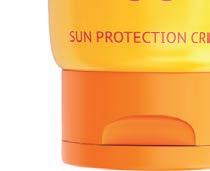
The researchers conclude: “These nanoparticles possess the potential to amass within fish tissues and undergo biomagnification along the aquatic
These nanoparticles possess the potential to amass within fish tissues

“Exposure to ZnO-NP has negative effects on aquatic invertebrates. All of the evidence points to the fact that ZnO-NPs negatively impact the complicated web of interactions and the delicate balance of the aquatic food chain in these habitats.”









Exploring the impact of zinc oxide nanoparticles on fish and fish-food organisms: A review (Ahamadul Hoque Mandal, Surajit Ghosh, Ditipriya Adhurjya, Priyajit Chatterjee, Ishita Samajdar, Giuseppe Piccione, Dip Mukherjee, Kishore Dhara, Nimai Chandra Saha, Cristiana Roberta Multisanti, Shubhajit Saha and Caterina Faggio) Aquaculture Reports, June 2024.
Mystery parasite




Around 160,000 rainbow trout in three publiclyowned hatcheries in the US state of Oregon had to be slaughtered, after they were found to have been infected by a parasite not previously believed to be a problem in the region.
Researchers from Oregon State University and the Oregon Department of Fish and Wildlife have been trying to identify the microscopic parasite. It is a new problem for Oregon but, in the neighbouring state of Montana, a similar parasite led to the deaths of tens of thousands of salmon in 2016. Scientists believe it is a kind of myxozoan but so far have not been able to say specifically which, out of around 2,400 species, it might be.
“We’re hoping we can find out more about it because with the change in climate, warmer rivers — those conditions favour pathogens. It may be that we see this or something else again,” Michelle Dennehy, spokesperson with the Oregon Department of Fish and Wildlife, told local broadcaster Jefferson Public Radio. balance of the aquatic food chain in these habitats.” Multisanti,
Right:
www.fishfarmermagazine.com 41
”

Preparing aquaculture for climate change
Scotland and Norway joined forces last month to raise awareness and initiate action on climate change, as Elisabeth Ytteborg, Carlo C. Lazado and Lynne Falconer report
On 18 April, more than 70 people attended the Aquaculture and Climate Change workshop at the Nofima offices in Ås, Norway. The workshop was a joint initiative between Nofima and the University of Stirling, and aimed to initiate an arena where different stakeholders can meet, discuss ongoing initiatives, share experience and knowledge, and pave the way for more active climate action in the sector. The workshop had two main thematic sessions, where the first aimed at discussing the impact from climate change and raising awareness, while the second aimed at adaptation strategies and possible bottlenecks to action.
Aquaculture and climate change is a complex topic with compounding factors that will require a trans-sectorial approach, multiple solutions and pioneering ideas. An approach to invite a wide range of stakeholders was therefore taken, including researchers in the field (e.g. biologists, climatologists and modellers), industry (eg fish farmers, fish health personnel, pharmaceuticals and technology providers), NGOs and policy makers.
As the organising committee (Elisabeth Ytteborg of Nofima, Carlo C. Lazado of Nofima and Lynne Falconer of Stirling), we were delighted to see so many people take time to attend the event, participate in the discussions, and engage with this hugely important topic.
Solveig van Nes from Marine Prospects did a fantastic job as the host for the day and workshop facilitator. The agenda was a mix of presentations and panel debates, with the first half of the day focusing on “Impact and Awareness”, before moving into “Action and Implementation” for the rest of the day. Solveig kept the schedule on track and encouraged important discussions that inspired new perspectives and thought-provoking comments that
brought the presenters, panellists and audience together.
To start the day, Elisabeth Ytteborg set the scene with a presentation on climate change impacts on aquaculture, emphasising the complexity due to multiple stressors and compounding effects.
Carlo C. Lazado then considered the perspective of the fish and the challenges involved in researching climate change under experimental conditions. Following on from the research perspective, Jon Arne Grøttum, from the Norwegian Seafood Federation, then gave a view from industry, highlighting the need for industry to reduce climate impacts whilst adapting to changing conditions.
Before the panel debate, Megan Rector (University of Stirling) discussed why climate information is needed and why it is important to bridge the gap between available information and actionable information. Megan also introduced Mentimeter which was used for audience engagement throughout both panel debates with insightful results. More than 85% of the audience thought that aquaculture was already experiencing the effects of climate change, but only 12% thought that the industry had the information needed
ng
e ate n the panel from le ri an oc ofima ohn Carmichael ascot Stein Halstensen, rieg Seafoo Sam el n erson ola s an anne igre Scale he organising commi ee from le ynne alconer niversity of S rling lisa eth e org ofima an Carlo C a a o ofima
CLIMATE CHANGE
www.fishfarmermagazine.com 42
Above: The climate or shop at ofima Opposite from top: Solveig van es hos
the first
More than 85% thought that aquaculture was already experiencing the effects of climate change
to respond to challenges. Across multiple questions, lack of knowledge was highlighted as one of the major limitations to climate action.
Information sharing is key
The first panel session, titled “Are we aware and what do we need?”, included Stein Halstensen from Grieg Seafoods, Samuel Anderson from Bolaks, Hanne Digre from Scale AQ, Erik Jan Lock from Nofima, and John Carmichael from Aquascot. The panel were asked how aware the industry is when it comes to climate change, if they are currently affected and how they see production in the future. Small, medium and large companies will have similar challenges when it comes to production of marine animals under climate change, but they need a range of different adaptation options to choose from.
Technology to meet some of the challenges identified were discussed, but major topics like feed ingredients and compounding events from climate change require intensified research focus in the coming years. Joint efforts are needed from all stakeholders involved to understand the complex impact climate change will have on aquaculture. The panellists also highlighted similarities and differences between Scotland and Norway, stressing the need for collaboration and communication across countries.
Lively discussions continued over lunch, showing the need for more breaks, more time to discuss and the importance of bringing different stakeholders from the sectors together.
Lynne Falconer kicked off the second part of the day with a presentation that highlighted the risk of maladaptation, showing examples of how adaptation can have negative effects. Suleiman Yakubu (University of Stirling) presented a new approach for investigating the effects of


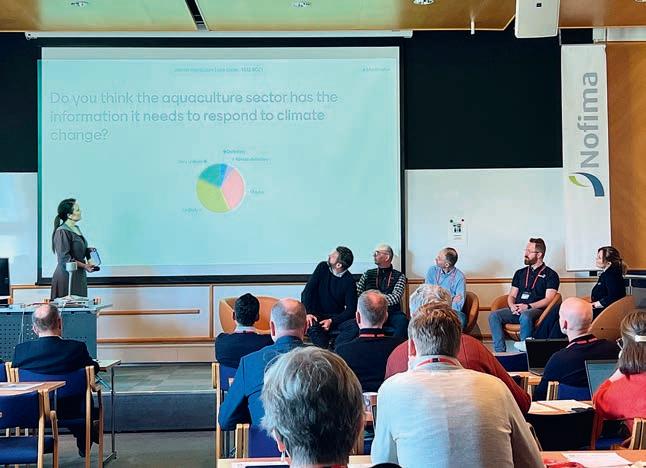



climate change using a virtual salmon farm decision support tool. In an entertaining, but very serious tone, Dag Sletmo, senior vice president at DNB, Norway’s largest bank, provided important perspectives from the financial sector, historical moments where climate risk were identified as financial risk and emphasised the importance of green financing and sustainability focus from investors.
A common theme for the day was that collaboration is key to climate action, and this was strongly emphasised in a presentation by Joakim Hauge from Bellona Environmental Foundation. Joakim’s presentation was called “Breaking the silos – creating cooperations for change” and encouraged efforts to go beyond coping with climate change, stressing the aquaculture sector should look for adaptation opportunities that will also have other environmental sustainability benefits. Next, Fernanda Garcia Sampaio from the Food and Agricultural Organization of the United Nations (FAO) gave the last presentation with an overview of FAO’s framework for climate change adaptation.
The final panel session of the day was titled “How to move forward and promote action” and included Sandy Murray from Marine Scotland, Eirik Moe from Ernst & Young, Jon Arne Grøttum from the Norwegian Seafood Federation, Joakim Hauge from Bellona Environmental Foundation, and Marius Dalen from the Norwegian Ministry of Trade, Industry and Fisheries. The debate focused on challenges in investments, incentives, and bottlenecks when it comes to flexibility in regulations and possibilities for adaptation. Questions related to how to keep economy, strategies, production, and new initiatives going were also raised. The session showed that adaptation to climate change and how to promote action is a debate that will raise more questions than answers in the coming years.
We would like to take this opportunity to thank everyone who participated in the event and all the people behind the scenes who helped make it possible. We will make the Aquaculture Climate Change workshop an annual event and establish an arena that will increase awareness on climate change from stakeholders of the aquaculture value chain and drive climate action in the aquaculture sector.
The impact of climate change on aquaculture needs full attention and more research, and the debate on climate adaptation and strategies is in its infancy. Next year we are aiming at a two-day event, where the first day will be a follow-up from this year and further awareness, and day two will be devoted to climate action.
If anyone is interested in finding out more or has questions or ideas that they would like to discuss, please contact us. We are always interested in collaborations, different perspectives and ideas on how to make a difference, and look forward to supporting collaborative climate action in the future.
The workshop was jointly financed by Nofima, Troms and Finnmark County (TFFK2022-241), and the UK Research and Innovation (UKRI) through a Future Leaders Fellowship (MR/V021613/1).
The organising committee members were: Elisabeth Ytteborg, Nofima; Carlo C. Lazado, Nofima; and Lynne Falconer, University of Stirling
www.fishfarmermagazine.com
43
”
Protecting human rights
Chris
Ninnes, CEO of the Aquaculture Stewardship
Council, offers an overview of the challenges faced by the seafood sector and what can be done to improve the social performance of seafood supply chains
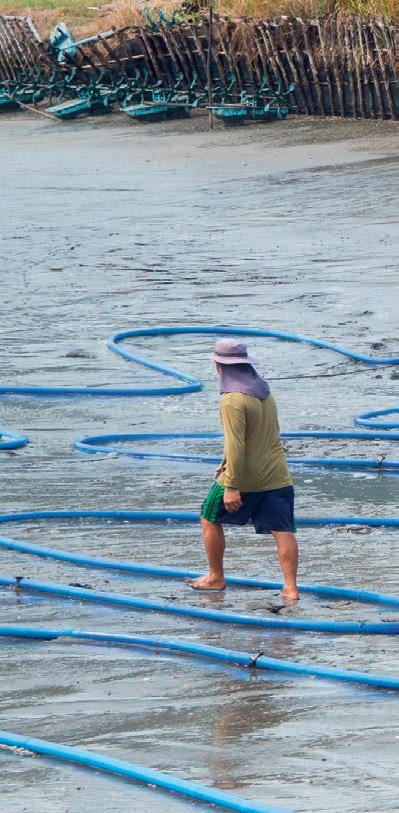

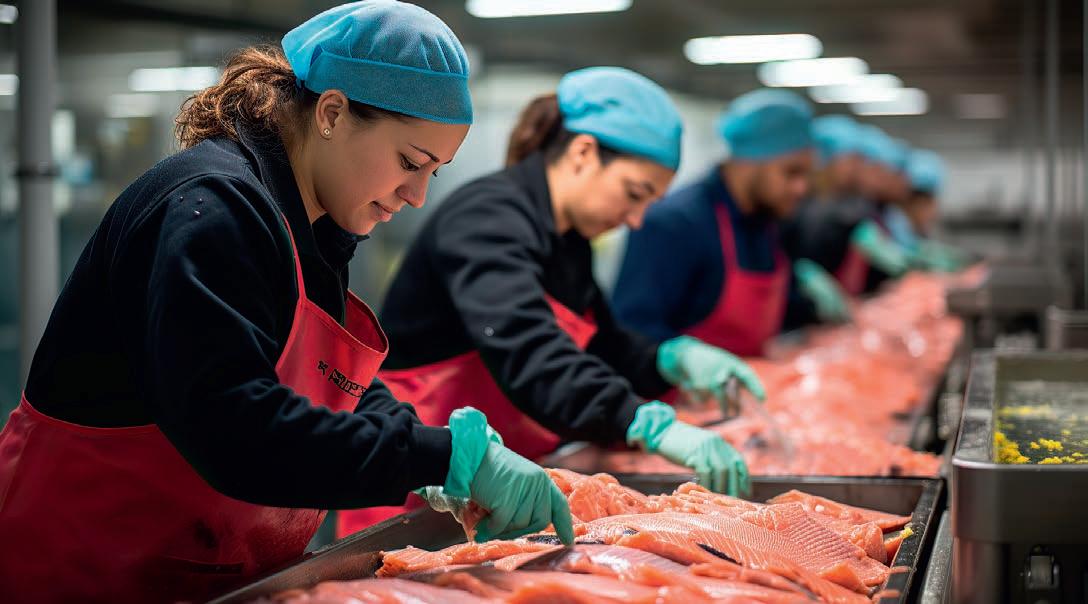
THE recent investigations uncovering human rights abuses in the farmed seafood industry, most recently in the shrimp industry in India, are very unsettling to read. While we all agree that these abuses should have no place in any industry, the reality is starker and more uncomfortable.
Human rights abuses can be found everywhere and no system alone is perfect at eliminating all of them. The Seafood Certification and Ratings Collaboration’s data tool (see footnote 1), which was originally developed to collate information about the environmental performance of seafood production from member assessments, now contains a global overview of key social metrics related to their occurrence. Shockingly, there is evidence of forced labour, child labour or human trafficking within 65% of the countries assessed that are involved with 98% of seafood production. The frequency of these abuses differs by country, but such evidence is much harder to collect.
So, what can be done? How do companies and businesses assess the risk that they may be purchasing seafood that does not meet the standards we all expect? It starts with being honest about the risk and understanding how likely your exposure is. The following simple questions will help assess this risk. Do you know exactly where your seafood was produced? Do you have
visibility of all steps in the supply chain?


Does your supply chain involve limited intermediaries? Are these intermediaries free from the use of migrant labour? If you answered “no” or “don’t know” to these questions, then your business is at increased risk of having seafood tainted with human rights abuses.
Given that seafood is the most highly traded food commodity globally and that most markets, particularly those in Europe, North America and Japan, are far from self-sufficient from domestic production, the uncomfortable reality is that most supply chains are at risk. For instance, around
It starts with being honest about the risk
OPINION
Above: Chris Ninnes
Above left: ll fish processing sta sho l have as goo or ing con i ons as these or ers
www.fishfarmermagazine.com 44
Opposite from top: or ers at a shrimp farm; fishing shrimp farming
”
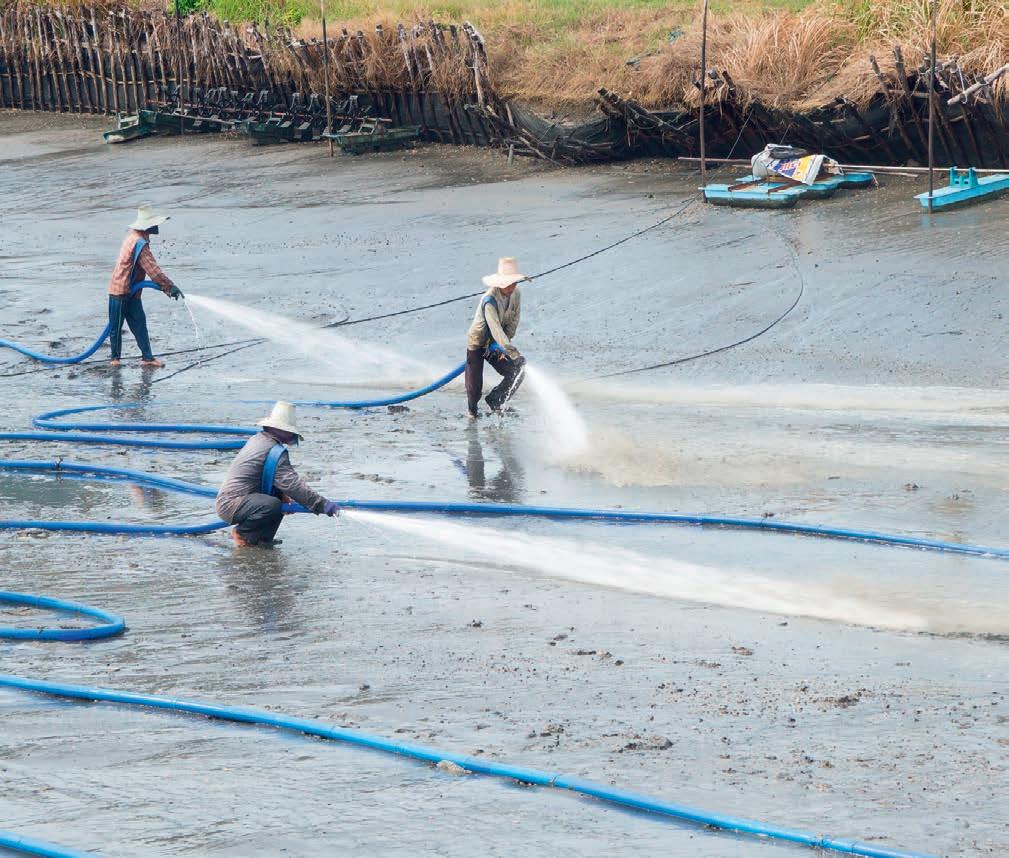
is imported. In the European Union, the percentage is lower at around 70%. But calculations are further complicated because national fleets owned directly or flagged out to third countries are also involved in domestic supply. Such supplies originating from international waters carry increased risk of human rights exposure. (2).
Poverty brings risks
Another unpalatable risk factor is the underlying poverty in the country of production or processing matters, along with poverty levels in the country of origin of migrant workers.
The rise of global supply chains has increased production and processing efficiency because labour costs are lower and regulatory frameworks are less restrictive. This is illustrated by the relative absence of farmed seafood production in Europe, US and Japan, driven by the regulatory burden of establishing seafood farms. But with increasing competition for processing and seafood farming production between countries, the incentive to reduce labour costs also increases. This is often linked to the use of migrant labour, a

becomes less available.
The uncomfortable link between low labour costs and the presence of migrant labour with human rights abuses is well documented across sectors. This has been starkly exposed within the seafood sector in the distant water fishing fleets operating on the high seas, with shocking accounts of human rights abuses. Again, the uncomfortable link is that decreasing catches from poorly managed stocks and increasing operating costs (especially fuel), increase pressure to lower the cost of labour to the extent that modern slavery has been exposed.
While assessing these fundamental risks is a starting point, action across the supply chain from the end business buyer to the point of production is needed to reduce identified risks. Increasingly, legislation is driving businesses to “own” this risk. It is no longer sufficient to mitigate the risk through sourcing guidelines. Honestly owning the risk must recognise that guaranteeing supply chains are free from these risks is virtually impossible to do. Perhaps one of the most celebrated examples of such honesty is “Tony’s Chocolonely”. They publicly recognise the issue:
Crazy About Chocolate, Serious about People
“We’re Tony’s Chocolonely. We exist to end modern slavery and illegal child labour in the chocolate industry. Our vision is 100% slave-free chocolate. Not just our chocolate, but all chocolate worldwide. The choice is yours. Are you in?
The chocolate sector is much smaller than seafood, but the example illustrates how you can publicly own the risk in a positive way. Setting out the challenge but inviting
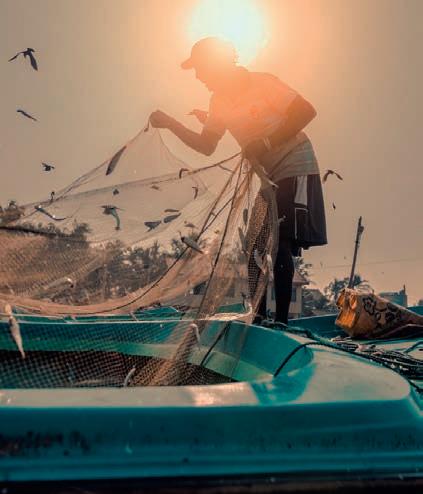
others to share the burden of the solution, in this case also the consumer.
Such “risk” ownership within the seafood sector would be a tipping point of recognition currently absent. Through a collective ambition to improve the current situation, this would create a positive commitment for change. It’s the only way that a sector-wide transformation can occur. However, a commonly voiced criticism to such change is not the need for change itself, but that it would be unevenly distributed or would be further driven into even harder to reach supply chains. But owning the problem with an invitation to improve performance for a widely traded international commodity would have widespread and positive implications. Admittedly, the footprint would not cover all supply chains, but many more would be indirectly influenced. And this footprint would expand if businesses embraced a “seek and address” approach, where possible, rather than “cut and run”, providing of course that pathways to enable change are available. Investigating and identifying a problem only to avoid becoming involved in the solution is counterproductive to driving change.
Another critique is that market demand for improvement is not sufficient, and it is important to reflect over what timeline change can and should occur. Certainly, the environmental and social challenge in front of us has been decadal in its making. And the most important correlation has been increasing population growth. Equally, solutions will and must take time if they are to be long lasting. Which brings me to the role that certification can play.
The role of certification
The most important consideration is that whilst certification tools can be part of the solution, they are not a panacea for all of the world’s social and environmental woes. When certification schemes were originally conceived as a tool for market influence more than 30 years ago, they were often
www.fishfarmermagazine.com 45



”
Transparency must be embedded across the entire certification programme
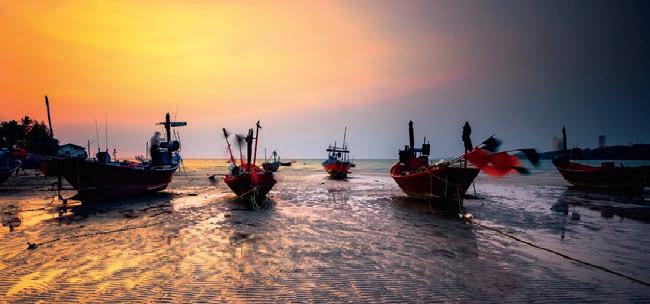
promoted as the ultimate solution. Experience has shown this to have too narrow an expectation.
Many of the criticisms that were levelled at seafood certification, as the MSC went through its painful early years, were that it was a niche approach with no appeal to markets beyond Germany and the UK, and of no interest to fisheries beyond the magnificent Thames Herring. Some fishing nations maintained a negative national position, openly supporting and encouraging a boycott. Others sought to influence the market through national endorsement programmes.
While some of these sentiments still exist and are clearly still emotive, the fact that market success now brings certified seafood products to over 100 markets and an ever-increasing footprint of certified supplies belittles some of that early criticism. The ASC has followed a similar journey, perhaps with less emotion than MSC’s, but challenges remain for all certification programmes in how they increase the footprint of their certified operations.
Certification is a valuable tool that provides assurances about the product’s integrity and authenticity. At their foundation, all certification programmes have a standard, but content, coverage and compliance levels differ. Not all certification programmes have equal focus on social and environmental impacts. Credible standard systems also have layers of rules that detail how the standard is applied to ensure consistency of application, the skills required to deliver these rules, and the checks and balances deployed to ensure this is achieved.
This overarching framework is described well by ISEAL within its various codes covering standard setting, assurances, impacts and more (3). Its code-compliant members have demonstrated achievement of this high bar.
Transparency and traceability
There are two other key attributes that leading programmes also have. The first is that there must be in place credible independent,
third-party systems to provide the assurances required about the production system and the products they provide to buyers. These assurances must also cover the supply chains that deliver them. Simply put: “If you do not know where your seafood has come from, then any other claim you wish to make is meaningless”.
Currently, as is the case with the shared platform that ASC and MSC use, this is based around in-person audits. Supply chain assurances must also evolve to provide comprehensive social assurances, a task that ASC is committed to driving. We must also move away from paper-based audit processes, especially for high-risk supply chains. Digital traceability provides many additional advantages, not least the increased transparency and near real time verification. ASC has invested in a GDST (Global Dialogue on Seafood Traceability) compatible and interoperable system that has been successfully piloted in Vietnamese farms and downstream supply chains. Future pilots will develop solutions to improve increased visibility for retail and foodservice businesses.
The second key attribute is that transparency must be embedded across the entire certification programme. Without transparency, how do you know that a certification programme is delivering on its promise? How can it be held accountable? With increasing scrutiny around social compliance, transparency plays a vital role in establishing what has been reported and what is known as a result. This is why all ASC documents and audit reports are publicly available through its website, including certification decisions about any suspensions or terminations, along with the reasons why. Draft audit reports are also published before they are finalised, which can provide a check and balance and a degree of accountability towards the audit.
Social responsibility is a critical component of our robust standards and ASC takes issues related to human rights extremely seriously. Audits of farm and feed mills must include a trained social auditor and the team must have relevant language skills and experience to conduct worker interviews. The necessary skills required of ASC auditors are significant and leading. Ten per cent of all ASC audits are also unannounced.
Collectively, these requirements provide for robust site investigations, but provide

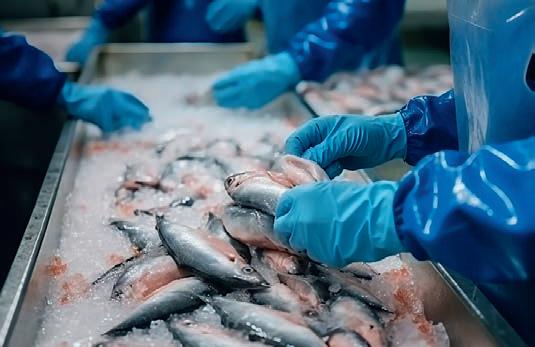
OPINION
www.fishfarmermagazine.com 46
This page from the top: Shrimp farming; fishing oats fish processing pposite a shrimp farmer

rights are regulated against in almost all countries, but still prevail. Illegal activities are deliberately hidden and can be difficult to identify. Despite these critical challenges, ASC’s certification scheme has an important role to play in driving improvement in social responsibility throughout the farmed seafood industry. Through our impact reporting we can demonstrate that we are making a positive difference, but clearly more can be done.
We recognise that no system is perfect and additional approaches are needed to improve supply chain assurances. While constant improvement is built into ASC’s certification programme, a key and critical future development will be the incorporation of how worker’s voice and external grievance mechanisms are made available to workers and communities, and how certification programmes can verify their use and efficacy. Such mechanisms supplement certification processes and provide opportunities for abuses to be disclosed confidentially by workers and for remedy to be applied.
The seafood sector has been slow in the adoption of such mechanisms, which are better developed for land-based crop and livestock farming. They require resourcing initially to investigate the prevalence of such mechanisms from other sectors in key geographies and to ascertain both their ability to embrace the inclusion of seafood and to understand their current performance. Work is also needed to either support the inclusion of the seafood sector within existing mechanisms or promote their development. The Certification and Ratings Collaboration members are currently seeking funding to undertake the former study as a starting point. Beyond access to functioning and inclusive grievance mechanisms, both workers and employers need to be aware of human rights and workers must be empowered to speak up for these rights, individually and collectively, to prevent rights abuses. Access to and membership of trade unions, and the capacity and opportunity for collective bargaining are critical mechanisms that ASC requires across its standards. We are continuously working to improve both the Standard and our wider human rights programming. Finally, we will use all resources available to investigate reported incidents and mitigate and avoid these unacceptable practices happening on ASC certified farms. In line with our ethos of transparency, all related findings will be published on the ASC website.

Chris Ninnes draws on 13 years of experience as the CEO of the Aquaculture Stewardship Council and seven years as deputy CEO and Director of Operations of the Marine Stewardship Council (MSC). He has been Chair of the ISEAL board since 2018 and Chair of the Certification and Ratings Collaboration’s (CRC) Steering Committee since its inception in 2015. The Collaboration consists of ASC, Fair Trade USA, MSC, SeaFood Watch and Sustainable Fisheries Partnership working together to coordinate tools and increase impact so that more seafood producers move along a clear path toward environmental sustainability and social responsibility.
NOTES
AND LINKS
(1) ASC Human Rights data tool https://certificationandratings.org/humanrights-abuses-and-risks/
(2) CRC Guide to Seafood Business Action on Social Responsibility https:// certificationandratings.org/wp-content/uploads/2023/08/Guide-to-SeafoodBusiness-Action-on-Social-Responsibility.pdf
(3) ISEAL isealalliance.org/defining-credible-practice















































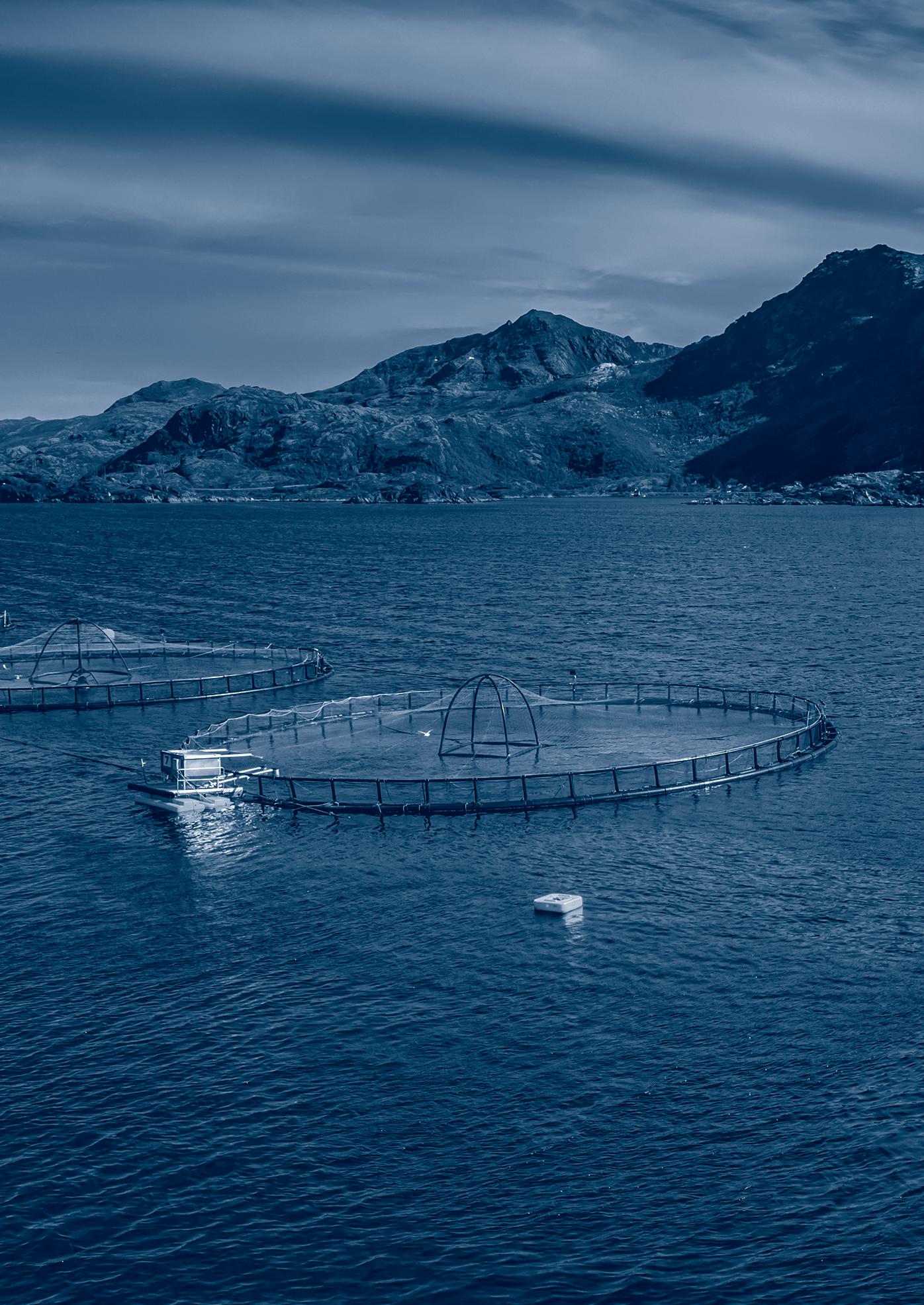



www.fishfarmermagazine.com 47
www.fishfarmermagazine.com VISIT THE Fish Farmer WEBSITE FOR ALL THE LATEST INFORMATION ON: News | What’s New Jobs | Events | Features Opinions Magazine Archive JUST SCAN THE QR CODE TO SIGN UP Fish Farmer NEWSLETTERS Stay in touch with the latest developments from Fish Farmer and subscribe to our online updates. Sent out daily and weekly - Monday to Friday. Weekly Daily
Cutting the carbon
Seafood giant Thai Union aims to get more sustainable shrimp onto the world’s supermarket shelves
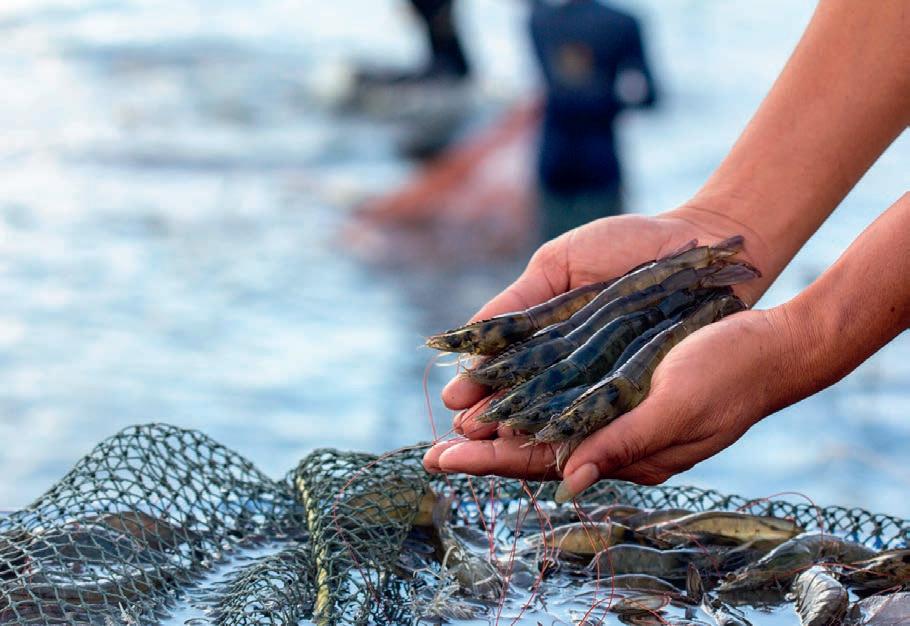


Thai Union Group, the world’s seafood leader, has launched an innovative programme to significantly reduce greenhouse gas (GHG) emissions within the shrimp supply chain. The Shrimp Decarbonisation initiative has been developed in collaboration with global environmental organisation The Nature Conservancy (TNC) and retail group Ahold Delhaize USA.
Thai Union Group PCL is one of the world’s seafood leaders, with annual sales exceeding THB 136.2bn (£2.86bn) and a global workforce of more than 44,000.
The company’s global brand portfolio includes market-leading international brands such as Chicken of the Sea, John West, Petit Navire, Parmentier, Mareblu, King Oscar, Hawesta and Rügen Fisch.
The shrimp pilot programme has a target of producing 1,000 metric tons of processed shrimp that is both lower impact and meets the highest product quality standards. The shrimp will be imported by Thai Union subsidiary, Chicken of the Sea Frozen Foods, and it will be fully traceable from hatchery to the final


point of shipment.
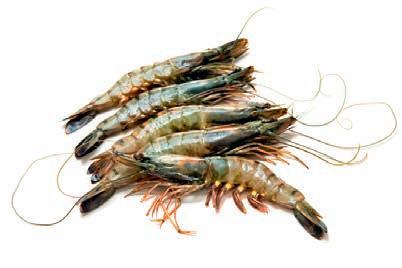
This initiative demonstrates, the company says, Thai Union’s commitment to environmental stewardship and its ambition to lead the seafood industry towards a more sustainable future by driving towards its SBTi (Science Based Targets initiative) approved 42% reduction in GHG emissions within its own operations and supply chain.
Launching the programme, Adam Brennan, Chief Sustainability Officer at Thai Union, said: “Working alongside The Nature Conservancy allows us to pioneer a model of shrimp production that is not only more environmentally responsible but also economically viable. Our pilot programme for 2024 is a testament to our dedication to reducing carbon emissions and setting new sustainability benchmarks in the seafood industry.
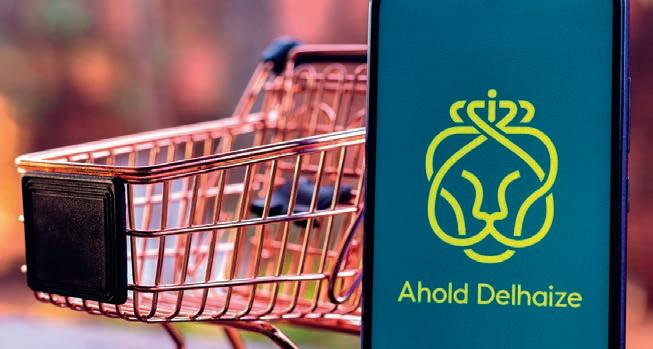
Above: Farmed shrimp
Below: Retailer Ahold Delhaize USA is a partner in the ini a ve Opposite: Adam Brennan, Chief Sustainability cer of hai nion
“The Shrimp Decarbonisation programme is not just about reducing emissions; it’s about transforming the shrimp industry into a more sustainable, efficient and equitable sector. By proving that sustainable practices can lead to economic benefits, we aim to inspire and lead the way for the entire industry.”
The programme’s primary focus is making on-farm investments to enhance efficiency and productivity, reduce energy usage and increase sourcing of sustainable feed ingredients. Together, feed and farm optimisation are identified as the key drivers for achieving productivity gains and emissions reductions.
Following the pilot’s success, Thai Union plans to scale these efforts across other shrimp farms in Thailand and beyond.
Ahold Delhaize USA, parent company of one of the largest grocery retail groups in the United States, is supporting the programme with two of its brands, Food Lion and Hannaford.
“Ahold Delhaize USA and each of our local brands is deeply committed to sustainability and responsible sourcing
It’s about transforming the shrimp industry
SHRIMP
www.fishfarmermagazine.com
48
”

across the supply chain, and we take seriously our role in partnering with suppliers and other stakeholders to create innovative solutions to address climate change,” says Marc Stolzman, Chief Sustainability Officer for Ahold Delhaize USA. “The Shrimp Decarbonisation initiative represents a big step forward in sustainable aquaculture. We are proud to partner on this project, which we believe has significant potential for the retail


sector and further advances our work to enable healthier people and a healthier planet.”
The intervention packages, which are tailored for different farm types and can include installation of photovoltaic panels at the farms, will be implemented in two phases.
These sustainability interventions are projected to reduce GHG emissions, Thai Union says, showcasing the programme’s

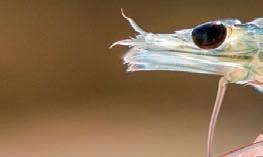



potential to make a substantial environmental impact.
ASC improvement project
Last September the Aquaculture Stewardship Council launched a framework for Aquaculture Improvement Projects (AIP) in the shrimp sector, at the Global Shrimp Forum in Utrecht, in the Netherlands.
The Shrimp AIP applies similar principles to existing finfish programmes, enabling producers that are not ready yet to meet the full ASC standards to show that they are still improving their performance.
Thai Union was announced as a partner for the new programme. The company Thai Union will be one of the first setting up an AIP and aims to bring more than 4,000 metric tonnes up to ASC certification and another 11,700 metric tonnes in volume implementing best practices in line with the social and water quality requirements of the ASC Standards.
The ASC principles have been incorporated into Thai Union’s SeaChange® 2030 sustainability strategy which includes ambitious goals for “people and planet”. Through SeaChange®, the company has been recognised and listed on the Dow Jones Sustainability Indices (DJSI) for the 10th consecutive year in 2023 and ranked number one on the Seafood Stewardship Index (SSI) for the third consecutive time













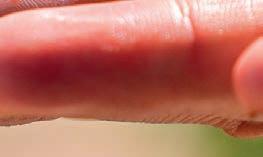




























www.fishfarmermagazine.com 49
HEALTHY ANIMALS. HEALTHY FOOD. HEALTHY WORLD.® Solutions for optimizing your aquaculture business performance Promotes gut health and enhances nutrient absorption. Boosts immunity to reduce disease and parasite outbreaks. Reduces the energetic cost of managing stress, meaning better growth, survival rates and profits It all starts with a healthy gut PAQ-Protex TM Protecting Your Investement, Naturally. Strong Performance Optimal Health PAQ-Gro™ www.phibro-aqua.cominfo@phibro-aqua.com ©2024 Phibro Animal Health Corporation. Phibro, Phibro logo design, Healthy Animals. Healthy Food. Healthy World. and PAQ-Protex and PAQ-Gro are trademarks owned by or licensed to Phibro Animal Health Corporation or its af liates.
Big plans
Cod farming has been tried before but this time the industry looks set for growth, reports
Vince McDonagh
NORWAY’S cod farmers are going all out for growth. The industry has set itself the ambitious target of 150,000 tonnes annual production within the next six years.
Given recent government restrictions on new cod farming projects, the figure may appear unrealistically high – and probably is – but there is no doubt that the sector is determined to expand big time.
To put that ambition into perspective, it is six times the entire North Sea cod quota of 24,500 tonnes for this year and not so far short of Norway’s share of the Barents Sea 2024 quota of 212,000 tonnes.
The industry body is the Norwegian Cod Cluster, which is promoting innovation and research, and is also proving to be a driving force for growth.
Demand for cod remains strong, with British fish and chip shops still among the main buyers, but it is also becoming increasingly popular in Mediterranean countries such as Spain.
But the Cluster is now eyeing the United States as the really big market for the future. Chefs over there seem to like the white fish.
The two principal sources of trawled cod are Iceland and the Barents Sea, shared by Norway and Russia, but they cannot provide all the world requires, and farmed cod is now starting to fill part of the gap. The seafood sector likes farmed cod because supplies are not so likely to be interrupted by bad weather, as so often happens during the winter.
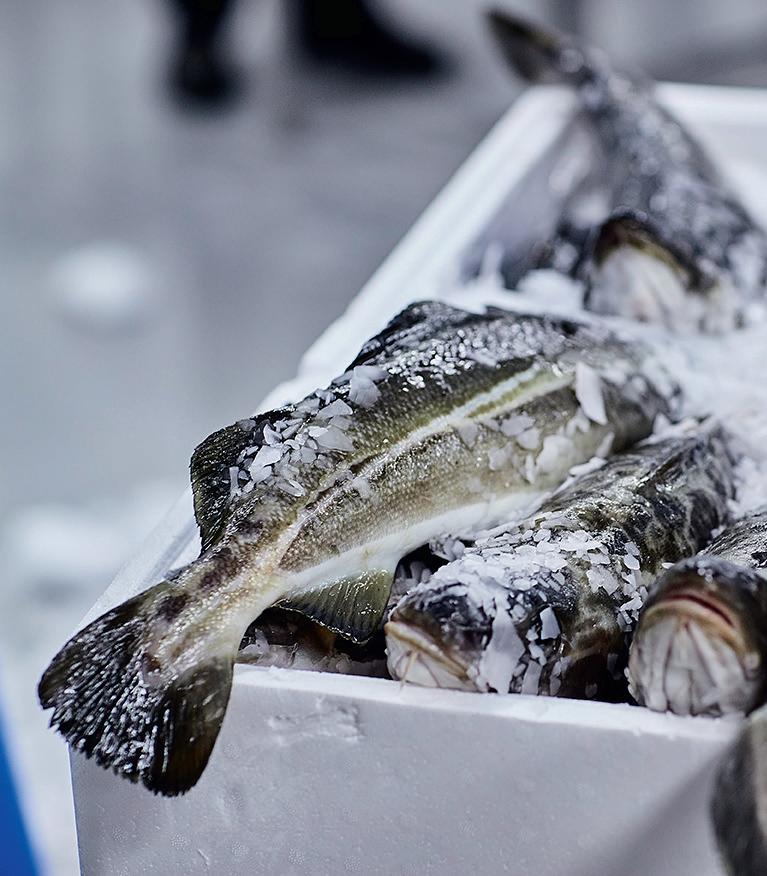



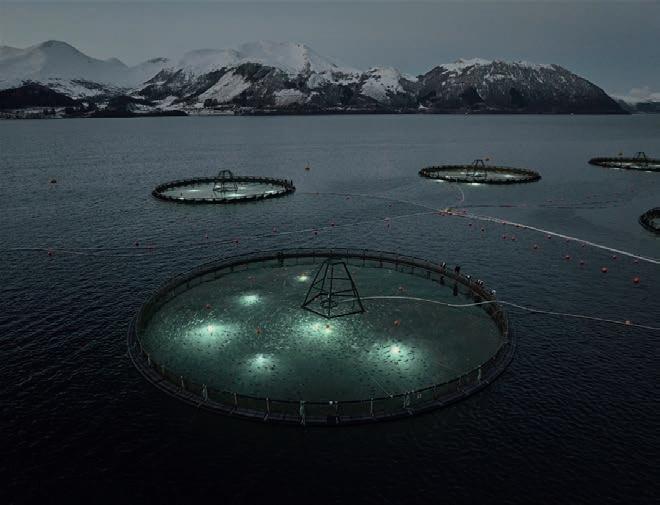


The turnaround in cod aquaculture fortunes has been remarkable. Some 40 years ago, it looked as if cod farming would never get off the ground. Previous attempts had been dogged by seemingly insurmountable technical and biological problems.
The industry, including a start-up in Shetland as well as several companies in Norway, all but collapsed. Now, innovation and research over the past decade has brought it back to life.
The first commercial slaughter of this new era farmed cod took place less than three years ago. Since then, the sector has grown impressively, with existing companies expanding and new businesses starting up.
The Cod Cluster, which merged with the Cod Network last year, has been active
COD FARMING
www.fishfarmermagazine.com 50
This page from top: Norcod box; Ode cod farm; Norcod Sirena pack Opposite from top: Norcod farm; boxed cod
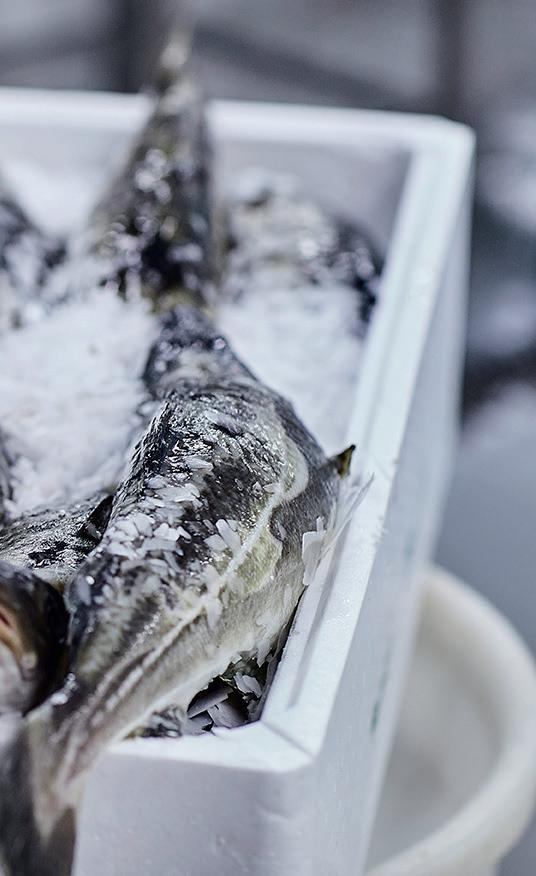



even before the first new era commercial harvest in 2021. It organised a trip to United States in 2019 and was politely told to come back when it had a product to sell.
The Cluster says: “With increasing investment in farmed cod, we were finally ready to follow this up in 2024.
“The seafood fair Seafood Expo North America is held in Boston every year and was a natural destination for us. We spent time walking around the fair and talking to both Norwegian and American players.
“One of the most interesting experiences we had at the fair was the very positive attitude towards Norwegian cod, regardless of whether it was farmed or wild caught.
The Cluster adds: “There is great potential for Norwegian cod in the American market, but predictable and stable delivery is required.
“It was also interesting to note that there was no significant difference between farmed and wild, which may indicate that these two can complement each other throughout the year.
“More important seemed to be Norway as the country of origin. Sustainability and responsibility were a consistent focus at the fair, something we are happy to say that Norway responds well to.”
The Cluster says tasting events in Boston earlier this year have gone very well, but the predictable delivery offered by farming, which trawlers cannot always provide, is a key advantage for the farmers.
A round of visits was also made to various US grocery chains to see the selection of cod in the stores, and what competition the Norwegian cod faces.
The Cluster says it was interesting to find that the prices of frozen cod were largely the same everywhere in the US, regardless of whether the fish was from Iceland, Norway or other countries and regardless of the type of store.
It adds: “The variations on fresh fish, however, were somewhat greater.”
Government applies the brakes
The main stumbling block to growth may, however, come from within Norway rather than from external market forces.
A couple of months ago the Norwegian authorities called a halt to further cod farming applications especially at new locations.
Mattilsynet, the Norwegian Food Safety Authority, says the industry has been growing so fast that it wants time to look at risks and biological implications.
Also there is a growing ecological body in Norway, especially on the Left, that would like to see cod (and salmon) farming stopped altogether.

”These groups are unlikely to get their way, but that doesn’t mean the sector will not be faced with the sort of restrictions that hinder ambitious growth.
Cod farming Mark Two has huge potential for the country, particularly in coastal areas where salmon has done so much to improve the local economy.
Cod farming is also catching on outside Norway. AquaFounders Capital, a company set up by former Kingfish Company CEO Ohad Maiman and former Atlantic Sapphire founder Thue Holm, are reported to be planning to farm Alaskan black cod at a new land-based facility in the Netherlands.

There is great potential for Norwegian cod in the American market
www.fishfarmermagazine.com
51
Wrasse the way to do it
Cleaner fish welfare is increasingly an issue on the scientific and policy agenda for aquaculture
ATEAM of UK researchers has received funding to find better ways to vaccinate ballan wrasse against bacterial infection.
It is hoped the project could help to grow the use of wrasse as cleaner fish to control sea lice on salmon farms.
The consortium - led by the University of Stirling’s Institute of Aquaculture and the salmon producer Mowi, with support from Otter Ferry Seafish, Ceva Ridgeway Biologicals and the Sustainable Aquaculture Innovation Centre (SAIC) - will explore the range of factors that determine the best possible conditions for delivering vaccinations against Aeromonas salmonicida, a bacterium which can cause potentially fatal outbreaks of disease in cleaner fish.
Ballan wrasse currently receive vaccinations against multiple health conditions at the hatchery stage. However, the group will look at alternative formulations of the vaccine, which could offer greater protection against disease. A core aim of the project is to determine the most effective composition of antigens to elicit the best immune response in juvenile fish.
The team will also consider the best timing and method of delivering the vaccine - ideally through immersion which can be easier to administer than injections - and assess and compare the way ballan wrasse react to each variable.








”We know that prevention is better than cure
Above: rasse at er Ferry
Below: Ballan wrasse, reared at Ocean a ers in ales eing transferre to o i farms in Scotland
Dr Sean Monaghan, of the Institute of Aquaculture at the University of Stirling, said: “Enhancing vaccines for Aeromonas salmonicida could represent a significant step forward in the use of ballan wrasse in aquaculture. We know that prevention is better than cure and we are, therefore, working towards the development of more effective vaccine formulations and protocols that can be used by hatcheries and producers to improve fish welfare.”
Dougie Hunter, technical director at Mowi, said: “Ballan wrasse, alongside lumpfish, are excellent cleaner fish and a natural solution to effectively manage sea lice on our salmon. For us to give these fish the best environment and welfare, we must protect them against stress and disease, including infection caused by Aeromonas salmonicida, which can be observed in wrasse from an early stage.





“At Mowi we are committed to ensuring the best fish welfare at all our facilities and for our new cleaner fish hatchery in Anglesey, and that includes proven disease prevention tools such as vaccines. Mowi’s collaboration with Scotland’s leading fish health and vaccine experts and SAIC will be vital in finding the best vaccination strategies to enhance wrasse health protection.”
Heather Jones, CEO at SAIC, said: “Fish health and welfare is an ongoing focus for the sector, so we are pleased to extend our commitment to this collaborative project and help the valuable research to progress. Formulating a vaccine that enhances wrasse health protection will ultimately support the use of this sustainable sea lice treatment which could unlock further economic growth for the wider aquaculture sector.”
Better protection
Meanwhile, over the past few years, awareness has been growing that salmon farmers need to take account of cleaner fish health and welfare as well. This month, as from 19 May, the RSPCA’s revised welfare
CLEANER FISH
www.fishfarmermagazine.com
52
Photo: SAIC


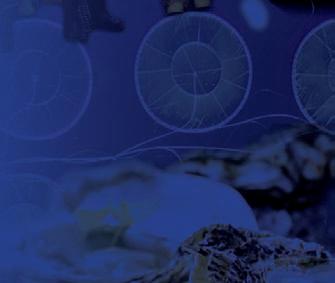
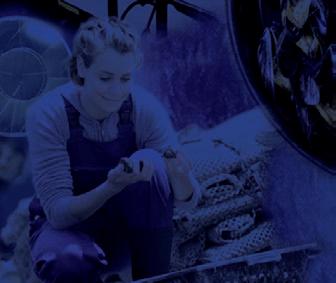


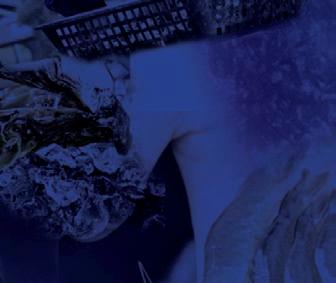































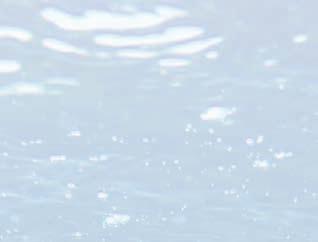














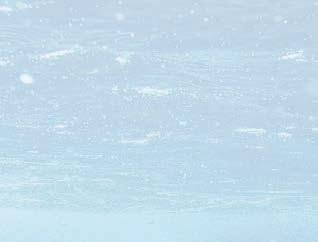


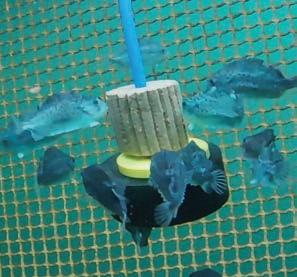


www.fishfarmermagazine.com 53 The next generation of sustainable and carbon neutral fish hides. Cleaner fish live within kelp forests in the wild, the KelpRing replicates this and brings mobile kelp forests into the salmon pens. Shown to provide environmental enrichment and welfare enhancement for cleaner fish. T: 07818 453220 E: martin@kelpring.com www.kelpring.com ENHANCED NATURAL HABITATS FOR CLEANER FISH Looking to recruit? Fish Farmer Post your vacancy on www.fishfarmermagazine.com Contact Janice Johnston 0044 (0) 131 551 7925 jjohnston@fishfarmermagazine.com for only £225 (+vat) per job posting. Revolutionise your Aquaculture Operation with our unique stategic feeding system
www.vitaaquafeeds.uk www.ptaqua.eu Increased fish welfare Supports stable growth Maintains fish health Improved sea lice control Complete solution from hatchery to pen Norwegian Distributor: HIGH QUALITY NUTRITION SUSTAINABLE INGREDIENTS Produced in the UK by ◦ ◦ ◦ ◦
VITA
AQUA FEEDS

standards for Atlantic salmon come into effect, including a raft of new standards specifically concerning cleaner fish welfare.
An important new requirement is that cleaner fish must be removed from the crowd in a pen before the salmon are removed for treatment, for example delousing. It has been found that some treatment systems designed for larger fish such as salmon can be problematic for smaller cleaner fish, especially lumpfish, which have a tendency to cling onto flat surfaces and can end up being stuck in pipes and filters.
The revised standards state that any dead cleaner fish must be removed promptly and advises that this should be carried out at least twice a week, and preferably daily.
By 1 May 2025, cleaner fish must be removed from the crowd or prevented from participating in the crowd prior to any salmon handling event that requires the fish to be removed from the pen environment.
Cleaner fish must not be exposed to any non-medicinal treatment that will cause injury or suffering, and a risk assessment must be carried out
When cleaner fish need to be despatched, only humane methods may be used. These are defined as (a) being put into an anaesthetic overdose under veterinary prescription; or (b) a percussive blow or electrical stun-to-kill, for wrasse over 50g. Other slaughter methods such as bleeding (without stunning), chilling/ freezing or asphyxiation are not permitted.
The standard calls for the use of vaccination where necessary and sets out rules for how that is to be carried out. It also sets out parameters on stocking density and requires that cleaner fish mortalities, and the causes, are recorded.
Sean Black, Senior Scientific Officer and aquaculture specialist at the RSPCA, said: “The new farmed Atlantic salmon standards will be a huge step forward for fish welfare… we are pleased to introduce over 80 new standards to improve cleaner fish welfare. These include the need to risk assess the impact of treatments on their welfare, the requirement to record, categorise and monitor all mortality causes and reduce transport stocking density.”
Glowing report
Lumpfish can play an important role in helping to keep lice numbers down, but did you know they can glow in the dark?
A study led by Thomas Duhasz-Dora of University College,
Cork, Biofluorescent response in lumpfish Cyclopterus lumpus to a therapeutic stressor as assessed by hyperspectral imaging, looked into whether the fish’s natural bioluminescence was affected by external environmental factors –specifically, stress.



Lumpfish have been found to emit green and red biofluorescence within the blue shifted light of their environment. The researchers measured the bioluminescence following a freshwater bath treatment that mirrors a typical non-medicinal treatment for, to give an example, amoebic gill disease (AGD).
The study found that the treatment, which is mildly stressful for the fish, was associated with an increase in luminescence as detected by hyperspectral imaging. This suggests, the researchers say, that such analysis can be used as a non-invasive test for stress.
Further, the study found that this stress reaction was not displayed equally between individuals – raising the prospect that strains of lumpfish with greater tolerance of stress could be raised.


Treatment systems designed for larger fish… can be problematic for smaller cleaner fish
CLEANER FISH
Top: mpfish
www.fishfarmermagazine.com 54 ”
Above: allan rasse
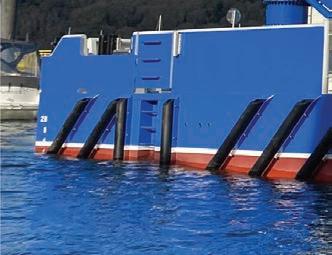
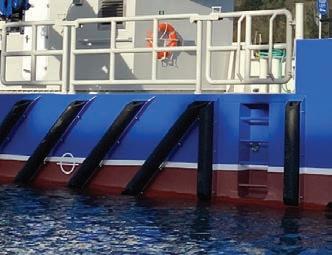
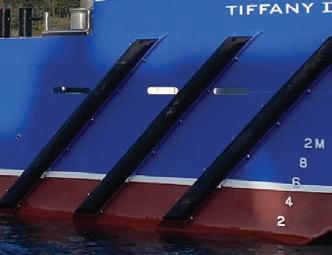

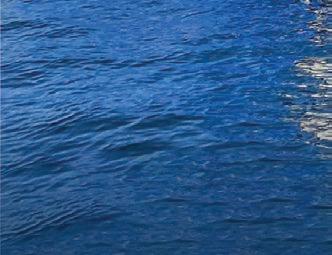
Rapid
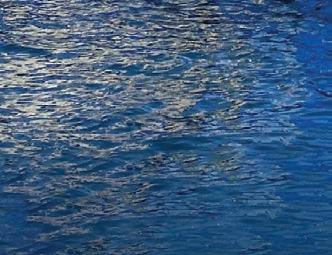




Now available from stock. The
Utility
Find out more on Damen.com
Damen Landing
Vessel (LUV) 2208 o ers the aquaculture sector a strong, stable workboat based on the proven credentials of the iconic Damen Multi Cat series. The LUV boasts ample deck space, with a capacity of 70 tonnes, or 2.5 tonnes per m2. She's the only LUV in her class capable of supporting a heavy duty deck crane - HS Marine AK 72 series.
access to Oceans of Possibilities.
Pictured here: Landing Utility Vessel 2208






years of marine excellence 25
The UK’s biggest event for workboats and working vessels celebrates its quarter-century with a packed programme
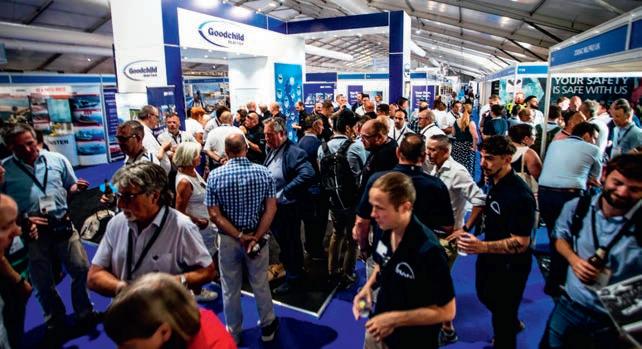
THE landmark 25th anniversary edition of Seawork, the UK’s leading event for workboats and working vessels, takes place over 11-13 June 2024 in Southampton, UK. Its sister show Speed@Seawork, which focuses on fast vessels operating at high speed for security interventions, military use, and search and rescue, is being held the day beforehand, Monday 10 June.
Seawork features a major trade show with the chance to see vessels in the water as well in the exhibition space, and also a conference with leading speakers addressing key issues in the marine sector.
HRH The Princess Royal will officially open the Seawork trade show and conference on Tuesday 11 June. The Princess Royal has visited Southampton many times, however, this will be her first visit to Mayflower Park for Seawork.
Expertise on show
The exhibition at Seawork 2024 includes a number of key players well known in the aquaculture sector.

Family-owned Damen Shipyards Group has been in operation for over 90 years and offers maritime solutions worldwide, through design, shipbuilding, ship repair and related services. Damen operates 35 shipyards and 20 other companies in 20 countries, supported by a worldwide sales and service network. The group employs more than 12,500 people, bringing together a total production value of 2bn (£1.7bn) and delivering more than 140 ships in 2023.
Macduff Ship Design Ltd is a proven industry leader in the naval architecture and marine survey sectors, having worked for more than 30 years with owners, operators and shipyards globally. The company is based in Macduff in Scotland, at the heart of the UK aquaculture and fishing sectors.
Nauplius Workboats was founded in 2006 by Jaap van den HulKuijten, marine engineer, and Gerrit Knol, Technical Director Nauplius, with the aim of changing the way boats are delivered.
No standard products are brought to a client, the company says, but there is always an open conversation with “needs and wishes” as a leading guide in design. Nauplius Workboats customises and is constantly developing designs to address practical needs.
Also represented is the Norway-based electric boat manufacturer Evoy; AlphaGeo, the UK-based re-seller of unmanned aerial vehicles, ROVs (underwater drones), survey equipment and software; and Brimmond/Heila Cranes which supplies standard and custom-built marine and offshore cranes.
Representing a whole sector of vessels is The Workboat Association, the trade, skills and safety standards association for the workboat industry.
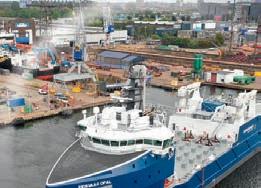

The conference programme
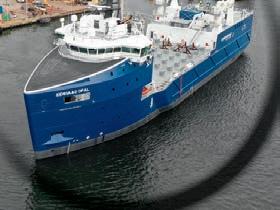
The conference programme this year will have cutting operating costs and reducing carbon emissions as its key themes, with the theme: “The Future Fuel Matrix & OPEX Reduction”.
Decarbonising operations to reduce emissions and costs remains top of the agenda at Seawork. These conferences will share insights and learnings on key themes that are at the forefront of discussions across the industry – and the programme will also include “Meet the
SEAWORK 2024 PREVIEW www.fishfarmermagazine.com 56

UK Government” sessions.
The free-to-attend bite-size sessions will tackle how the latest regulations are driving change for fleet operators, vessel
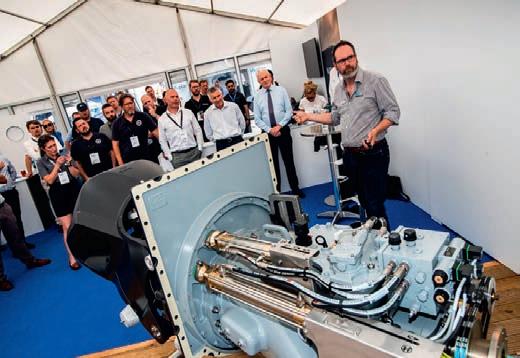



manufacturers and designers; what cutting edge technology is delivering for the commercial marine sector in the race to provide future fuel options; plus, the advantages and challenges with battery technology for commercial marine applications including workboats in meeting their day-to-day operational needs.
The main conference programme takes place on Wednesday 12 June.
Multiple UK government departments including the National Shipbuilding Office (NSO), Ministry of

Key features
Opposite from top: Seawork 2023 from the air; Seawork 2023 expo; Damen completes Eidsvaag Opal conversion
Above: Engine exhibit from the 2023 show
www.fishfarmermagazine.com 57 KAMAT High Pressure Pump: (Max Flow – 500lpm / Max Pressure - 230 Bar) Scania DI09 Marine Engine: 350hp 12” Digital Display + Radio Remote Stainless Steel Fuel Tank: 290L Externally Mounted Duplex Filters: 4” Stainless Steel Removeable Marine Grade Aluminium Canopy Scotland’s only company to offer a full 360° manufacture, rental and support package for high-pressure net cleaning pumps. NetJetTM
Can be configured to your exact specification, with options including diesel engines or electrical motors and various flow and pressure options. www.brimmond.com+44 (0)1467 633805 info@brimmond.com T Kintore, Aberdeenshire, Scotland, AB51 0QP Features KAMAT high pressure pump Ease of maintenance Onsite technical support Increased uptime
” Our coasts and seas have the potential to deliver sustainable growth and jobs

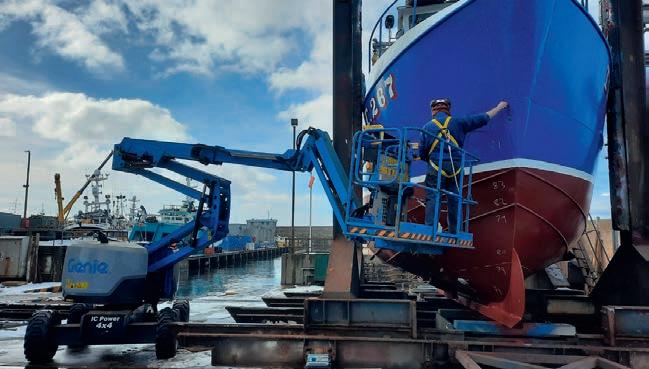
Defence (MOD) and the Department for Business and Trade (DBT) will be out in force at Seawork 2024.
A full programme of sessions is planned in Conference Room 1 on Tuesday 11 June. This is open to all Seawork visitors, who can also drop by to the UK Government Zone in Hall 3 at any time during the event.
Seawork & Marine Civils offers a unique opportunity for exhibiting companies to meet with the above departments to discuss products and future plans.
Seawork exhibitors can apply for one-to-one meetings with the NSO, MOD Boats Team and the DBT experts via the online exhibitor manual.
Career opportunities
Leading maritime trade event Seawork is delighted to be working with Maritime UK and the Solent Local Enterprise Partnership (LEP) to deliver another exciting careers event on the final day of Seawork, Thursday 13 June.
The European Commission has identified the need for investment
DESIGNING TO DELIVER





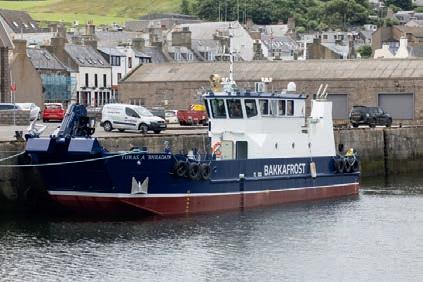
in skills and career development in the Blue Economy, stating: “Our coasts and seas have the potential to deliver sustainable growth and jobs in the coming years and contribute towards the Green Deal objectives. This will only be possible if we invest in new blue skills and career development.”
Maritime businesses and organisations offer a wide range of different job opportunities and are always seeking to expand the skills base of existing and future employees.
The dedicated Careers Fair at Seawork 2023 brought students and young people aged between 15 and 19 from schools, colleges, training centres and universities across the UK to see first-hand what a job in the commercial marine industry could look like.
Seawork also hosts a Maritime Training & Careers Pavilion, sponsored by Jobs in Maritime, which is centrally located within the exhibition halls. There is also a Maritime Training & Careers Trail.
Awards set to launch
Also this year, Maritime UK will be launching the Maritime UK Solent Awards 2024, at Seawork, Europe’s largest on-water commercial marine and workboat exhibition.
On 11 June, network members and delegates are invited to join them to hear from previous winners, including Don Millar from Just Be Maritime, Start-Up for the Year winner in 2023.
Attendees will also hear from Portsmouth Sail Training Trust, Maritime UK Solent’s Charity of the Year, who will describe how being associated with Maritime UK Solent in the last year has furthered their work supporting disadvantaged young people.
The window to apply for the Maritime UK Solent Awards themselves opens on 24 June.
To book a place at Seawork 2024 or to find out more about the event, go online to seawork.com



Our coasts and seas have the potential to deliver sustainable growth
Clockwise
SEAWORK 2024 PREVIEW www.fishfarmermagazine.com 58
top left: ac
esign
afrost
oat ”
from
Ship
amen or oats visitors at Sea or voy or oat a
or




www.fishfarmermagazine.com 59 will be exhibiting at Seawork, Southampton, UK - 11-13 JUNE 2024 - Stand: C6 CONTACT T: 01367 243203 sales@alphageouk.com alphageouk.com
What’s NEW
Monthly update on industry innovations and solutions from around the world
Vónin Scotland rolls out new brand in Aviemore
Vónin Scotland is set to debut under its new brand at Aquaculture UK 2024, held in Aviemore on May 14-15. Part of the Vónin Group, the company has service stations in Scalpay and Scalloway, and is currently constructing a third in Kyleakin, expected to open in 2025 with state-ofthe-art technology. At the upcoming show, Vónin Scotland will showcase its latest developments in fish farming nets and mooring systems. The company will also highlight its comprehensive net maintenance services, demonstrating its commitment to advancing sustainable aquaculture practices throughout Scotland. Don’t miss this glimpse into the future of aquaculture innovation!
www.vonin.com


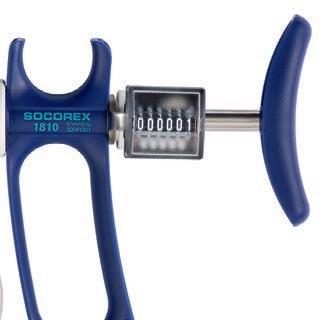
Socorex FishGuideTM helps in fish injections
FishGuideTM is a device enabling quick and precise fish and syringe positioning. It reduces the risks of fish wounds and protects users from injuries.
Recommended for injecting various fish species, the FishGuideTM may be installed and removed in no time without any tool. Users can choose between the following grip sizes: 15mm, 25mm, and 45 mm. They fit Socorex original 187 or Socorex ultra 1810 models, both known and appreciated in fish farms for their robustness and reliability.
Made with stainless steel body and copper grips, each FishGuideTM can be positioned over 360° on the syringe.
For more details see www.socorex.com
Eight Loch Duart sites to integrate Innovasea’s real-time pen monitoring solution
RS Aqua, a leading supplier of aquaculture equipment in the UK and Ireland, is set to install Innovasea’s environmental monitoring solution, aquaEnvironment, at eight additional Loch Duart sites in the North West of Scotland and the Western Isles. The systems use wireless underwater sensors and have already been deployed on over 50% of salmon farms in Scotland and Ireland (pictured) providing farmers with real-time data on crucial environmental and weather-based factors for informed decision-making. Once installed, farmers across these sites can closely monitor water quality levels, optimise overall farm operations, and prioritise fish welfare.
www.rsaqua.co.uk

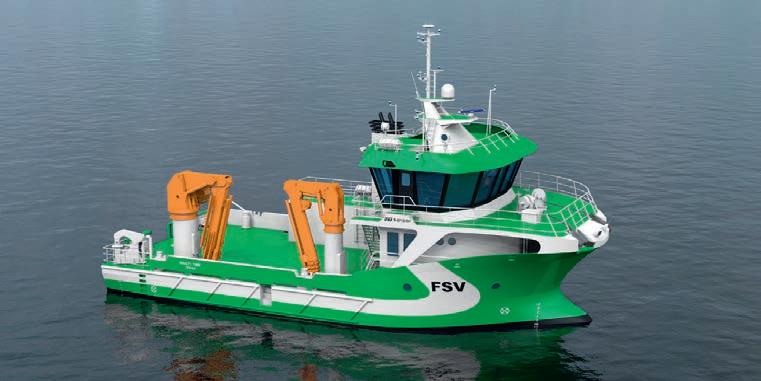
Lehmann wins workboat battery contract
Germany’s Lehmann Marine has received a significant order to supply six CUBE battery systems, with a total capacity of 6.6 MWh, for six new state-of-the-art fish farm support vessels. The order was placed by Elmarin, a Norwegian system integrator providing electrical engineering services for the maritime industry. The six support vessels will be built at the Sletta Verft shipyards in Norway. The ultimate customers are FSV Group, Cermaq Norway, and Frøy.
PRODUCTS AND SERVICES www.fishfarmermagazine.com
60

The Green Sea is back, and ready to service
A
Norwegian company is helping Scottish salmon farmers with effective, safe delousing
Facts about Green Sea Service
• Established in Kristiansand, Norway, in 2019 with managing director Stian Espeland as one of the co-owners.
• Stable operations and good financial results from the first year of operation. The majority of assignments are located in Scotland.
• Utilises leading FLS technology in delousing, which has particularly positive effects on fish welfare and no impact on cleaner fish.
NORWAY is the world’s largest producer of salmon, while Scotland ranks third and is the second largest in Europe. Fish farming has become a high-tech industry where small changes can have significant impacts, placing increasingly high demands on suppliers and fish farmers themselves. Luckily for the aquaculture industry in Scotland, there is a Norwegian service provider with an excellent track record ready to assist.
The right equipment and expertise are crucial to succeed in today’s aquaculture industry, which is why Green Sea Service from Norway has achieved great success with its delousing services in Scotland over the past five years. Managing director Stian Espeland says that they are a growing company that gladly takes on assignments for customers seeking a reliable partner in delousing.
He adds: “We have worked for large companies like Bakkafrost and Cooke Aquaculture, but also smaller companies with just a few locations in total. We are well known from Unst in Shetland to Girvan, so it’s safe to say that the entire west coast of Scotland is our operational area. We operate out of our base in Stornoway, and travel to the places where our services are needed.”
There are mainly two components that make up the recipe for success for Green Sea Service.
Firstly, we receive a lot of feedback from satisfied customers that we have a solution-oriented crew that is easy to collaborate with that delivers on-site. In addition to this, we have delousing equipment that allows us to remove up to 100% of all lice
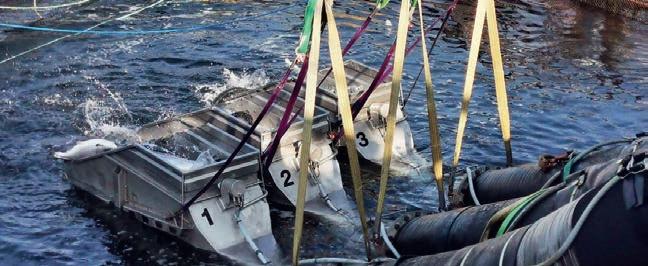
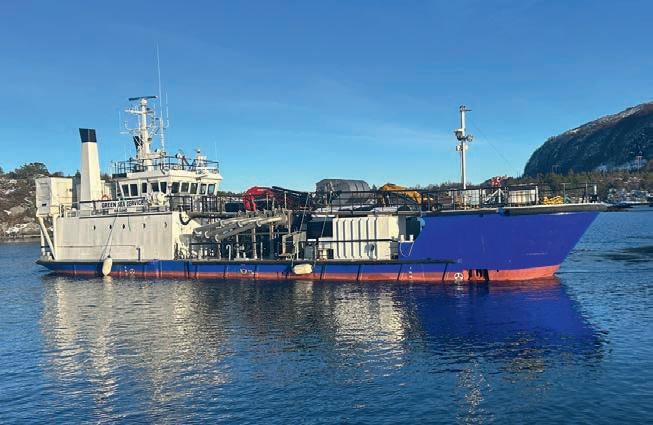
”Green Sea Service have one of the best delousing systems we’ve used
Above: M/V Green Sea Service has, with great success, visited a wide range of fish farming sites along the Scottish west coast
Left: Clean fish happily leaving the system
without the use of pumps, brushes, or heat. This creates a very good overall package that has generated demand for our services.
With a crew of four people per shift, Green Sea Service delivers efficient delousing with a capacity of 100 to 120 tons per hour. In other words – they work fast, and thoroughly.
We are a flexible company that adapts to the needs of the customer. This also applies to the type of assignments we take on, as we can work on both long-term and short-term contracts. Those interested are welcome to contact us, and we’ll find solutions together. Our equipment is also flexible, and our smaller boat allows us to operate efficiently between the cages and at shallow waters.
One of those who has experience with Green Sea Service, and who vouches for the services the company provides, is Donnie Sinclair. He is the Head of Marine Operations for Bakkafrost Scotland.
He says: “Green Sea Service have one of the best delousing systems we’ve used in terms of clearance and fish welfare. The crew are also helpful, reliable, and deeply knowledgeable in operating their system.”
The FLS delousing technology that Green Sea Service utilises is both effective and gentle for the fish.
www.fishfarmermagazine.com 61 GREEN SEA SERVICE – CLIENT CONTENT


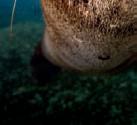

info@aceaquatec.com www.aceaquatec.com


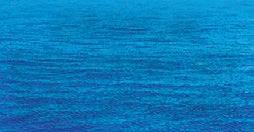




























































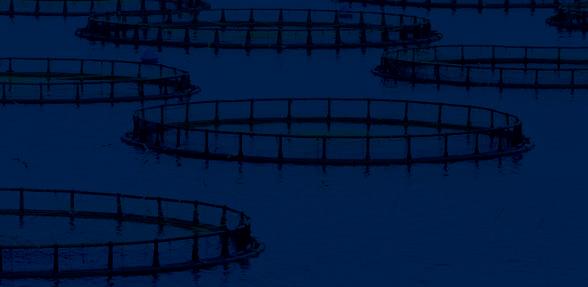
+1 407 995 6490 AquaticED.com DESIGN EQUIPMENT SOLUTIONS We are your source for professional aquatic and aquaculture products and services. Contact us today to learn more! AQUA SOURCE DIRECTORY www.fishfarmermagazine.com 62 GET YOUR BUSINESS NOTICED FOR A WHOLE YEAR, OR SIX MONTHS! Air Compressors Analytical Services Aquaculture Equipment Boat Builders Animal Nutrition Nutritional Analytical Service A commercial analytical service providing advice and analysis to the aquaculture and food and drink sectors across the world. Please contact us for a full list of analytical tests offered. James Dick: j.r.dick@stir.ac.uk Fiona Strachan: fiona.strachan@stir.ac.uk BE THE DIFFERENCE SAFE, GENTLE AND EFFICIENT HANDLING OF LIVE FISH Boat Builders Tel: (+44)1957 711 881 Email:info@fluggaboats.co.uk www.fluggaboats.co.uk HDPE collar, aluminium hull. ALL ELECTRIC, diesel or petrol power ALL THE ADVANTAGES OF A RIB, JUST HARDER Turning conventional approaches... upside down Take control Clynav will turn the way you see PD control upside down. Clynav is like no other PD vaccine it uses Elanco’s unique DNA plasmid technology and has become the leading choice for PD protection in Norway. Clynav is delivered intra-muscularly without the need for an adjuvant. So, with Clynav, you can rest assured of excellent PD protection without the risks associated with conventional vaccines. Take back control of PD with Clynav. It will change your point of view, for good. Clynav brings fresh hope in the fight against pancreatic disease Elanco or its affiliates. © 2021 Elanco or its affiliates. Use medicines responsibly www.noah.co.uk/responsible. Advice should be sought from the Medicine Prescriber. PM-UK-21-0435 04.2021 RLH www.elanco.co.uk CLYNAV Upside Down Ad 297x210 2021.indd 11/05/2021 10:07 Turning conventional approaches... upside down Take control Clynav will turn the way you see PD control upside down. Clynav is like no other PD vaccine it uses Elanco’s unique DNA plasmid technology and has become the leading choice for PD protection in Norway. Clynav is delivered intra-muscularly without the need for an adjuvant. So, with Clynav, you can rest assured of excellent PD protection without the risks associated with conventional vaccines. Take back control of PD with Clynav. It will change your point of view, for good. Clynav brings fresh hope in the fight against pancreatic disease Clynav contains pUK-SPDV-poly2#1 DNA plasmid coding for salmon pancreas disease virus proteins: 5.1 9.4 µg. Legal category in UK. For further information call Elanco Animal Health on +44(0)1256 353131 or write to: Elanco UK AH Limited, First Floor, Form 2, Bartley Way, Bartley Wood Business Park, Hook RG27 9XA, United Kingdom. For further information consult the product SPC. Clynav, Elanco and the diagonal bar logo are trademarks of Elanco or its affiliates. © 2021 Elanco or its affiliates. www.noah.co.uk/responsible. Advice should be sought from the Medicine Prescriber. PM-UK-21-0435 – 04.2021 RLH www.elanco.co.uk CLYNAV Upside Down Ad 297x210 2021.indd 1 Turning conventional approaches... upside down Clynav brings fresh hope in the fight against pancreatic disease. Take back control of PD with Clynav. It will change your point of view, for good. www.elanco.co.uk Fish Health T: +39 0375 254819 info@hsmarine.net www.hsmarine.net Cranes Our new generation, award-winning acoustic deterrents Comply with both Marine Scotland EPS and U.S. MMPA requirements • Create conditioned avoidance so we can put far less acoustic output into the water than older barrier systems Have low duty cycles, low average volume and low frequency to help deter seals, while better safeguarding cetaceans u st c ce an a e a e et n t uc t set u a t a ace ete ents acea uatec c Predators may be smart BUT WE’RE SMARTER Our new generation, award-winning acoustic deterrents Comply with both Marine Scotland EPS and U.S. MMPA requirements Create conditioned avoidance so we can put far less acoustic output into the water than older barrier systems Have low duty cycles, low average volume and low frequency to help deter seals, while better safeguarding cetaceans u st c ce an a e a e et n t uc t set u t a ace ete ents acea uatec c Predators may be smart BUT WE’RE SMARTER Our new generation, award-winning acoustic deterrents Comply with both Marine Scotland EPS and U.S. MMPA requirements Create conditioned avoidance so we can put far less acoustic into the water than older barrier systems low duty cycles, low average volume and low frequency to help deter seals, while better safeguarding cetaceans u st c ce an a e a e et n t uc t set u a t a ace ete ents acea uatec c Predators may be smart BUT WE’RE SMARTER Our new generation, award-winning acoustic deterrents Comply with both Marine Scotland EPS and U.S. MMPA requirements Create conditioned avoidance so we can put far less acoustic output into the water than older barrier systems Have low duty cycles, low average volume and low frequency to help deter seals, while better safeguarding cetaceans u st c ce an a e a e et n t uc t set u a a ace ete ents acea uatec c Predators may be smart BUT WE’RE SMARTER Our new generation, award-winning acoustic deterrents Comply with both Marine Scotland EPS and U.S. MMPA requirements Create conditioned avoidance so we can put far less acoustic output into the water than older barrier systems • Have low duty cycles, low average volume and low frequency to help deter seals, while better safeguarding cetaceans u st c ce an a e a e et n t uc t set u a t a ace ete ents acea uatec c Predators may be smart BUT WE’RE SMARTER Our new generation, award-winning acoustic deterrents Comply with both Marine Scotland EPS and U.S. MMPA requirements Create conditioned avoidance so we can put far less acoustic output into the water than older barrier systems Have low duty cycles, low average volume and low frequency to help deter seals, while better safeguarding cetaceans u st c ce an a e a e et n t uc t set u a t a ace ete ents acea uatec c Predators may be smart BUT WE’RE SMARTER Our new generation, award-winning acoustic deterrents Comply with both Marine Scotland EPS and U.S. MMPA requirements Create conditioned avoidance so we can put far less acoustic output into the water than older barrier systems • Have low duty cycles, low average volume and low frequency to help deter seals, while better safeguarding cetaceans u st c ce an a e a e et n t uc t set u a t a ace ete ents acea uatec c Predators may be smart BUT WE’RE SMARTER Our new generation, award-winning acoustic deterrents Comply with both Marine Scotland EPS and U.S. MMPA requirements Create conditioned avoidance so we can put far less acoustic output into the water than older barrier systems Have low duty cycles, low average volume and low frequency to help deter seals, while better safeguarding cetaceans u st c ce an a e a e et n t uc t set u a t a ace ete ents acea uatec c Predators may be smart BUT WE’RE SMARTER
Our new generation, award-winning acoustic deterrents Comply with both Marine Scotland EPS and U.S. MMPA requirements Create conditioned avoidance so we can put far less acoustic output into the water than older barrier systems Have low duty cycles, low average volume and low frequency to help deter seals, while better safeguarding cetaceans u st c ce an a e a e et n uc t set u a t a ace ete ents acea uatec c Predators may be smart BUT WE’RE SMARTER Anti-Predator Fish Pigmentation Panaferd.com HEALTH AND NATURAL COLOR Anti-Fouling ANTI-FOULING SPECIALIST Suppliers of Coatings and Anti-Fouling Paints Tel: +47 66 80 82 15 Fax: +47 66 80 25 21 post@netkem.no www.netkem.no Nets & Cages Specialized in the tough high energy sites CAGE NETS AND MOORINGS Specialized in the tough high Specialized in the tough high energy sites CAGE NETS AND MOORINGS From exposed to protected Learn more at dsm-firmenich. com/anh
Tel:
e-mail:











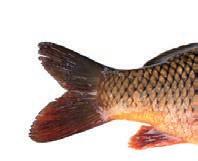







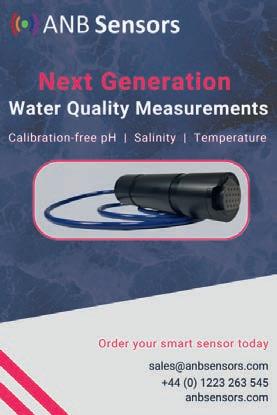

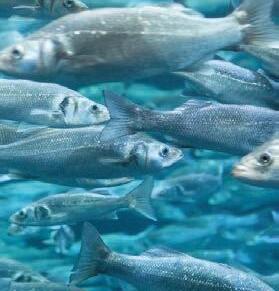














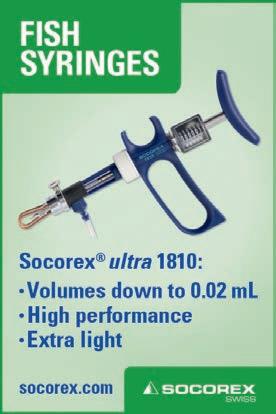






www.fishfarmermagazine.com 63 Call Janice on 0131 551 7925 or email: jjohnston@fishfarmermagazine.com 12 MAGAZINES FOR £895 6 MAGAZINES FOR £595 Nets & Cages PUMPS FOR AQUACULTURE Specialists in long-lasting, corrosion-resistant pumps, with high uptime and low energy consumption. www.lykkegaard-as.com Propeller Pumps RAS Equipment Pumps & Systems blutan Quality products supported by cer fied customer care balmoral‐blutanq.com Jonathan.smith@balmoral.co.uk A wide range of applications, including lobster, oyster, mussel and prawn cultivation Artificial seawater free from bacteria, algae and toxic detritus found in seawater 15kg and 25kg bags Salt Sensors Sensors Salmon and seafood logistics For your temperature controlled goods Transport & Logistics Everyvalve Ltd Valves & Fittings 1/2”-20” Metal & Plastic GATE BALL BUTTERFLY AUTOMATION United Kingdom - EN6 1TL (44)-01707-642018 Fax 646340 sales@everyvalve.com Valves Vaccination Quality Pellets Ourexpertsworkinpartnershipwith aquafeedproducersworldwide. Betterpelletquality, moreefficiently. Wehelpthemmeetthe demandforhighvolumesof qualityrations,andto maximizepelletqualitywhich issocriticaltoperformance. Getthefullguidetoday British Made Cage Nets In Nylon & Dyneema
Exclusion Nets Anti Foul Coatings
- Large Stock All Sizes Floats, Buoys, Cushion Buoys Chain & Chain Weights Tarpaulins
Predator
Ropes
01253 874891
john@borisnets.co.uk web: www.borisnets.co.uk QUALITY NETS FOR FISH FARMING Nets & Cages PIP E•V ALVES FITTINGS POLYETHYLENE www.epco-plastics.com office: 0113 249 1155







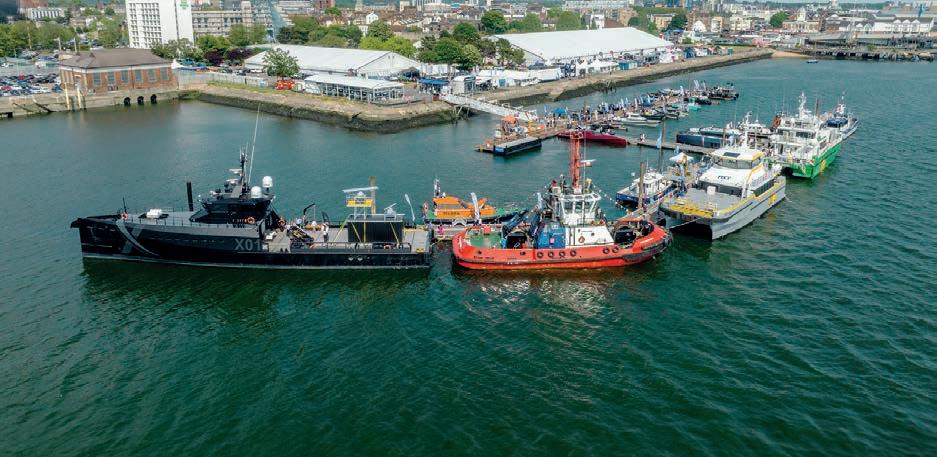
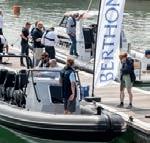




Seawork celebrates its 25th anniversary in 2024!
The 25th edition of Europe’s largest commercial marine and workboat exhibition, is a proven platform to build business networks.
Seawork delivers an international audience of visitors supported by our trusted partners.
Seawork is the meeting place for the commercial marine and workboat sector.

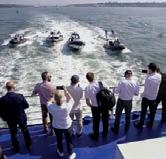
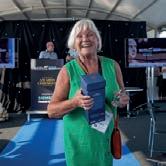




JUNE Southampton United Kingdom 11 13 2024 TO
Discover 12,000m2 of undercover halls that feature over 400 exhibitors with more than 70 vessels, floating plant and equipment on the quayside and pontoons.
Experience Speed@Seawork on Monday 10 June in Cowes - a sector specific event for fast vessels operating at high speed forsecurity interventions and Search & Rescue.
Celebrate innovation and excellence in the commercial marine industry at The European Commercial Marine Awards (ECMAs) on Tuesday 11 June.
Learn from the industry experts through the Conference programme, that helps visitors to keep up to date with the latest challenges and emerging opportunities.
Opportunities to expand the maritime skills base at the Careers & Training Day on Thursday 13 June 2024 that delivers a programme focused on careers in the commercial marine industry.
www.fishfarmermagazine.com 64
For more information visit: seawork.com contact: +44 1329 825 335 or email: info@seawork.com #Seawork Media partner MARITIMEJOURNAL COMMERCIAL MARINE BUSINESS REGISTER NOW in partnership with Seawork2024_130x190_HP.indd 1 09/02/2024 10:16
Industry DIARY
The latest aquaculture events, conferences and courses
MAY 24
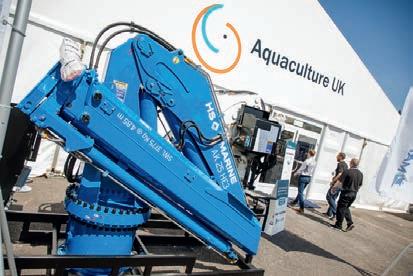
AQUACULTURE UK 2024
www.aquacultureuk.com
Aviemore, United Kingdom
May 14-15, 2024
Aviemore will once again be the venue for this biennial trade fair and conference. It is undoubtedly the most important aquaculture exhibition held in the British Isles. The show has a tremendous following and with increased investment for 2024 it promises to reach even further across the broader aquaculture markets in both the UK and Europe.
BLUE FOOD INNOVATION SUMMIT
www.bluefoodinnovation.com
London, United Kingdom
May 21-22, 2024
Building Blue Resilience: Navigating Food Security, Biodiversity and Sustainability
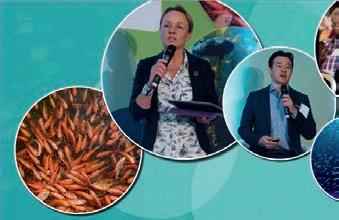
JUNE 24
SEAWORK
www.seawork.com
Southampton, United Kingdom
June 11-13, 2024

Europe’s largest on-water commercial marine and workboat exhibition.
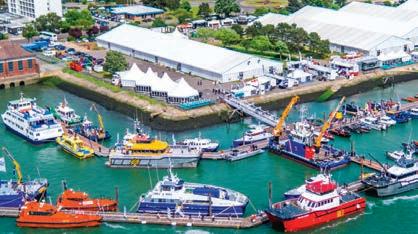
SEAGRICULTURE EU 2024
www.seagriculture.eu
Tórshavn, Faroe Islands
June 18-20, 2024
Venue: The Nordic House
Leading conference for the seaweed sector in Europe.
JULY
24
ASIAN PACIFIC AQUACULTURE 2024
www.was.org
Surabaya, Indonesia
NEW DATES July 2-5, 2024
Aquaculture – Driving the Blue Economy is the theme of the conference at the Grand City next year.
AUGUST 24
AQUA 2024
www.aquaeas.org - www.was.org
Copenhagen, Denmark
August 26-30, 2024
Aquaculture conference and exhibition organised by the European and World Aquaculture Society.
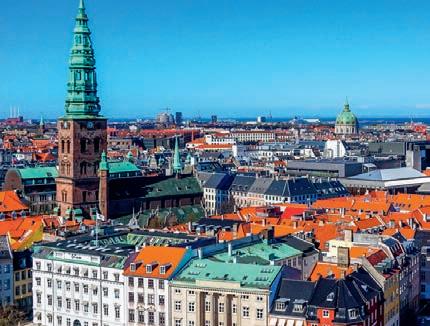
SEPTEMBER 24
SEAGRICULTURE USA 2024
www.seagriculture-usa.com
Ketchikan, Alaska
September 11-12, 2024
Leading conference for the seaweed sector in the US.
LATIN AMERICAN & CARIBBEAN AQUACULTURE 2024
www.was.org
Medellin, Colombia
September 24-27, 2024
NOVEMBER 24
SCOTTISH SEAWEED INDUSTRY ASSOCIATION
www.ssia.scot
Corran Halls, Oban UK
November 19-21, 2024
SSIA is an organization dedicated to the growth and innovation of the seaweed industry.
AFRAQ 2024
www.was.org
Hammamet, Tunisia
November 19-22, 2024
DECEMBER
24
ALGAEUROPE 2024
www.algaeurope.org
Athens, Greece
December 10-13, 2024
Venue: Grandior Hotel Prague Conference on science, technology and business in the Algae Biomass sector.
MARCH 25
AQUACULTURE 2025
www.was.org
New Orleans, Louisiana USA
March 6-10, 2025
SEAGRICULTURE ASIAPACIFIC 2025
seagriculture-asiapacific.com
Adelaide, Australia 18-20 March 2025
APRIL 25
WORLD AQUACULTURE 2025 CHINA
www.was.org
Qingdao, China
April 24-27, 2025
MAY 25
AQUAFUTURE
Website coming soon
Vigo, Spain
May 20-22, 2025
Venue: Ifevi Fairgrounds
SPAIN 2025
An international meeting space for the Spanish aquaculture industry.
INDUSTRY DIARY www.fishfarmermagazine.com 65
The vegetarian oyster
By Nick Joy
ALONG time ago, we were trying to grow seaweed and sea urchins alongside our salmon. The approach had many highly technical names, but I like to call it integrated aquaculture. The problems were many, not least in regulation. In the end we failed because growing salmon is difficult enough for most people, but I am still very glad we tried.
In the process we attracted the attention of the press. We became inundated with calls from a large number of rather dim journalists. One such kept me on the phone for a long time, asking many rather silly questions. He was intrigued by what seaweed tasted like and in a weak moment I said it tastes like the sea or slightly like an oyster. When the article came out it said something like “is the world ready for a vegetarian oyster?” I didn’t really take much notice as it was hardly mind-blowing stuff.
Imagine my shock a few days later when the phone rang, and the person announced that it was “Peter”. My son is called Peter, so I was at least willing to listen for a second or two. It transpired that this call was from PETA, the malign group who claim to care about animals. I then received a lecture about calling seaweed a vegetarian oyster. I’d like to tell you that I can remember it word for word but I’m afraid it was such tripe I can’t remember what she said. The gist of it was that I was a bad person, and they might to decide to make our life difficult. I was not bothered, but if I had known how much money they raised yearly at that time, I might have been a little more nervous. I’m glad to say I would still do what I did, which was to send them packing with a flea in their ear.
Over the years I became more accustomed to seeing PETA annoying people. They hate farming, riding and even keeping pets. They assume that they have been elected judge jury and executioner, assuming moral superiority at all times.
I have kept an eye on PETA because I had a feeling that they were becoming greedy, but also because I felt that their rigidity would eventually bite them in the backside. Now they have been bitten and they have had a major funding collapse. The reason is that these animal-loving activists had dog pounds to take strays and other animals into care in order to rehouse them. There have been multiple cases reported of their activists taking pets from outside people’s homes, which were not strays. When people started to look into the pounds they discovered that PETA was euthanising 72% of the animals that were kept in its pounds. In fact the quote below shows how serious the situation has become.
TheWashington Postreported that in 2015, PETA “… euthanized more than 80% of the animals in its care last year, a rate so shockingly high that Virginia lawmakers passed a bill [SB 1381] in February - nearly unanimously - to define a private animal shelter as a place where the primary mission is to find permanent homes for animals in this life, not send them on to the next.”
The massacre continues and just in case you think that this sort of kill rate is normal for a dog pound, the normal rate is between 10% and 20%. These passionate animal
”We and our government treat these people as if they have moral superiority
lovers are taking people’s money in order to lecture others whilst they kill the vast majority of the animals given to them to care for. The hypocrisy beggars belief. Why is this relevant to fish farming? I feel it is an abject lesson in how we treat our critics. Our most vociferous critics, lecturing us on welfare, environment etc, come from a sport (so called) which catches fish, plays them till they are exhausted then releases them to die or be eaten by the nearest predator. Yet we and our government treat these people as if they have moral superiority. They don’t. Theirs is an industry which used to make money and because they didn’t manage it or invest in it, the quality slipped. They still don’t invest in it in any meaningful way and so the decline continues, with them blaming anyone and everyone else for it.
I cannot sit idly by and let the hypocrisy go on without calling it out. I see little difference between PETA and the wild salmonid lobby. PETA have got their comeuppance and I hope the wild bunch get theirs too.
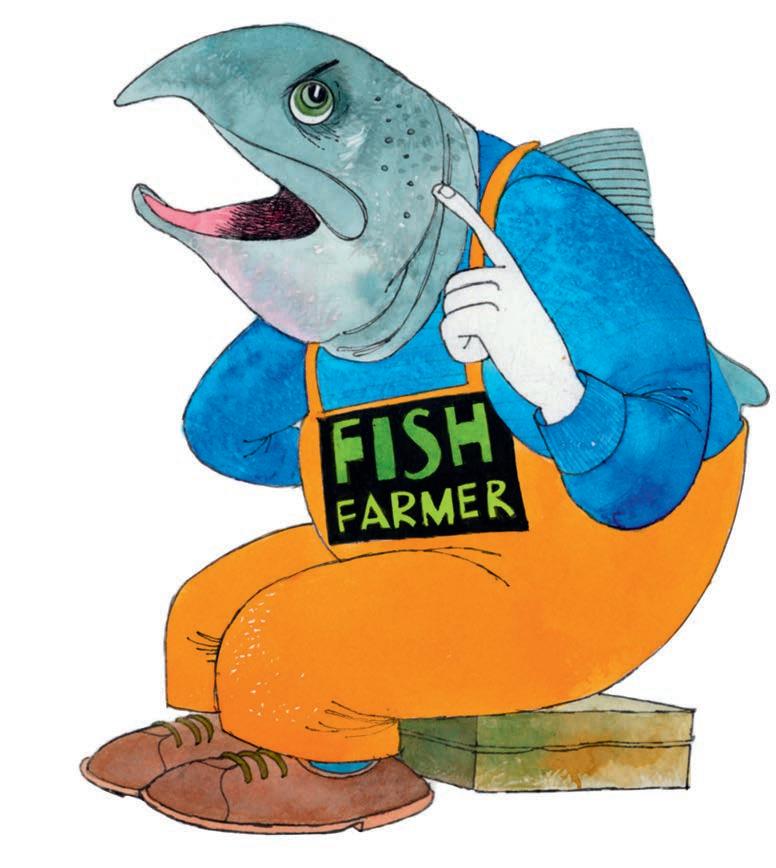
www.fishfarmermagazine.com OPINION – INSIDE TRACK 66




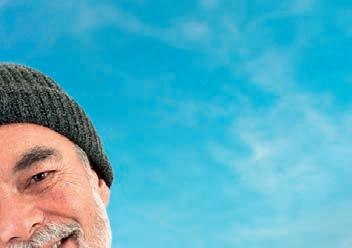





















































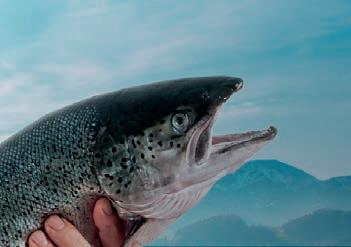
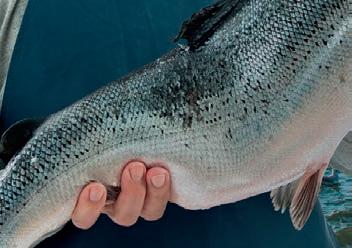





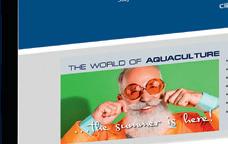
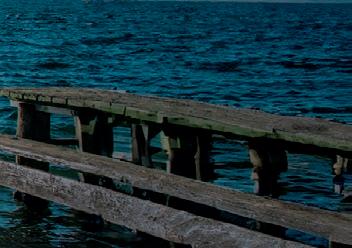




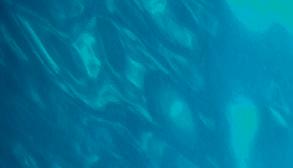














































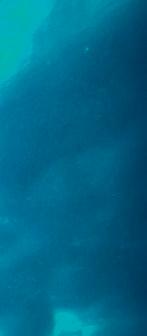






www.fishfarmermagazine.com 19 www.fishfarmermagazine.com 87 Backed by the UK’s leading supermarkets, regulators, Less stress, gaping, and bruising Suitable for salmon, trout, tilapia, seabass, seabream, yellowtail, and prawns WELFARE FIRST in-water electric stunning 22 - 24 August, booth G-726 Ace Aquatec.indd 1 28/06/2023 11:55:45 Magazine Fish Farmer SERVING WORLDWIDE AQUACULTURE SINCE 1977 E: subscriptions@warnersgroup.co.uk T: 01778 392014 Fish Farmer GREEN-ISH? The new deal at Holyrood BOATS Sector review NET BENEFITS Containment solutions AQUA NOR The trade show returns in style SEPTEMBER 2021 Bright futures Great careers in aquaculture ff09 Cover-final.indd 13/09/2021 18:34:47 SUBSCRIBE NOW! Prices from £67.50 for DD £75.00 for non DD (INCLUDING P&P) VERSIONPRINTED FOR ALL THE LATEST DAILY NEWS AND INDUSTRY INFORMATION Sign up to our newsletter to get the latest news directly to your inbox! VISIT THE Fish Farmer WEBSITE www.fishfarmermagazine.com

Clynav, Elanco and the diagonal bar logo are trademarks of Elanco or its af liates. ©2023 Elanco. PM-UK-23-0482 We’re making PD history Pioneering a brighter future for PD control is in our DNA www.elancoaquaglobal.com





































































































































































































































































































 Above: arie es of seafoo
Opposite: olloc ish
Above: arie es of seafoo
Opposite: olloc ish

















































 Opposite: New Zealand king salmon farms
Opposite: New Zealand king salmon farms



































































 Opposite: he e hi i on halls at ran ia
Opposite: he e hi i on halls at ran ia












































































































































































































































































































































































































































































































































